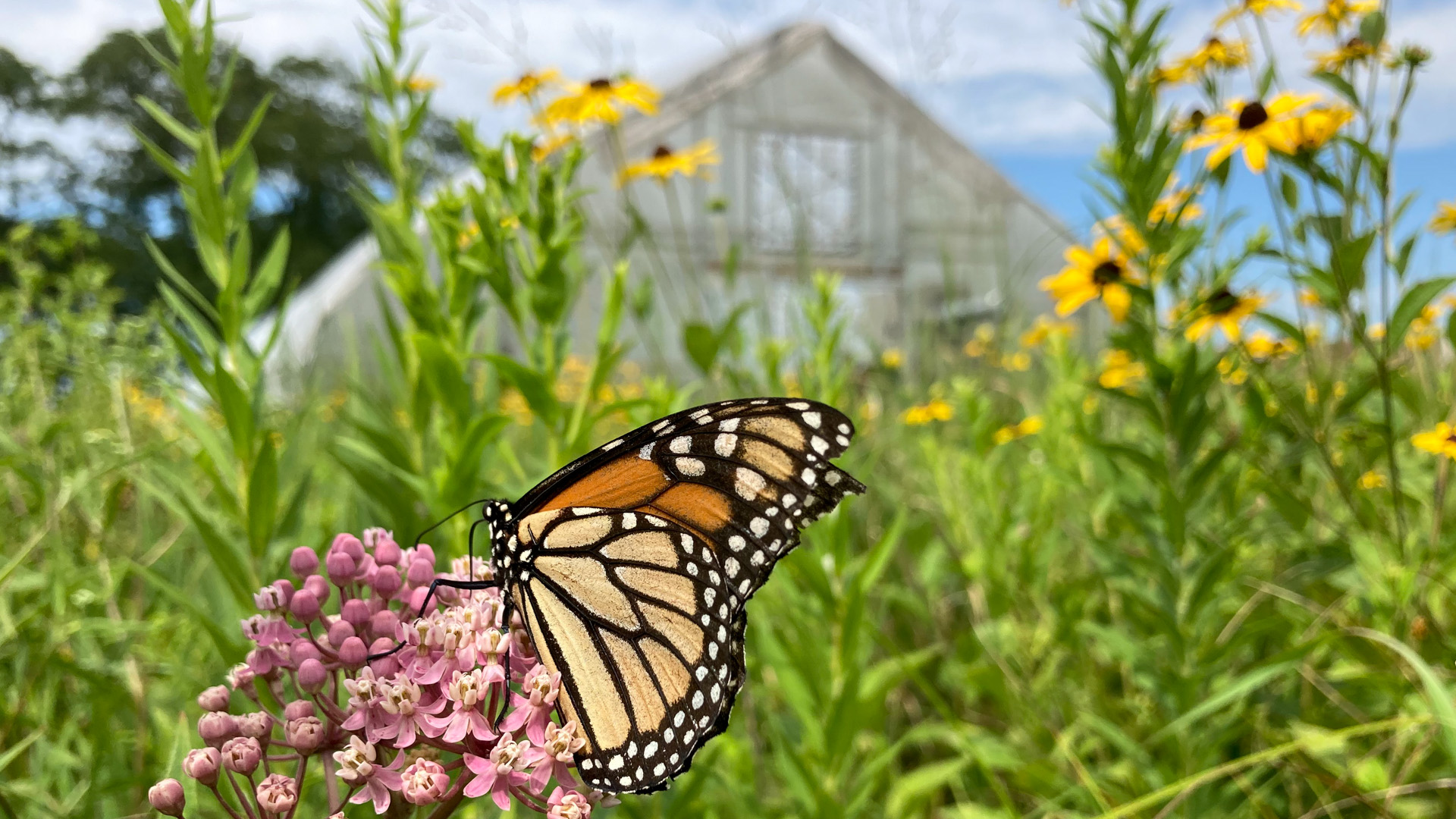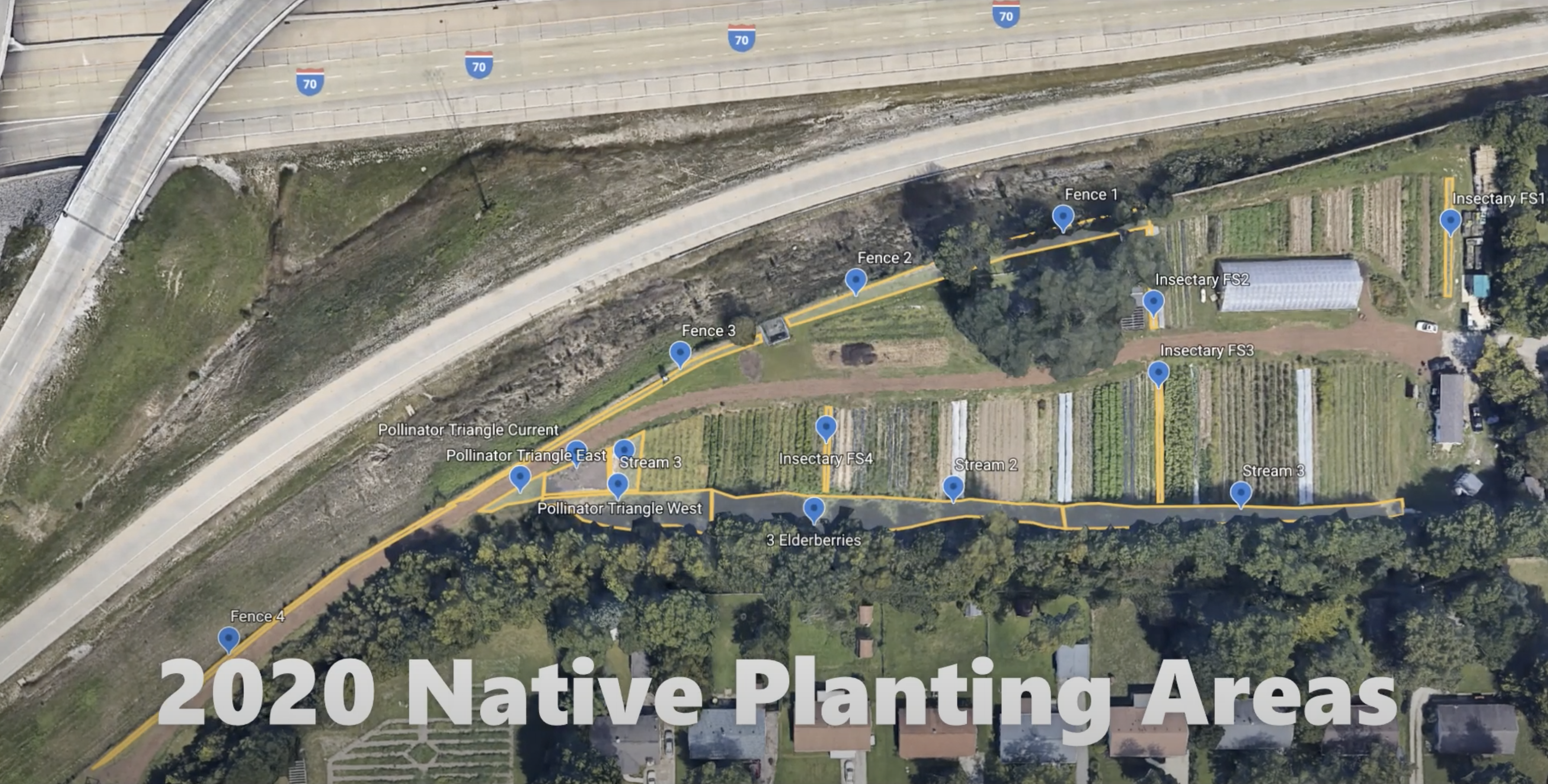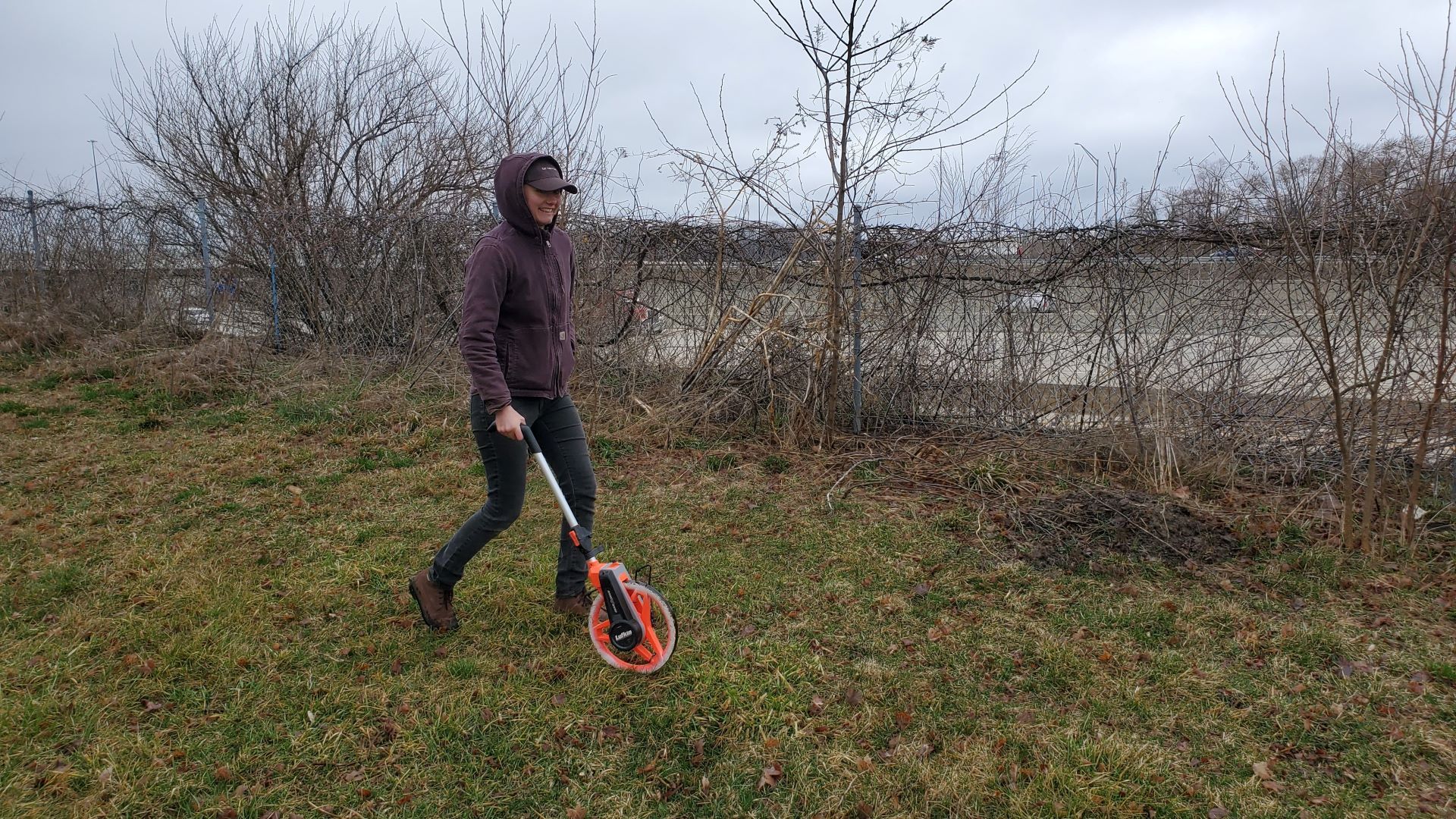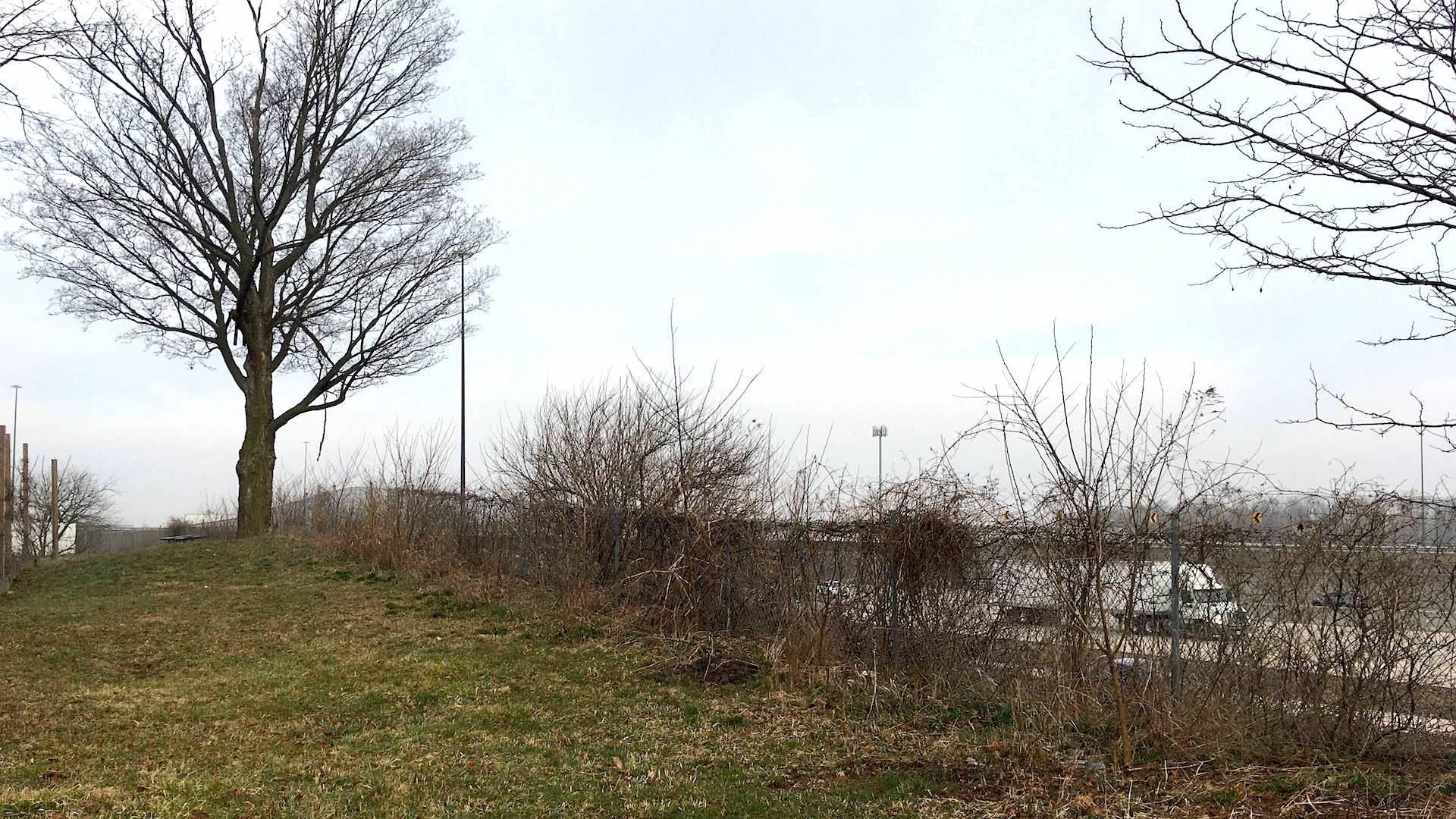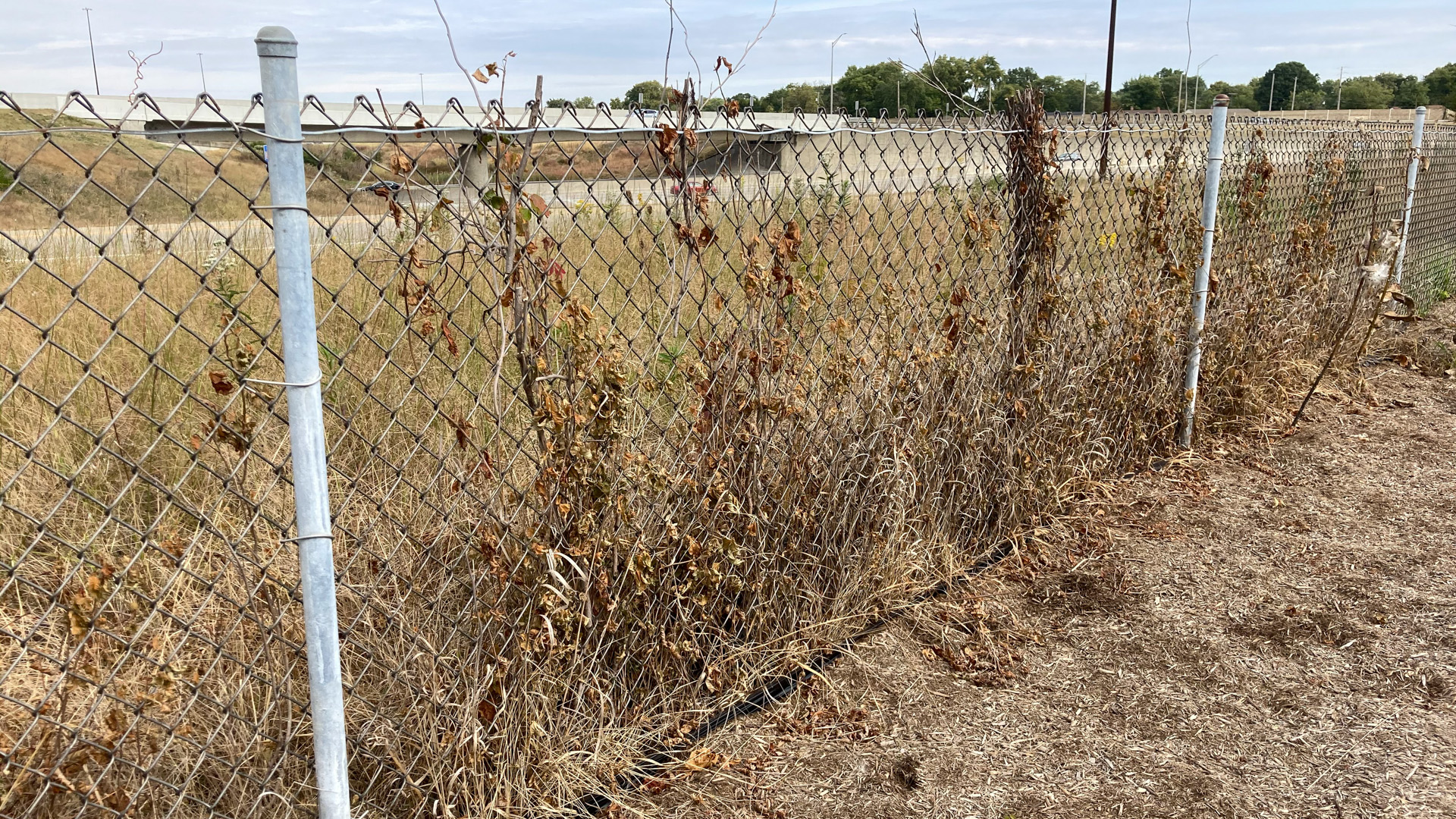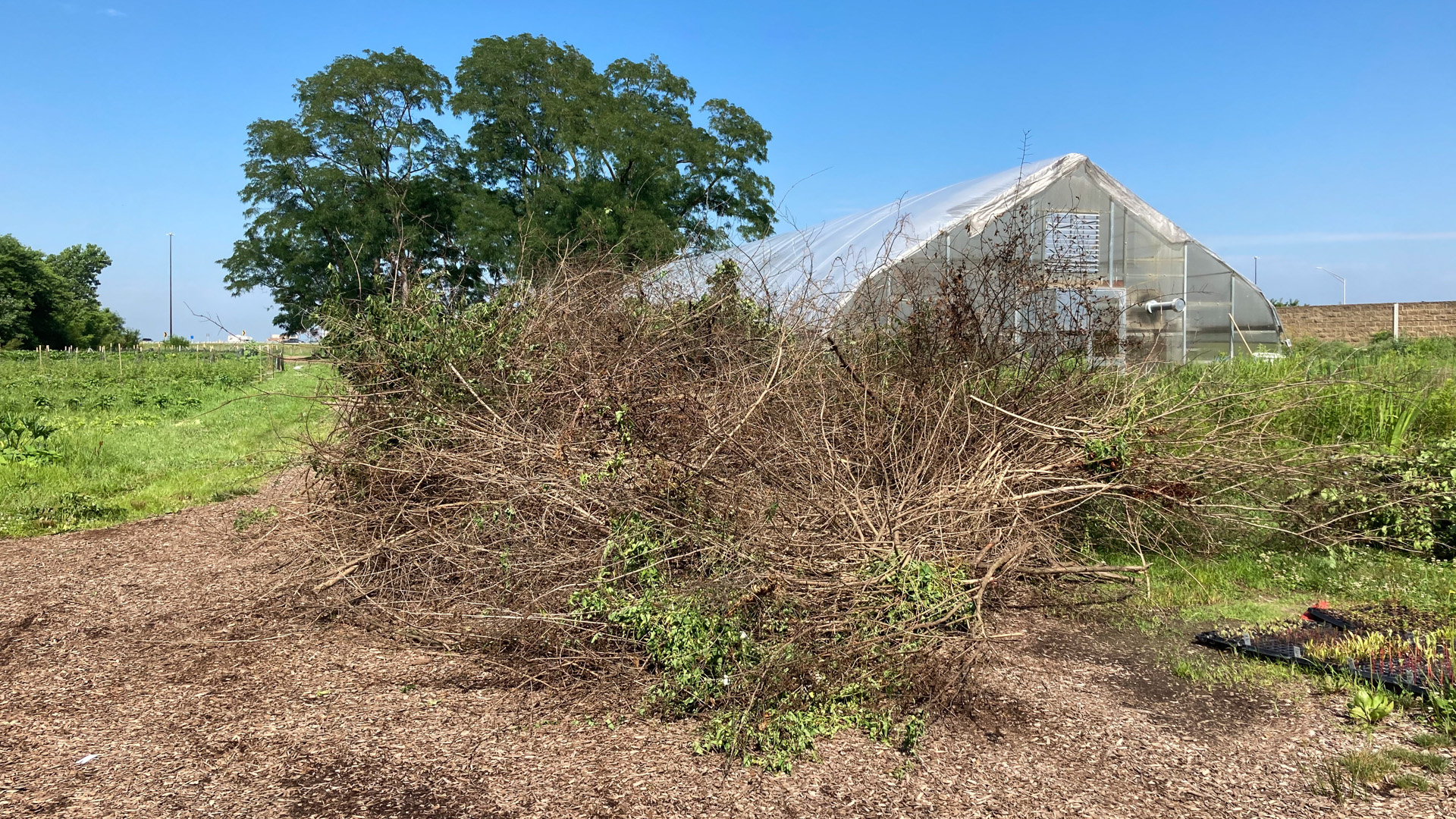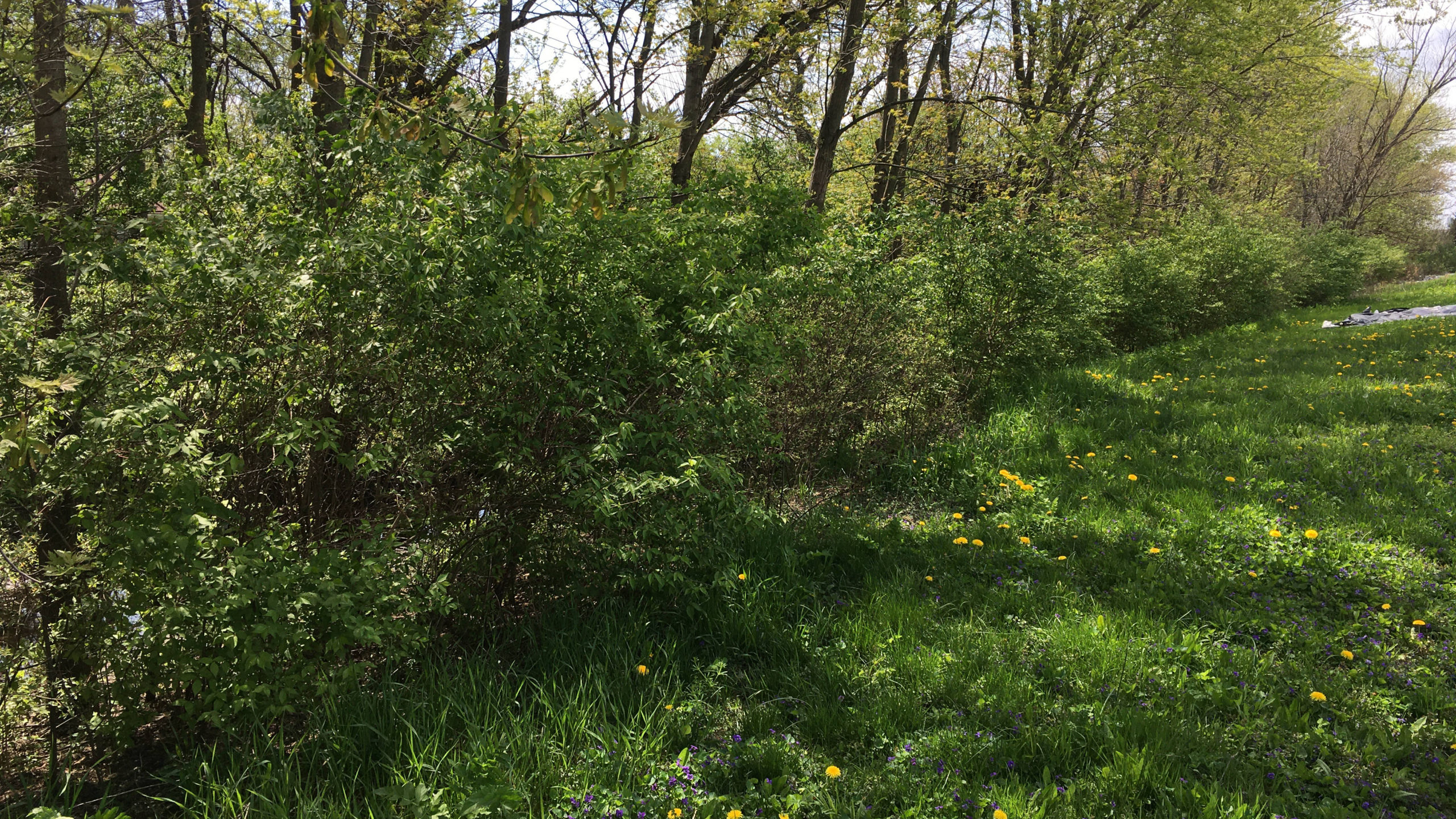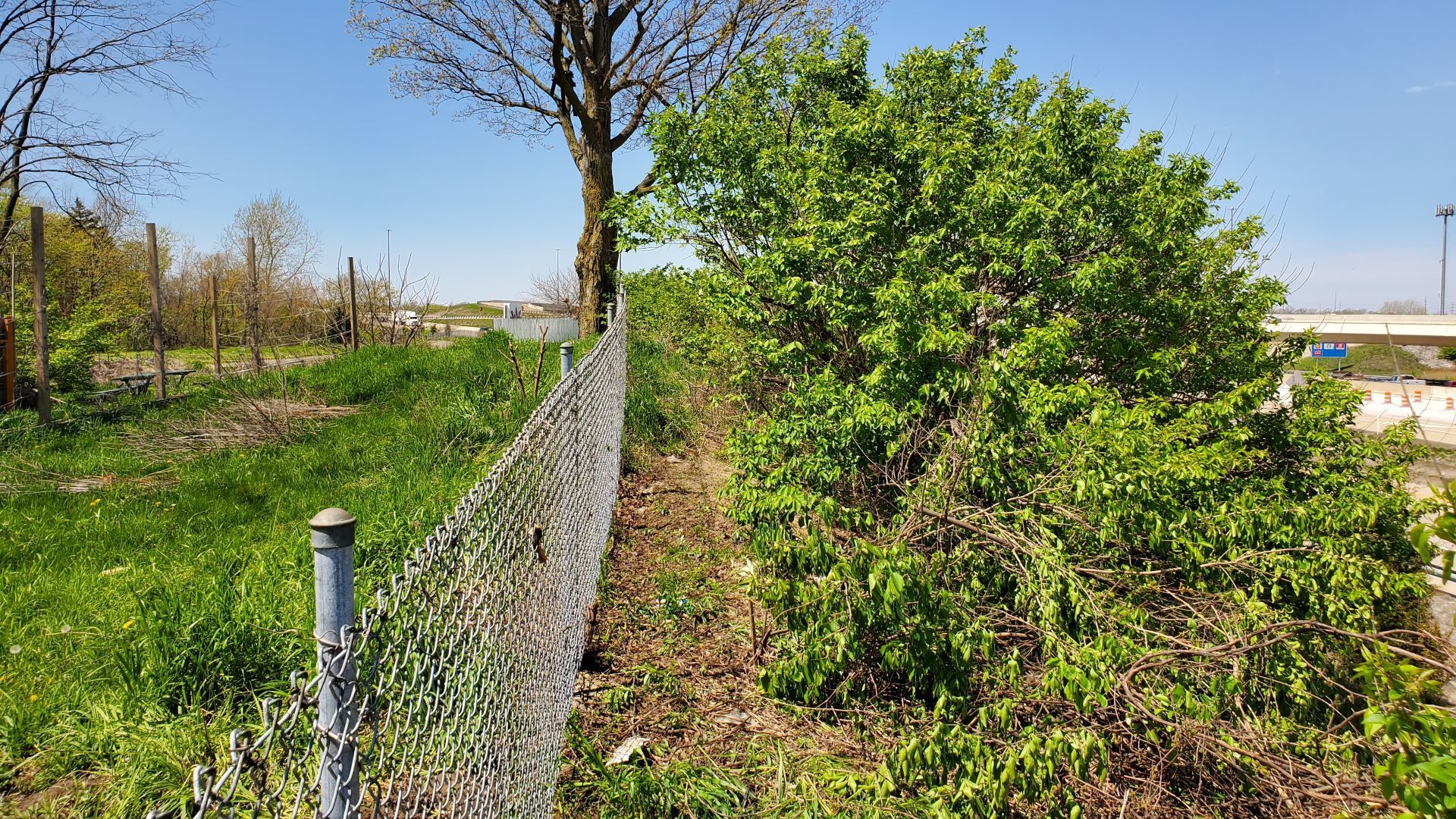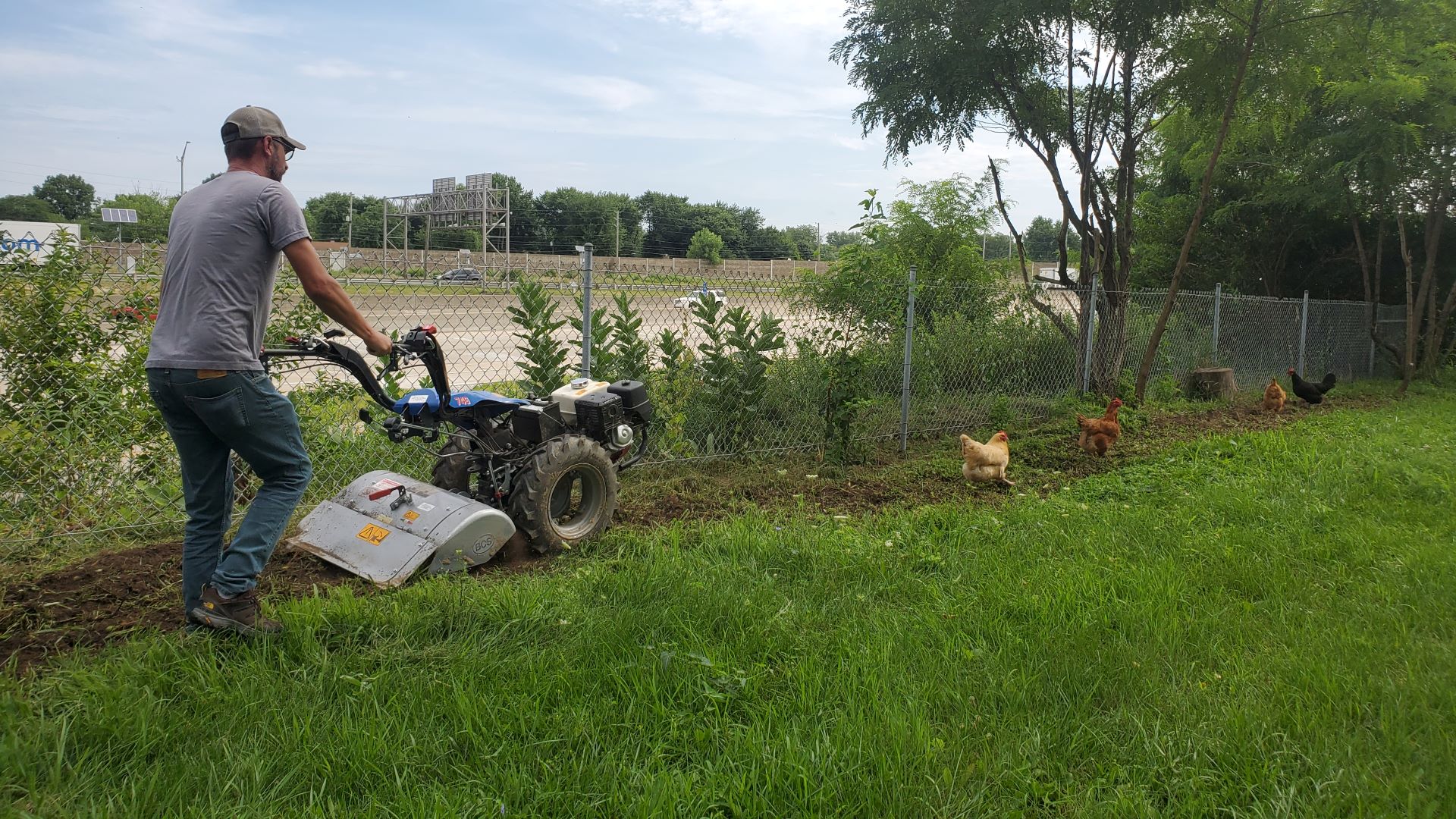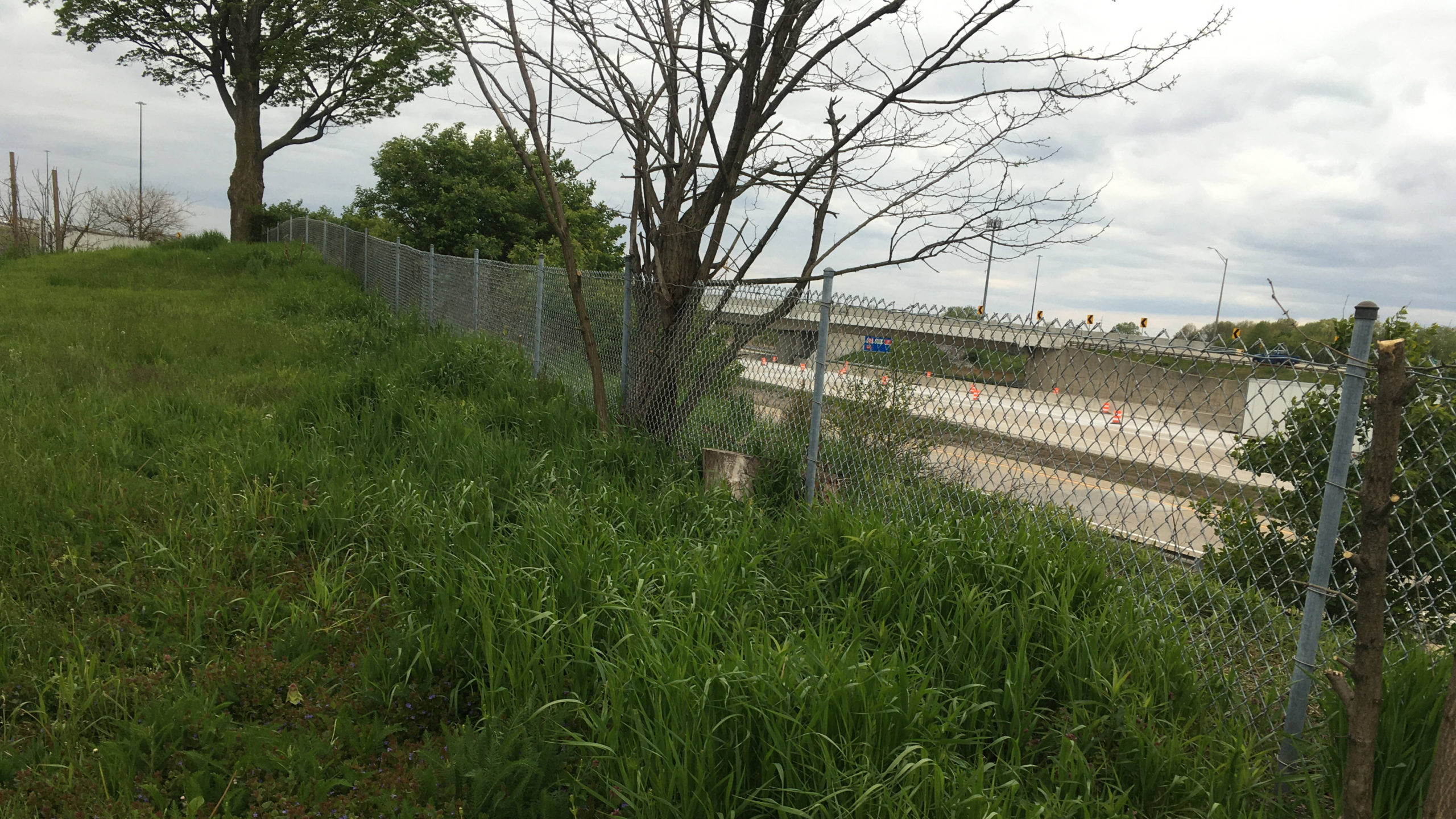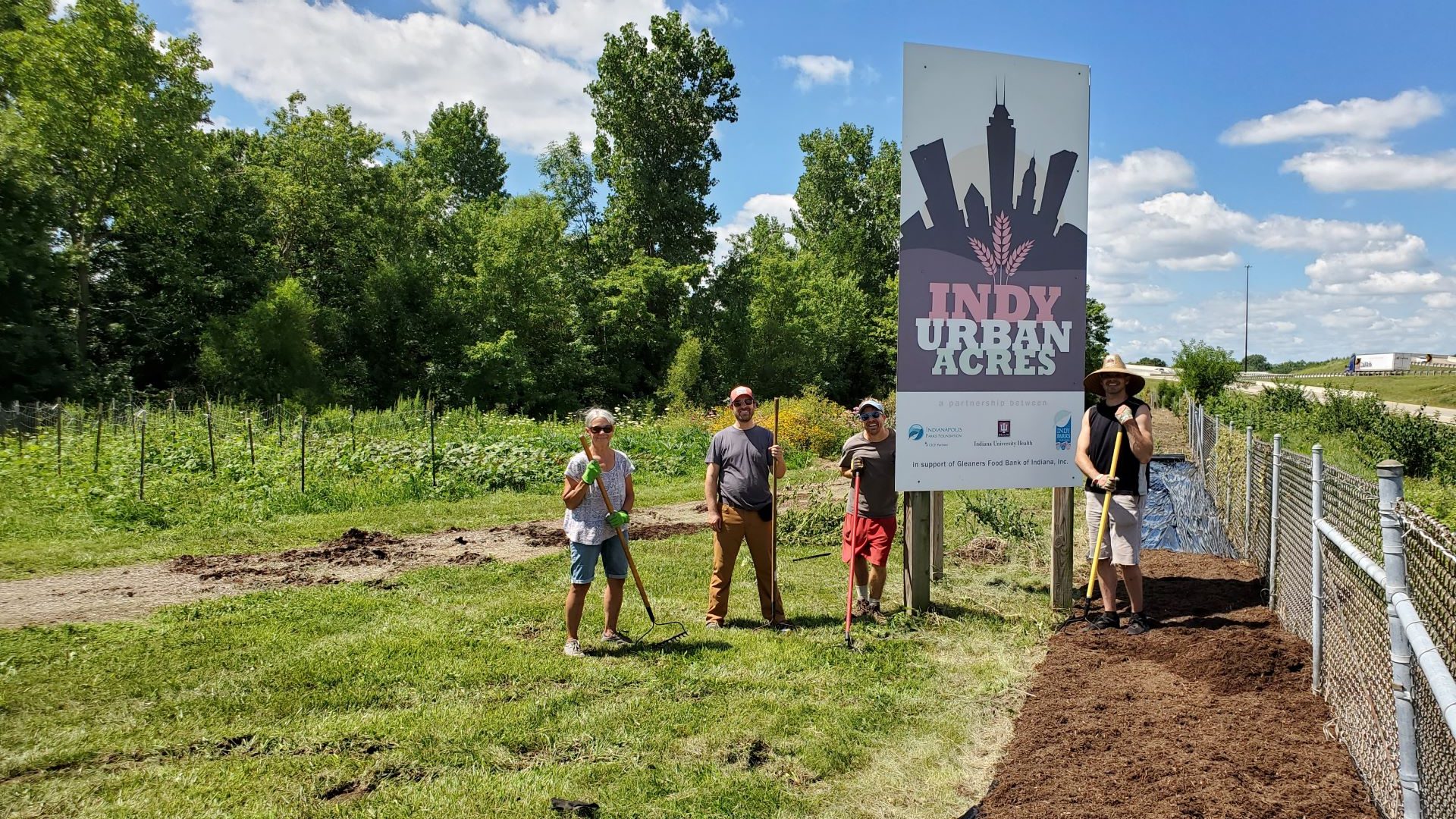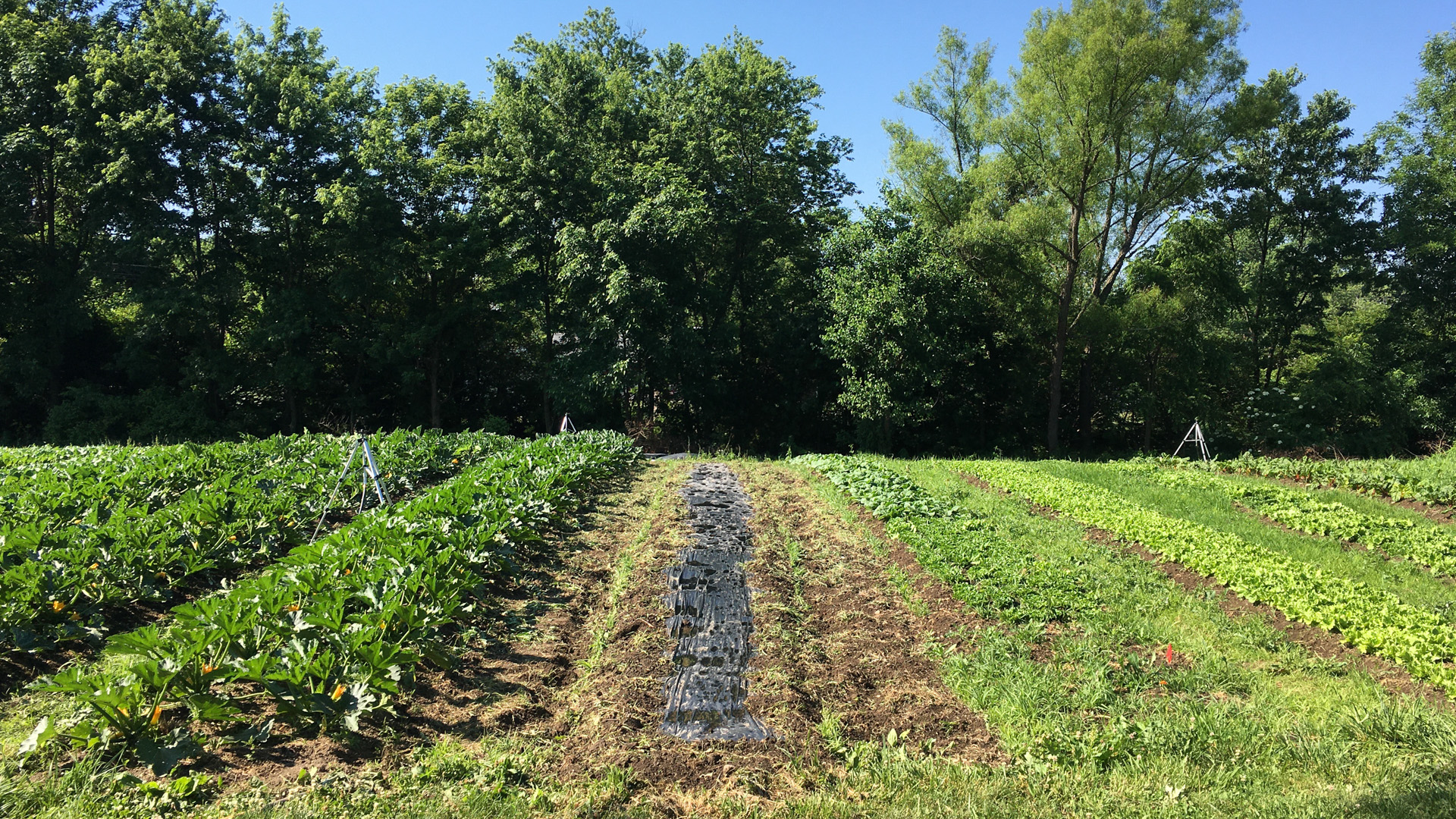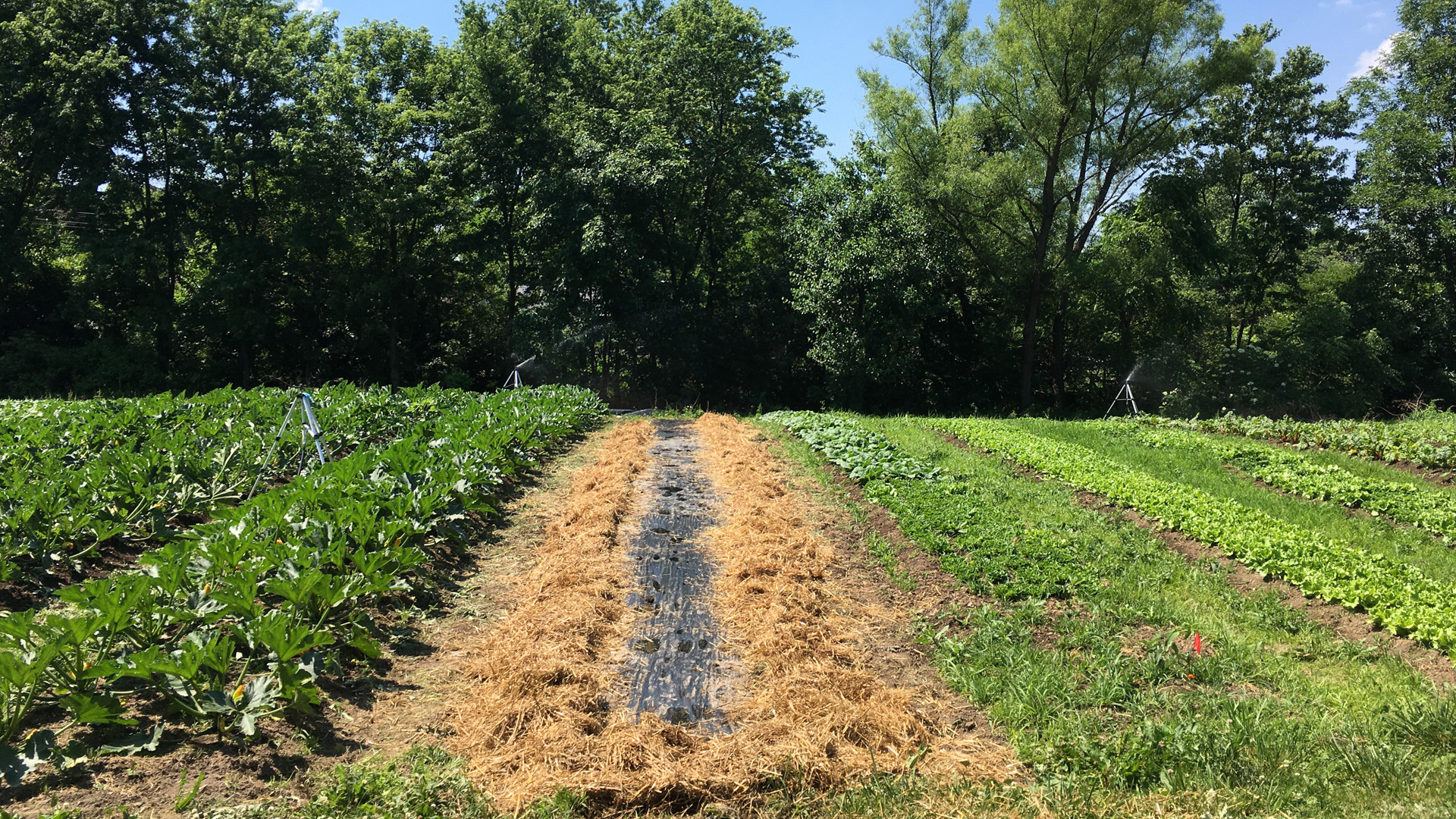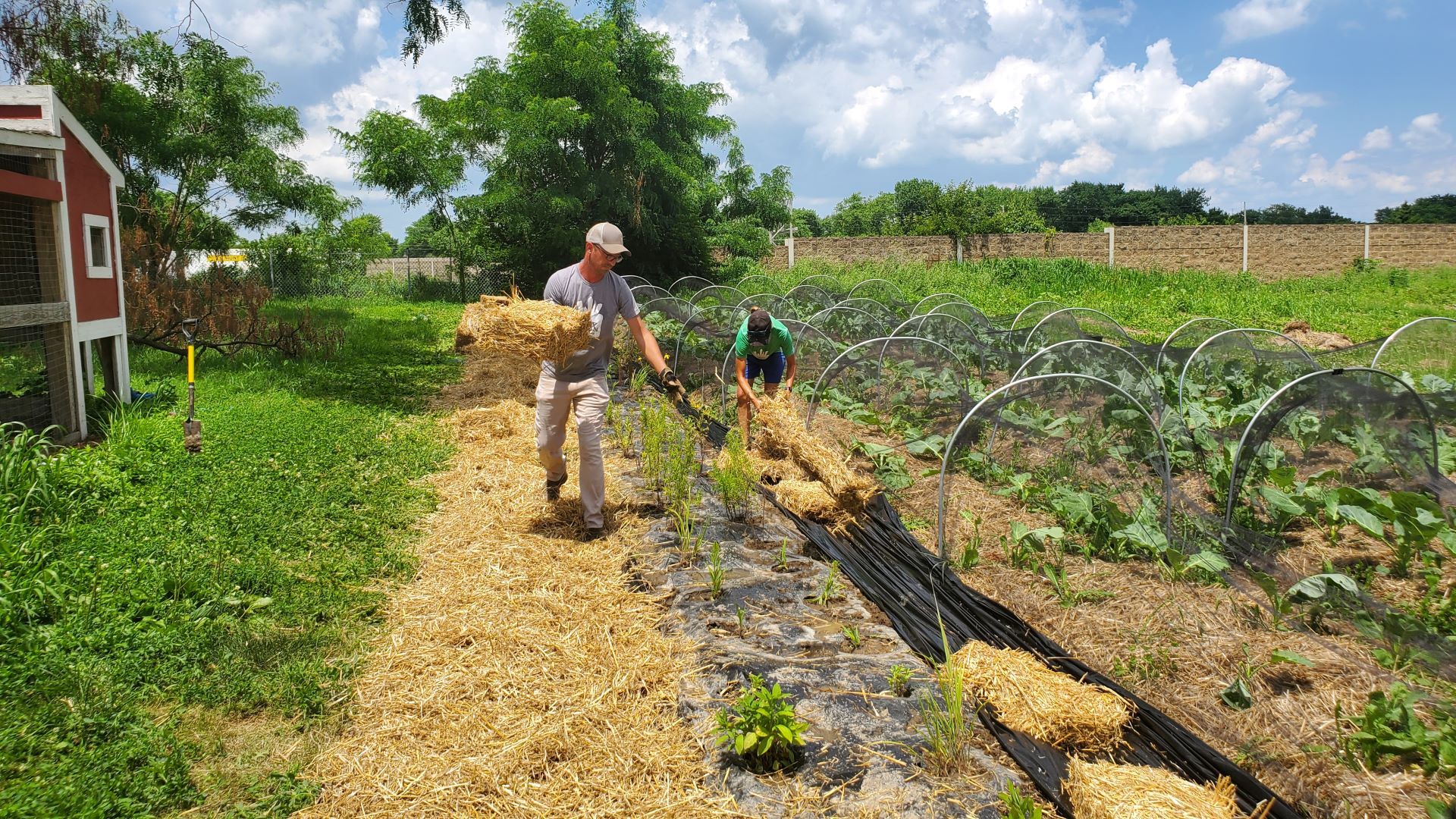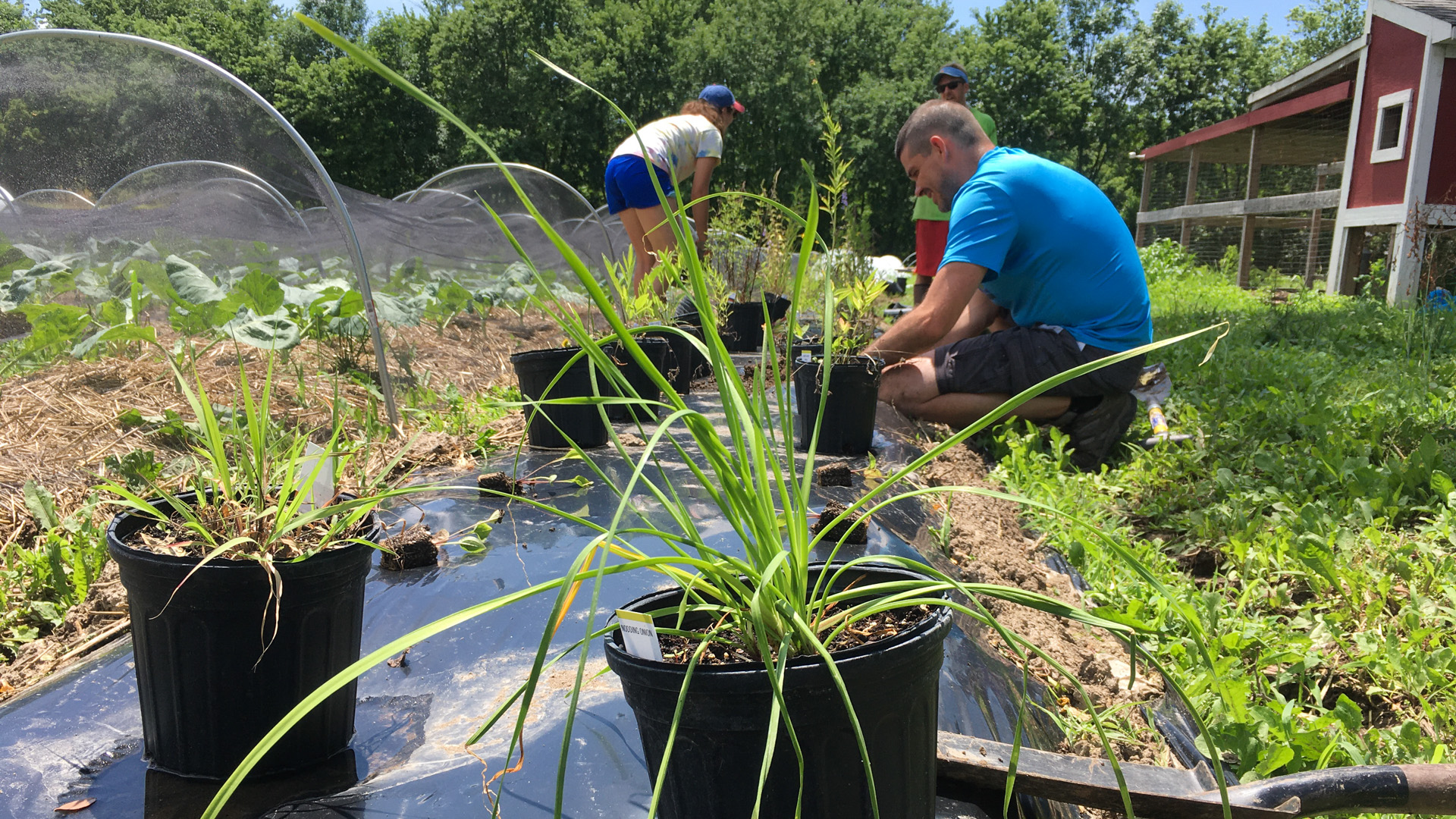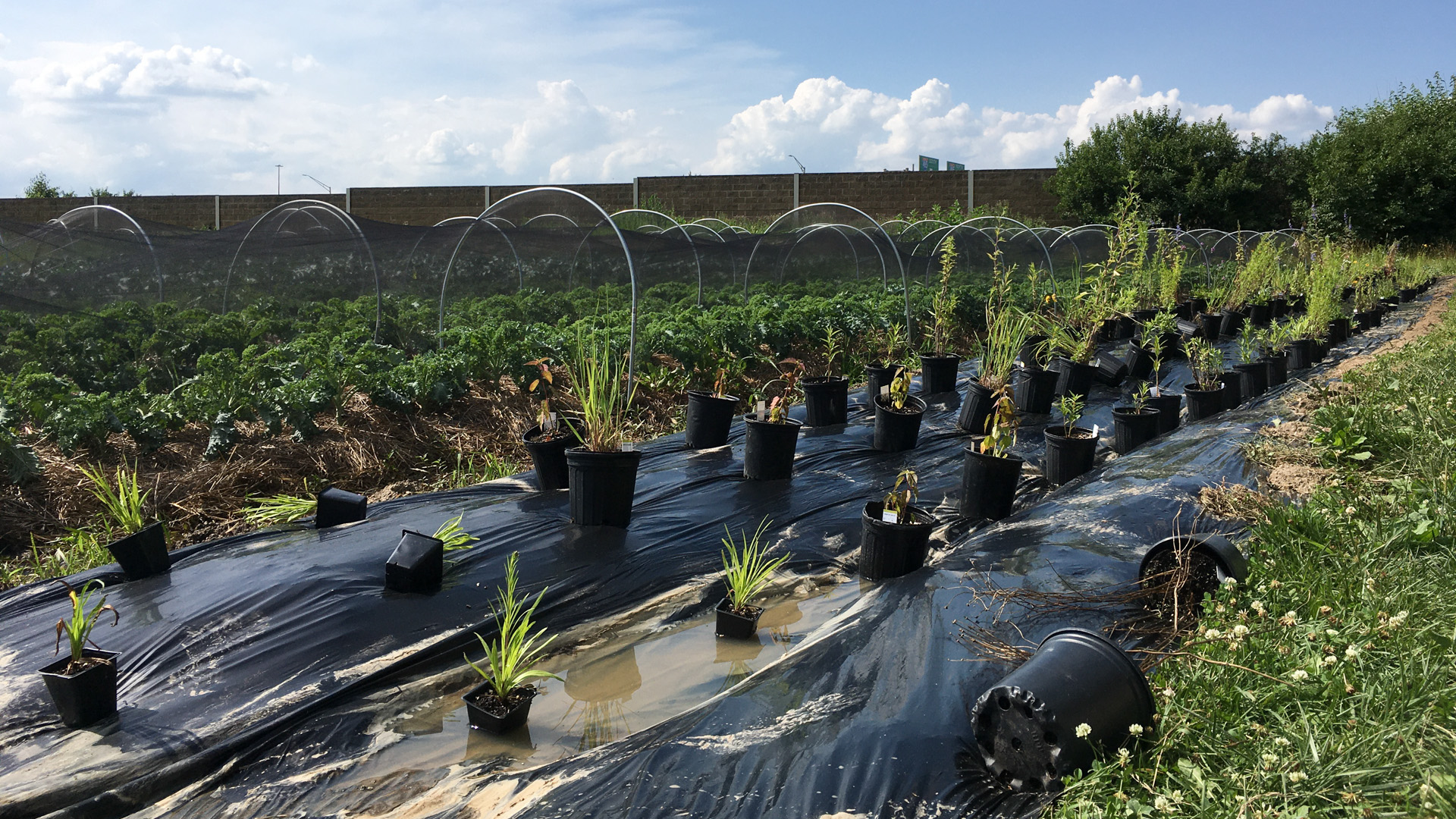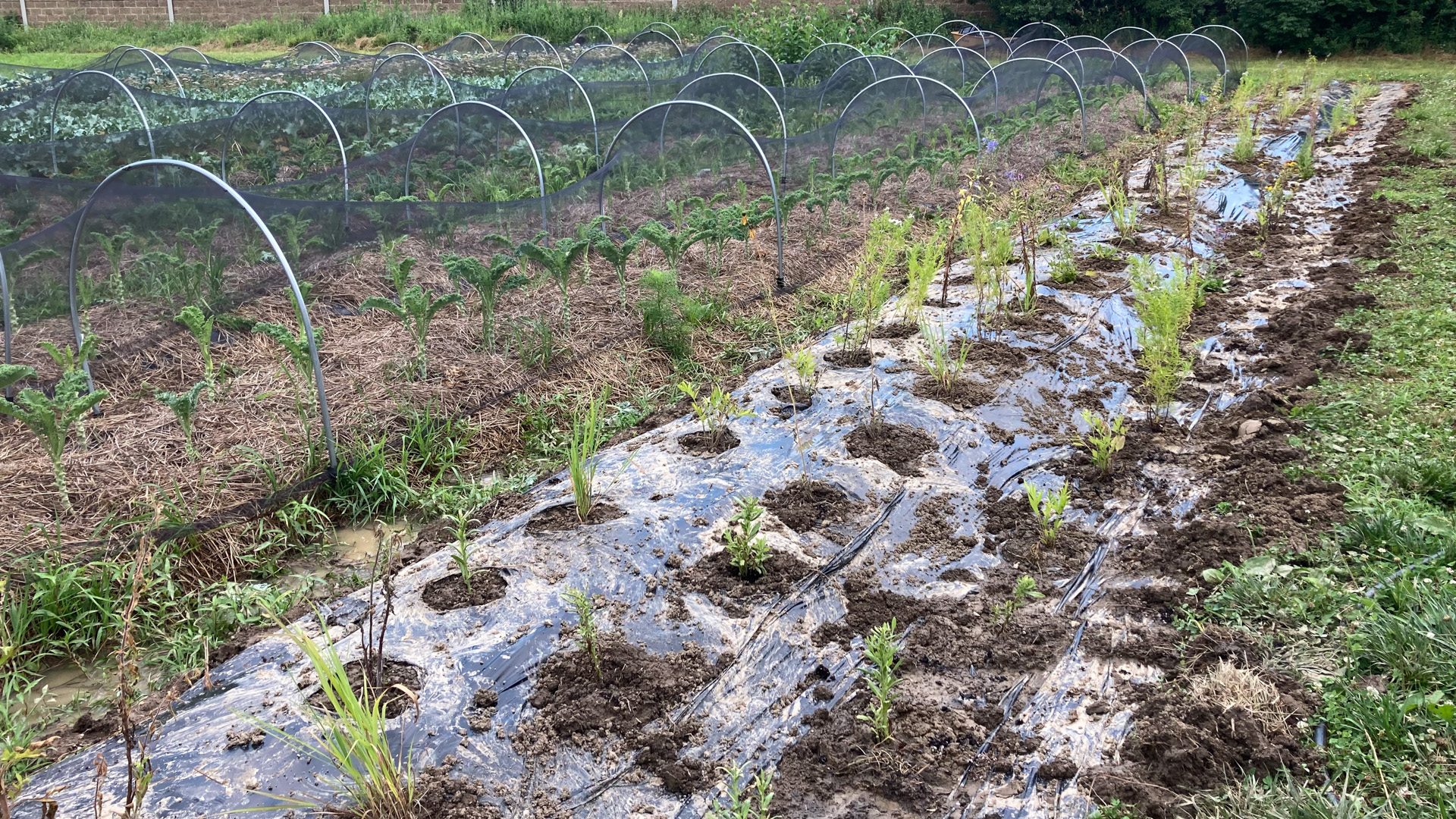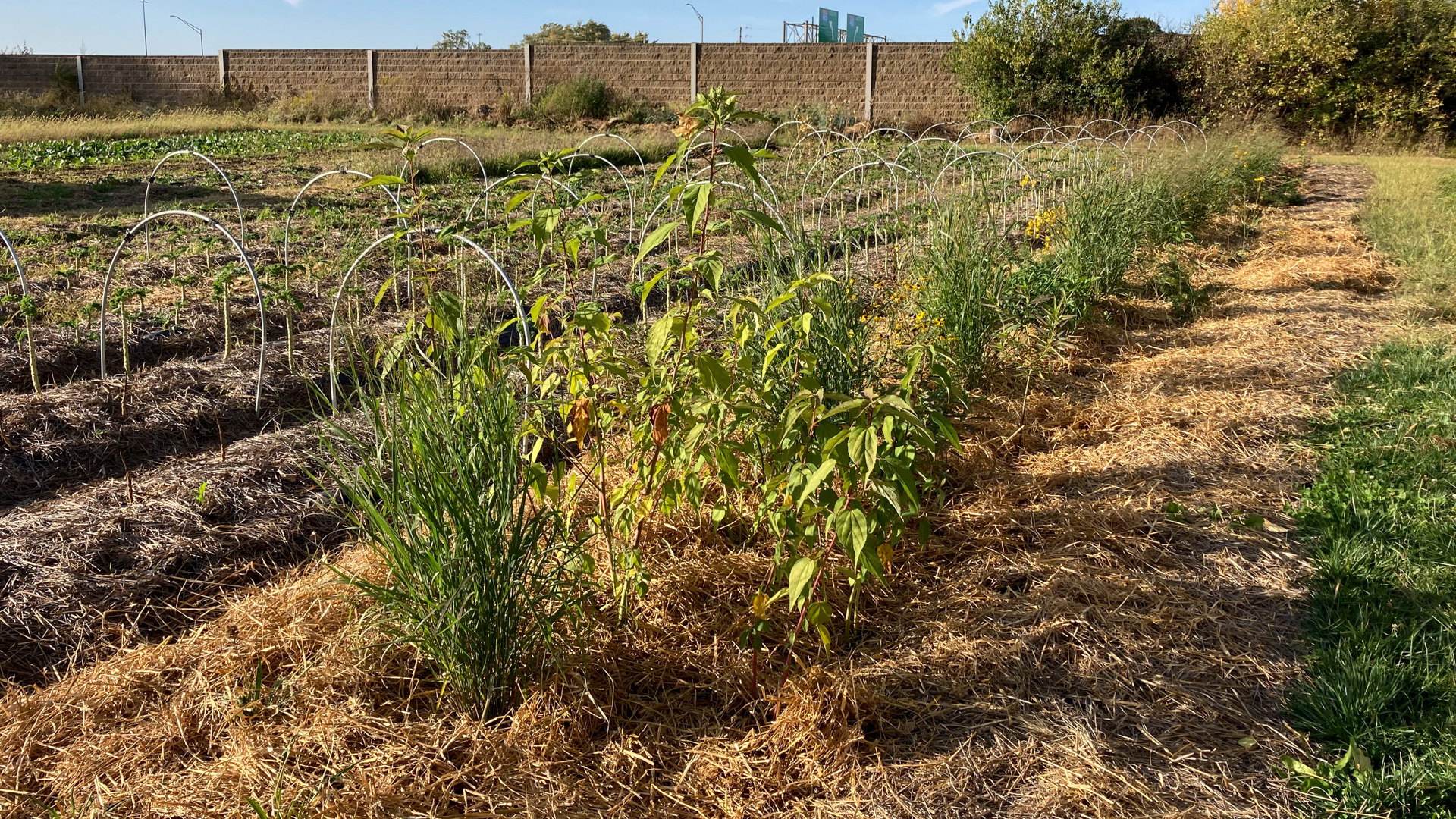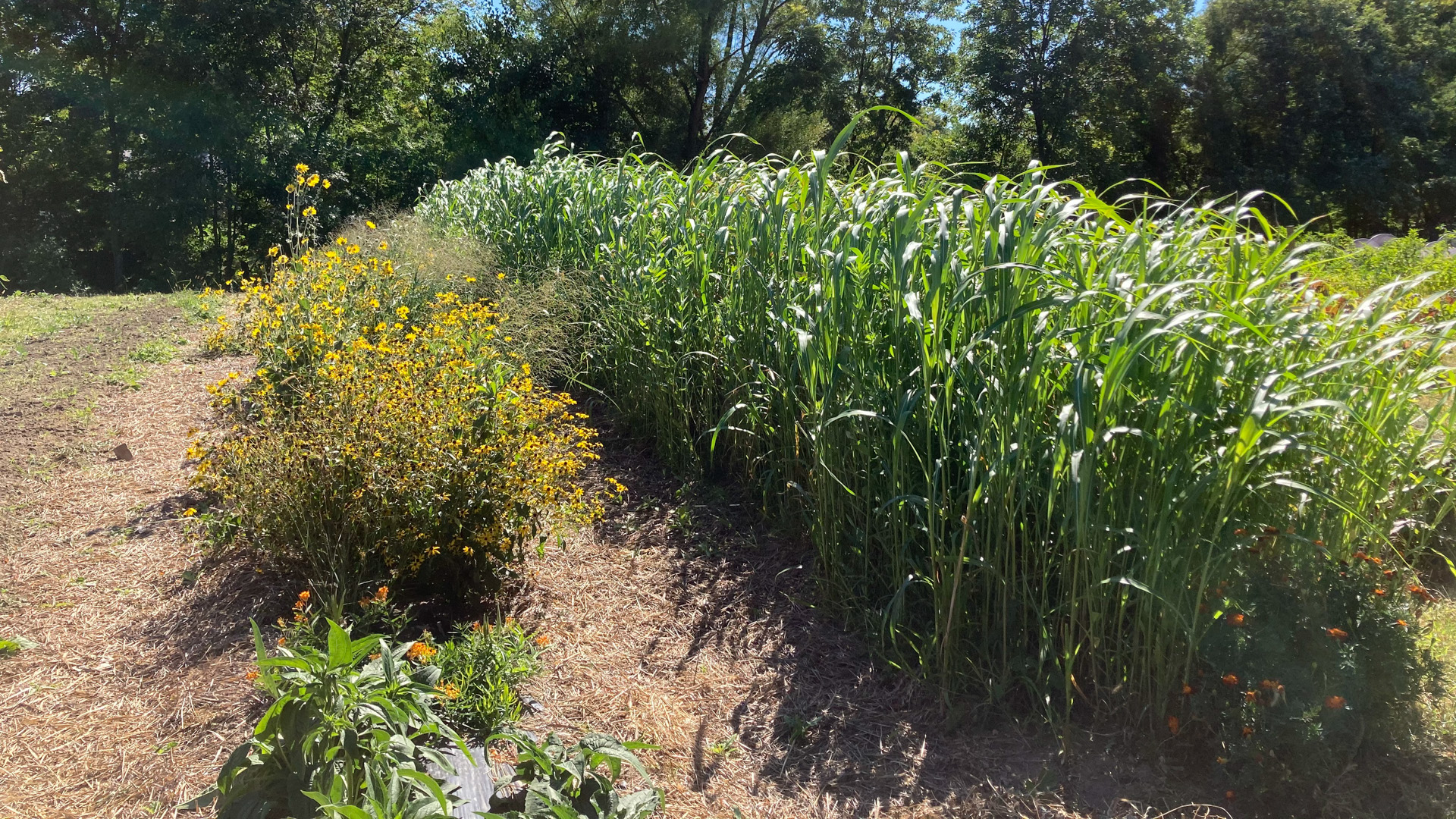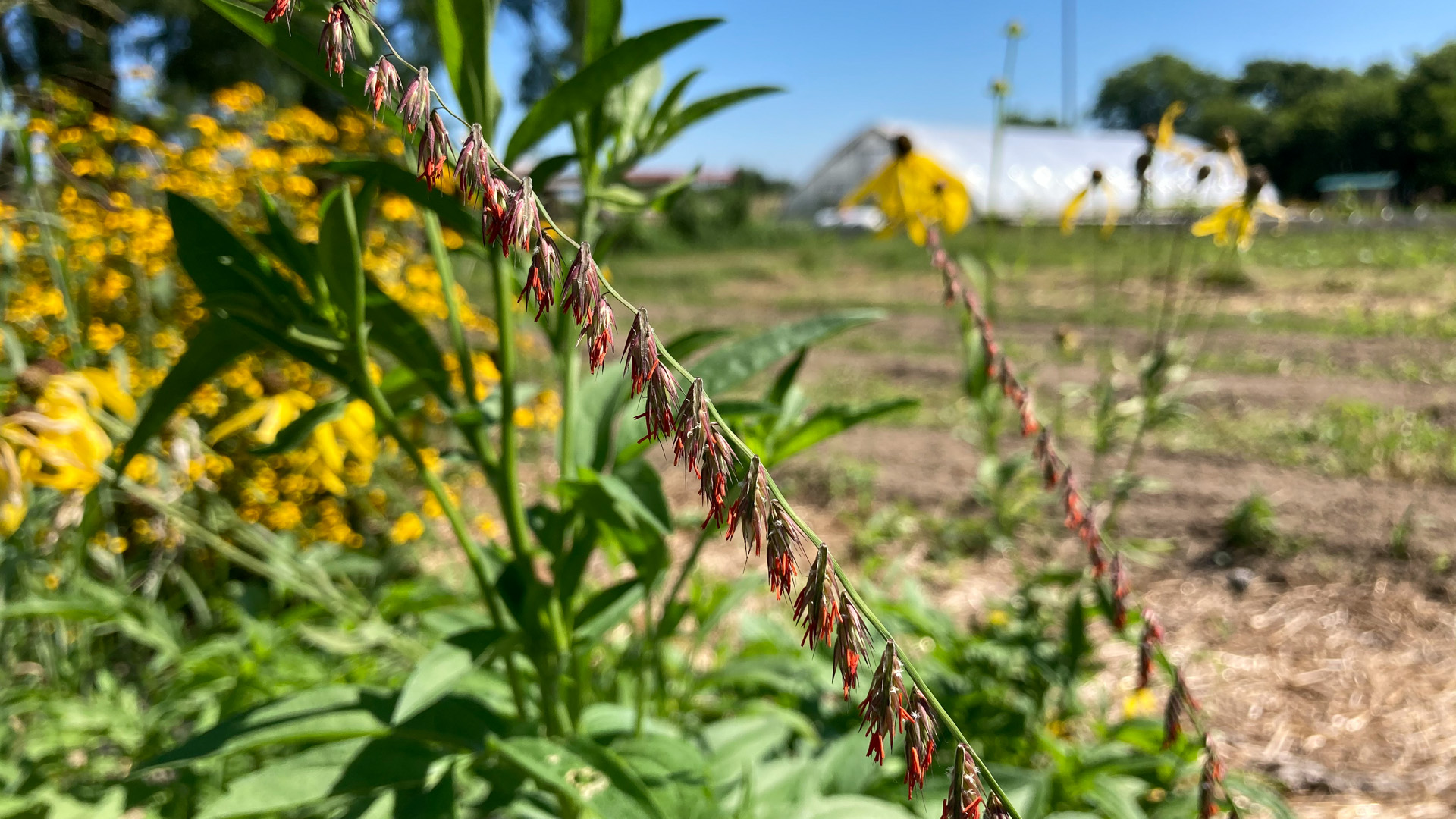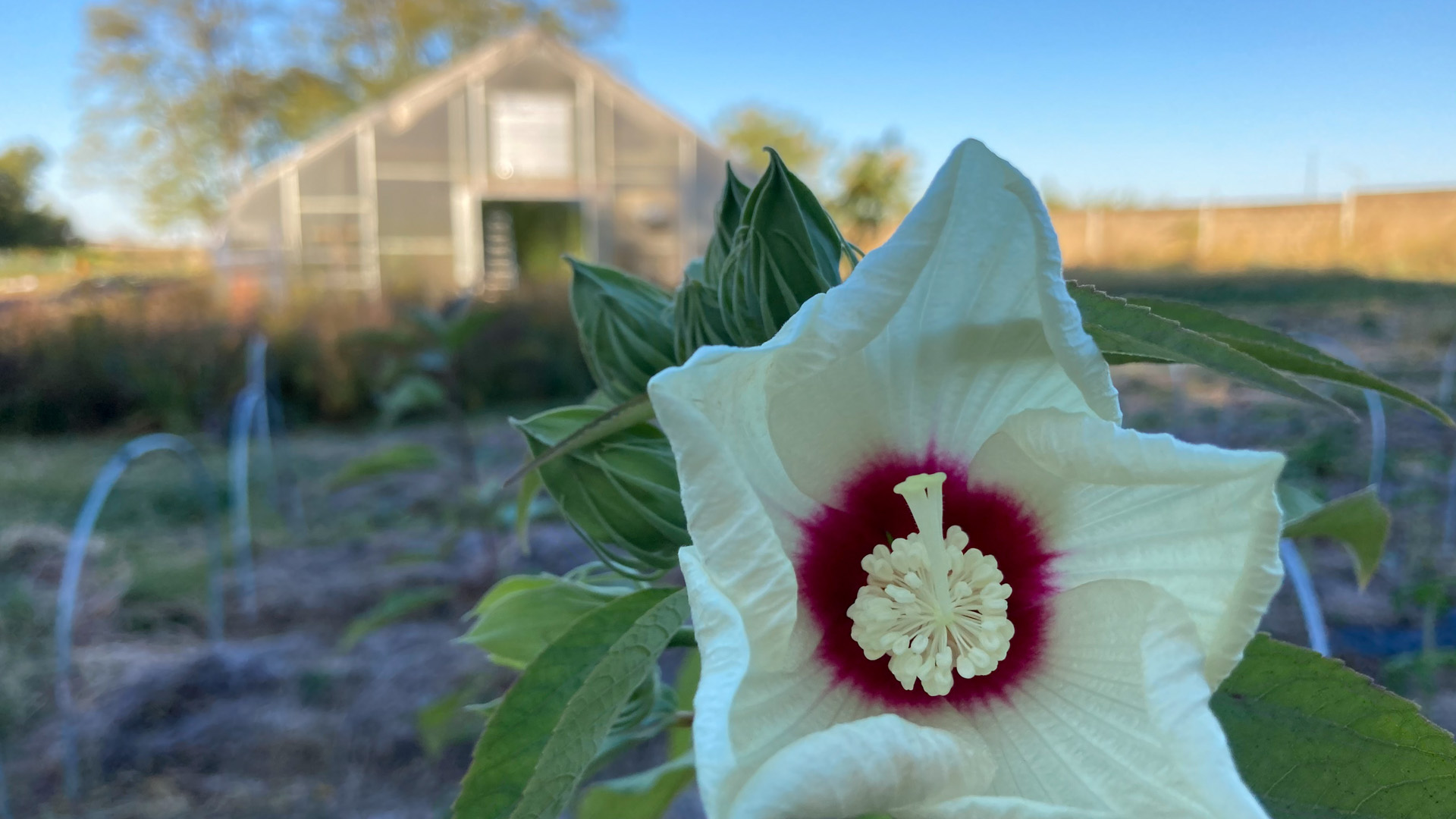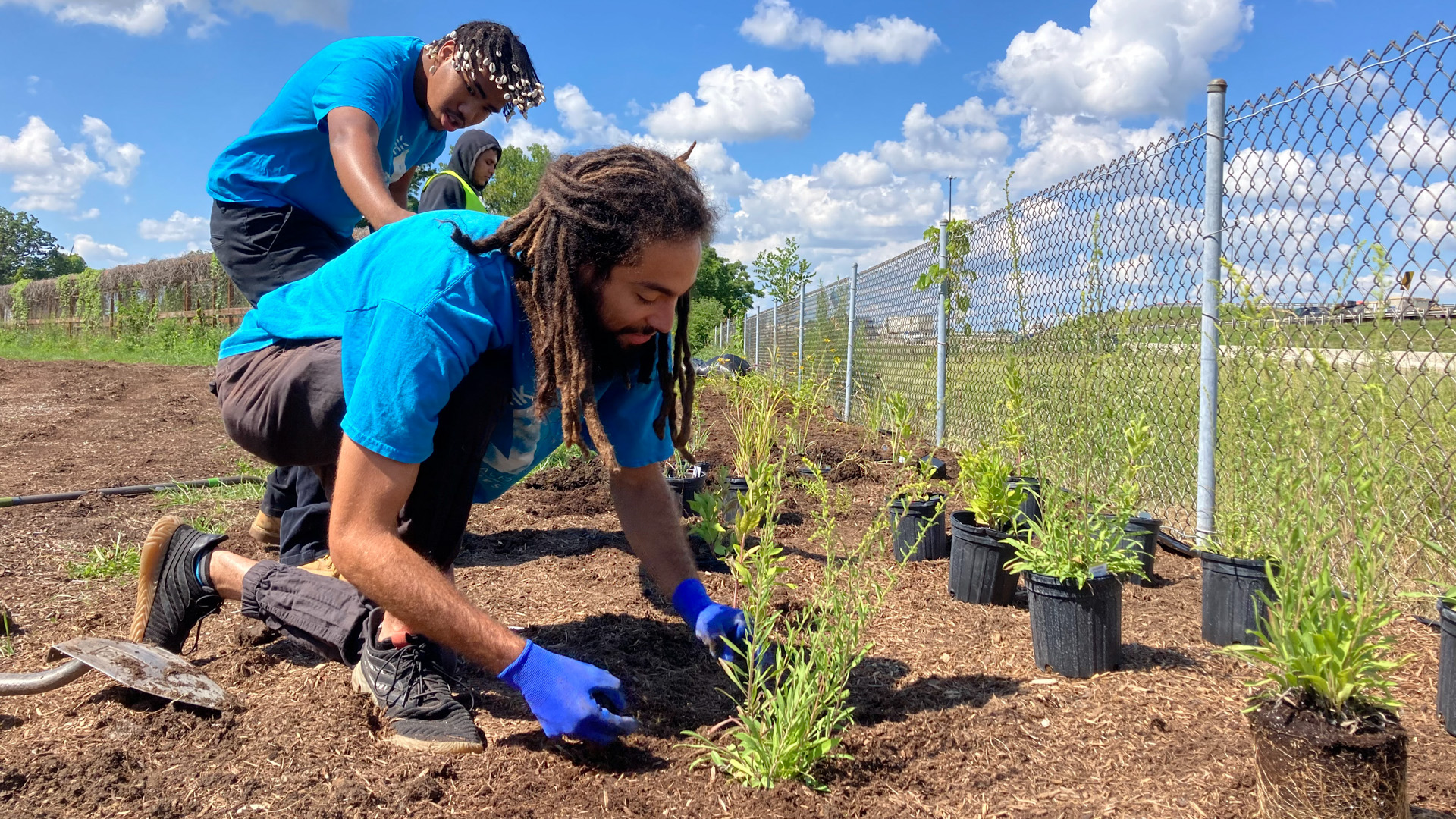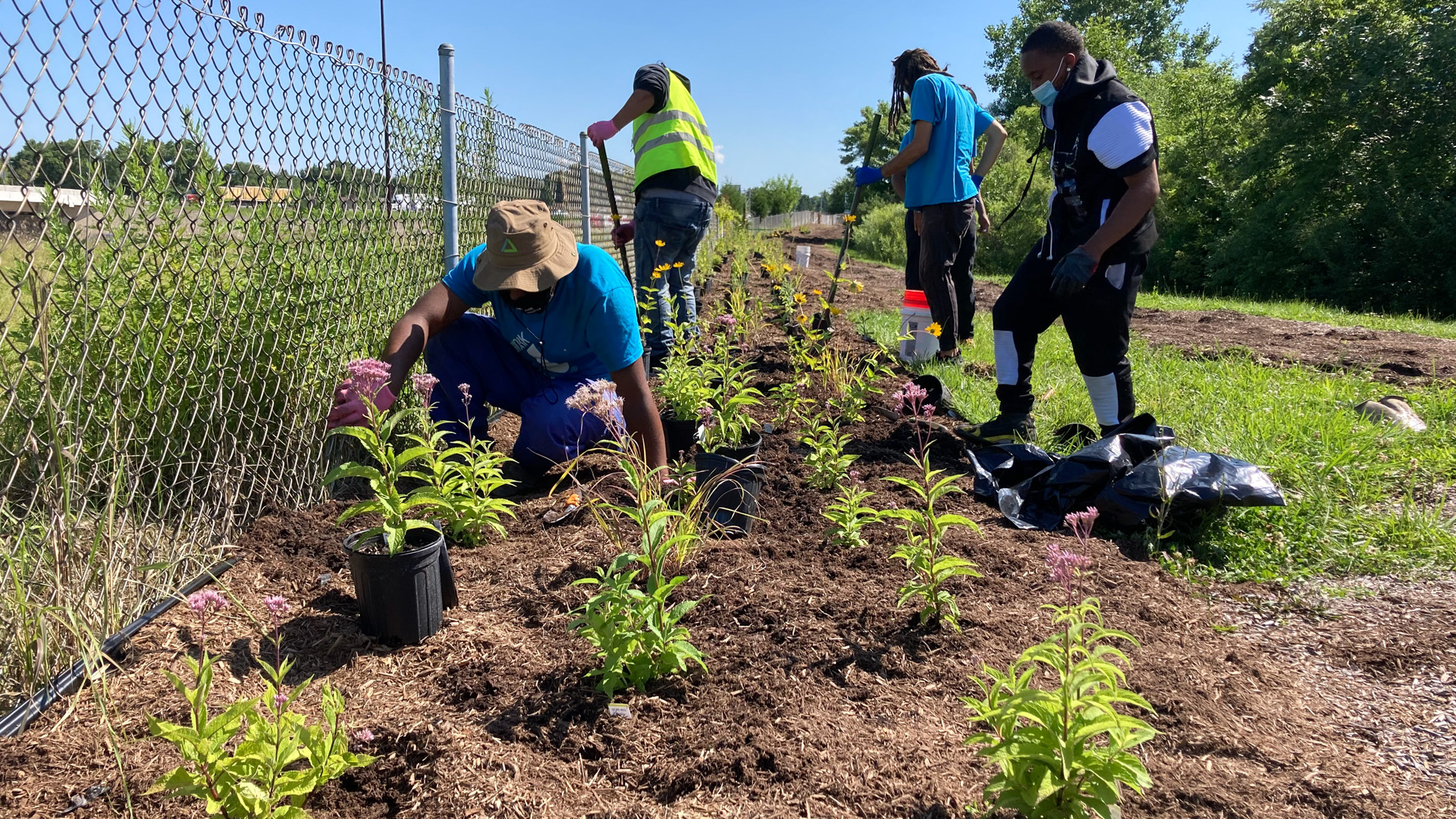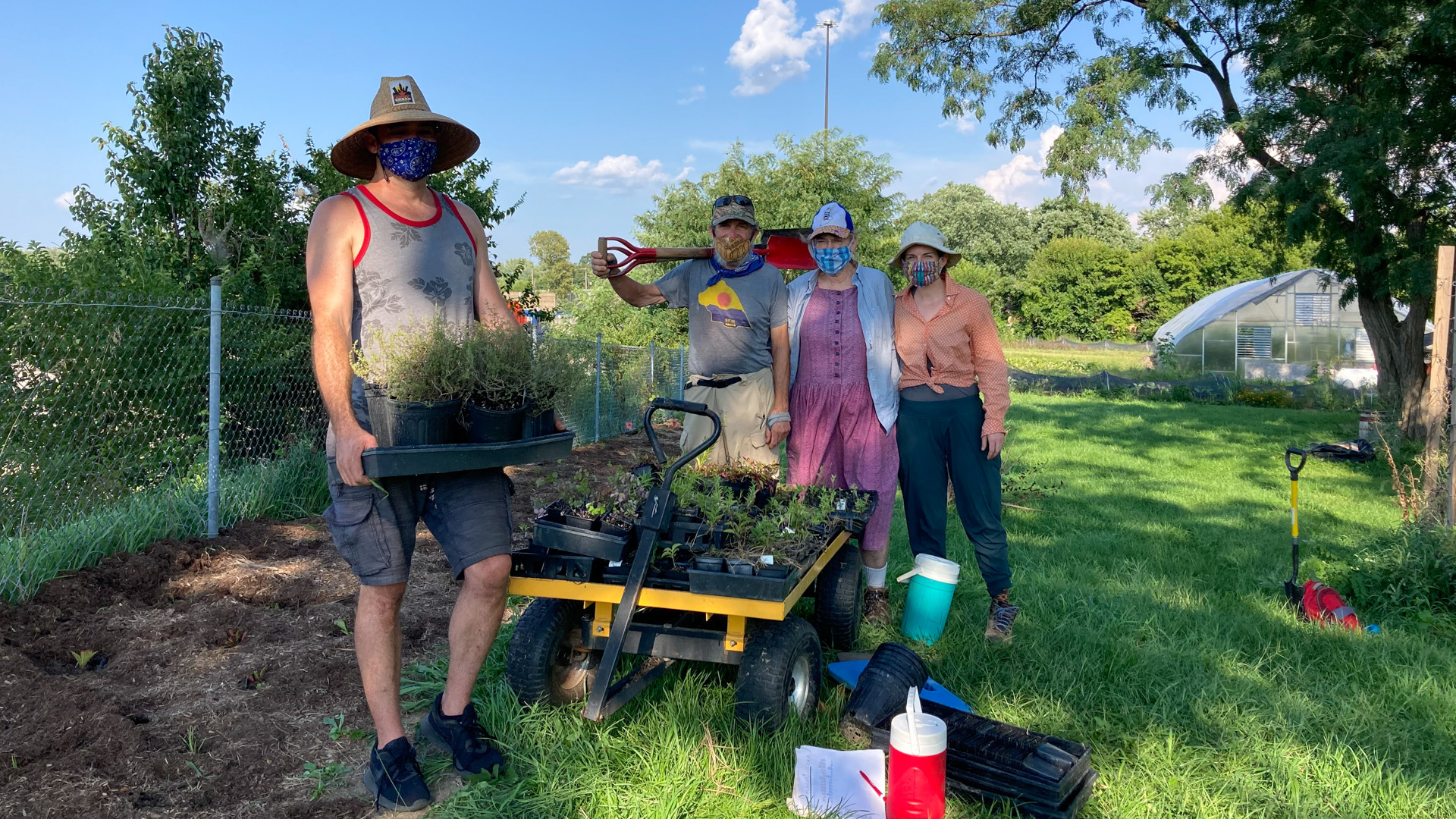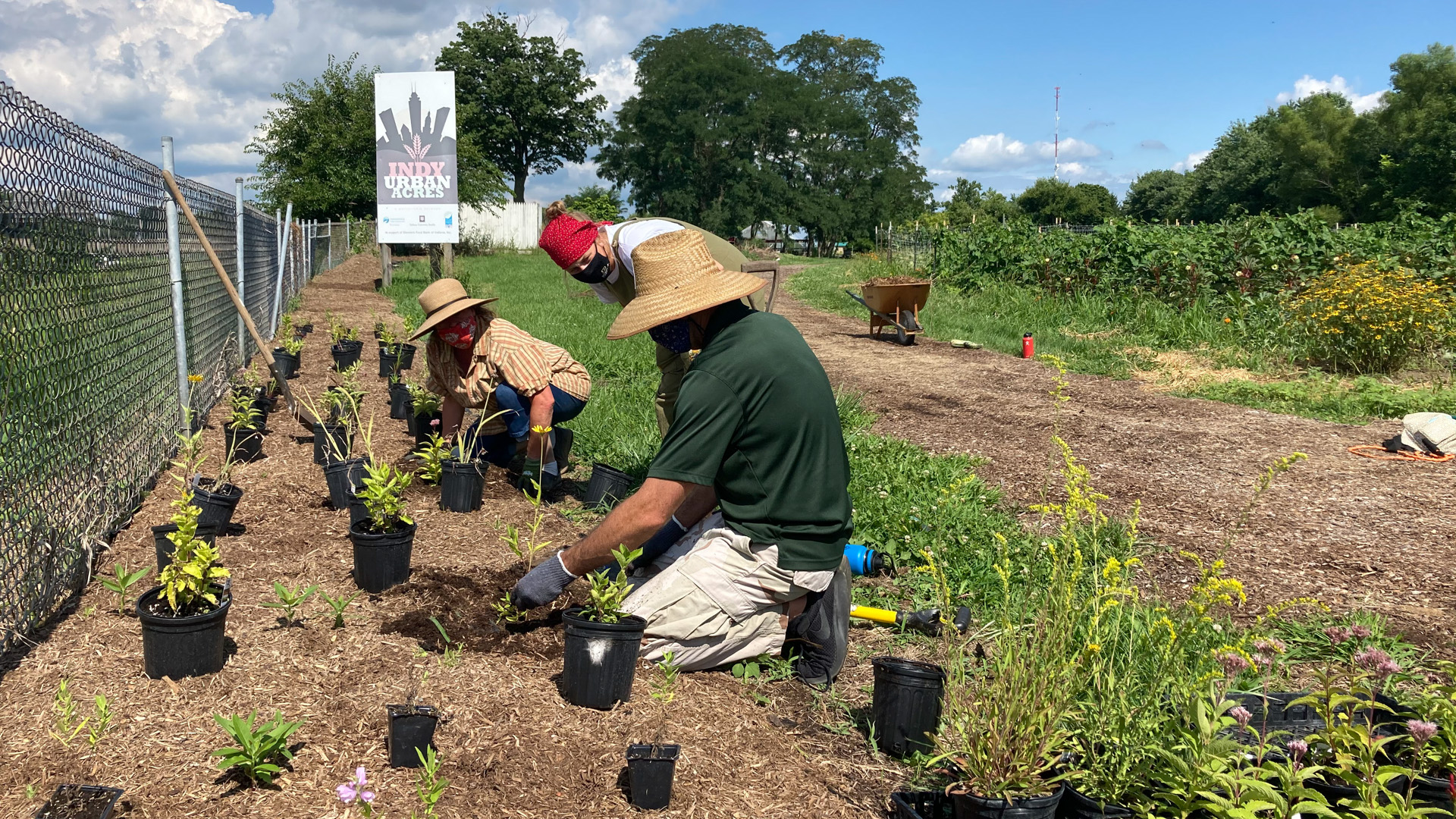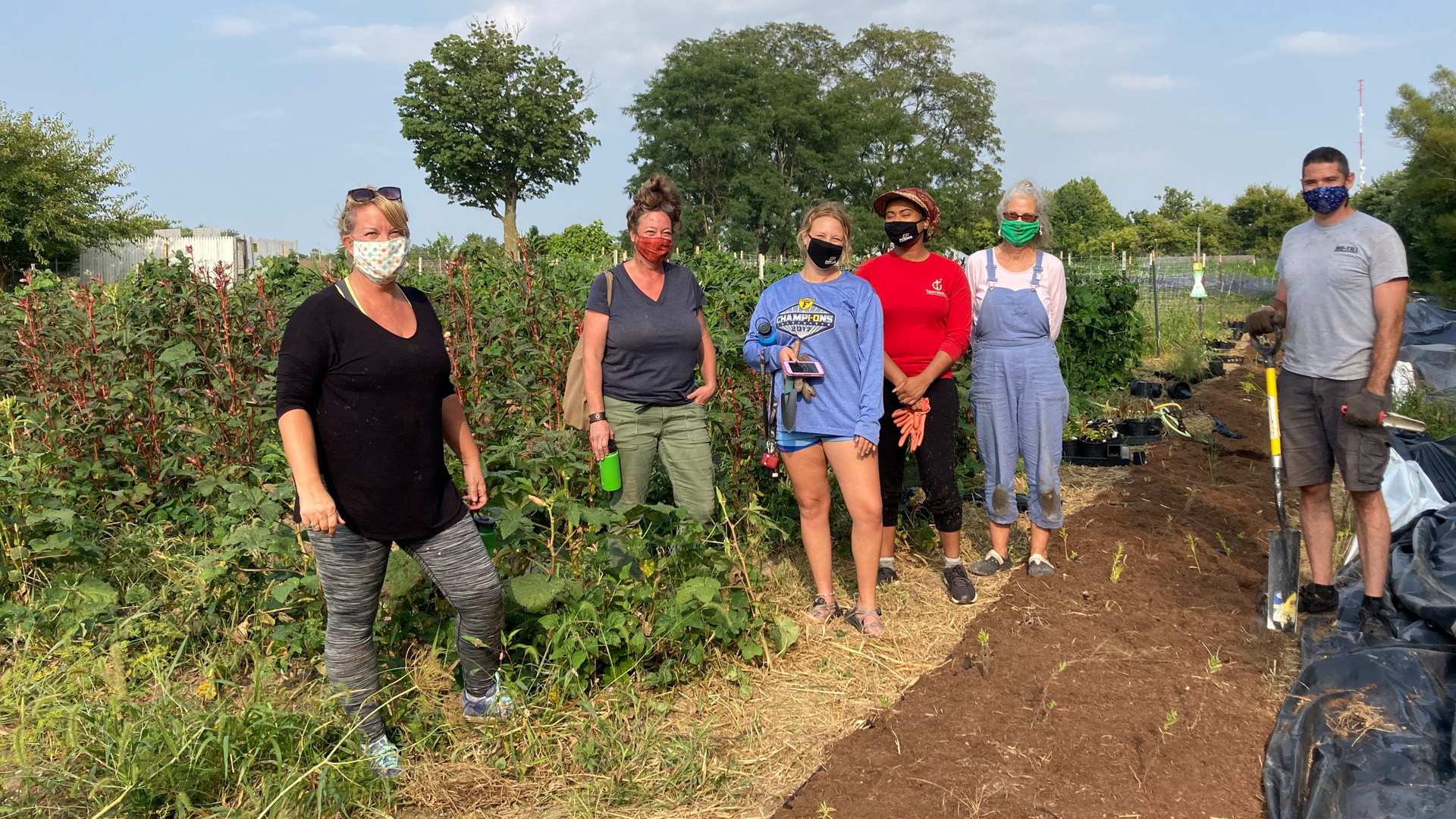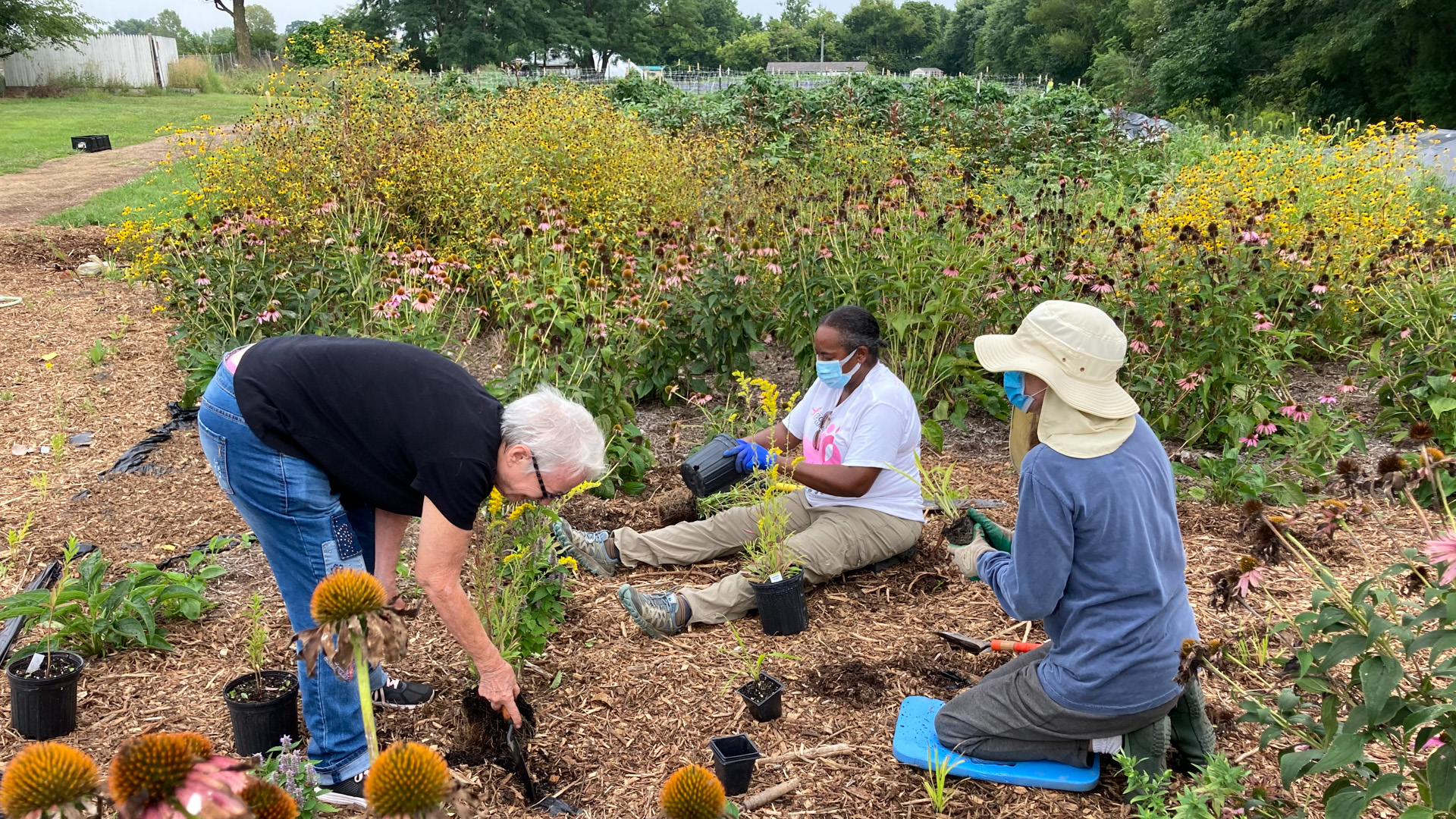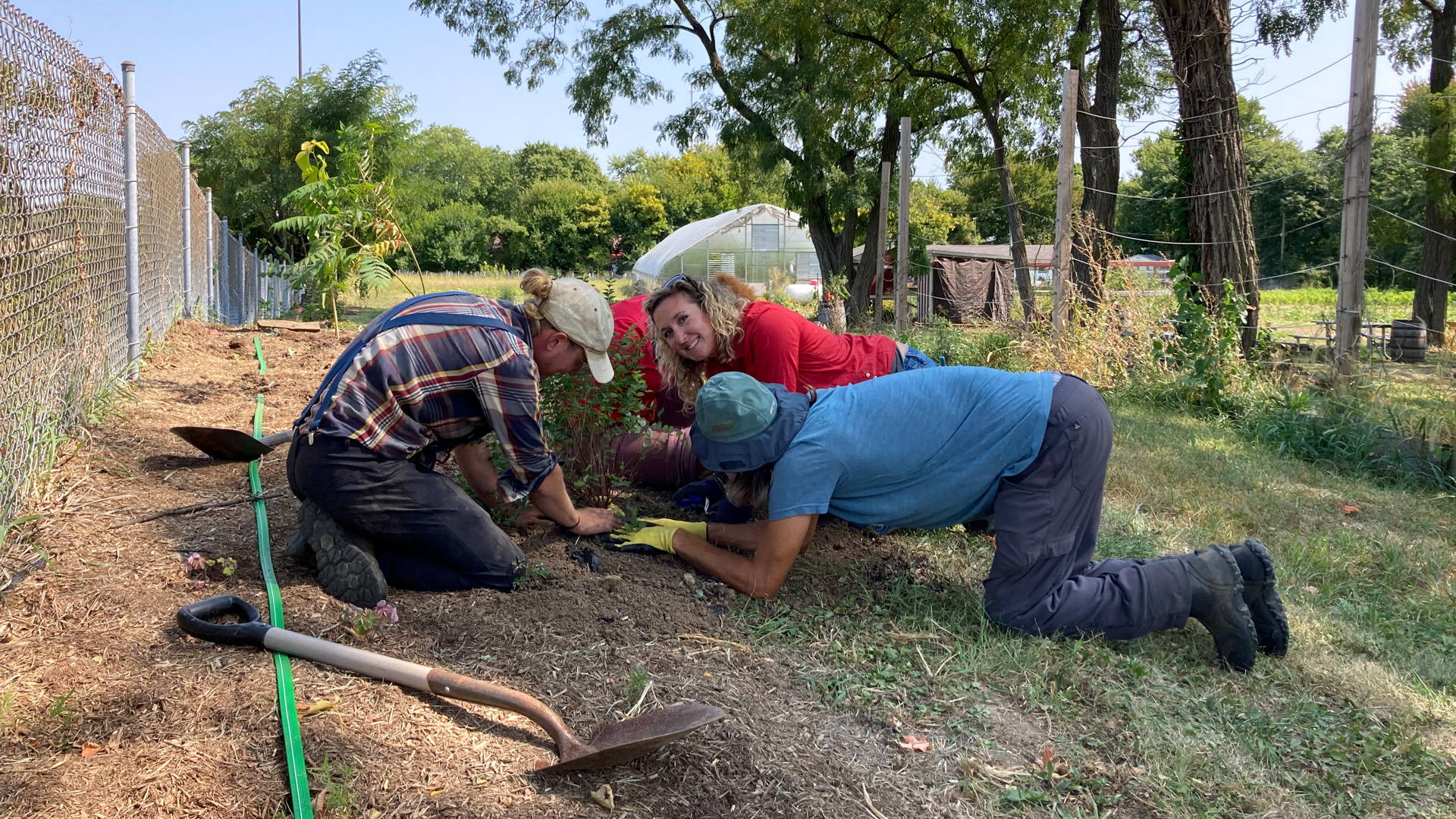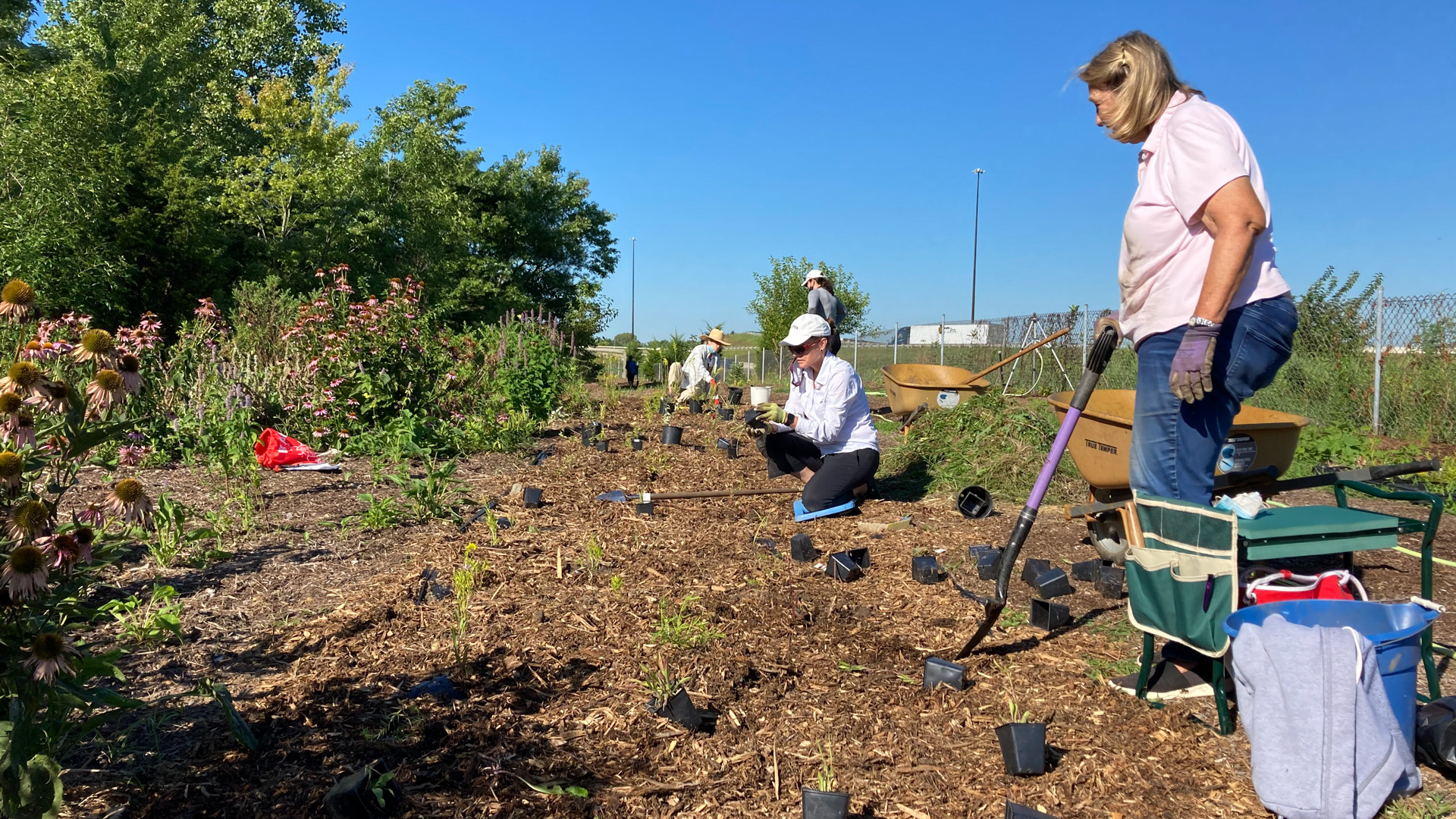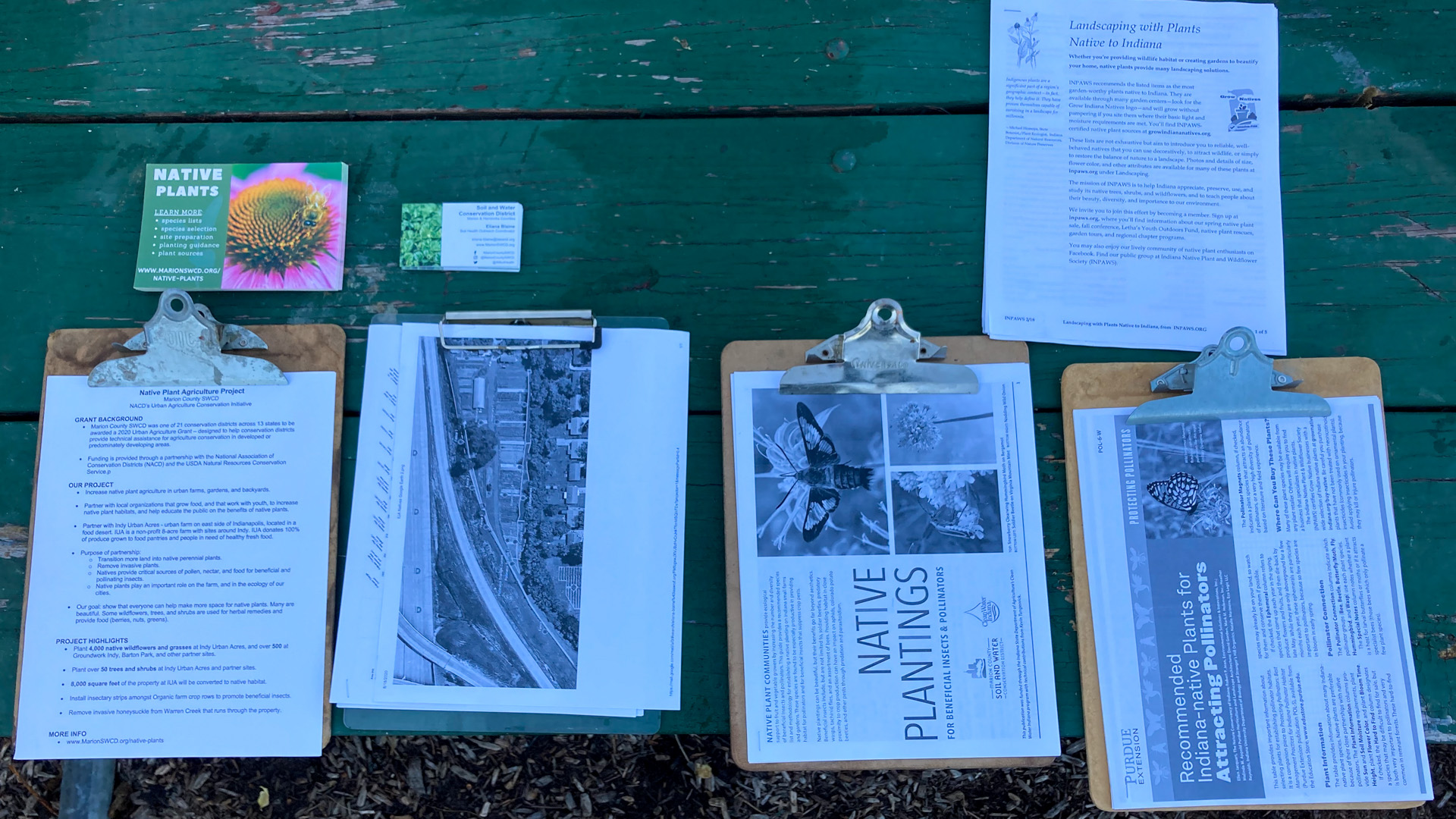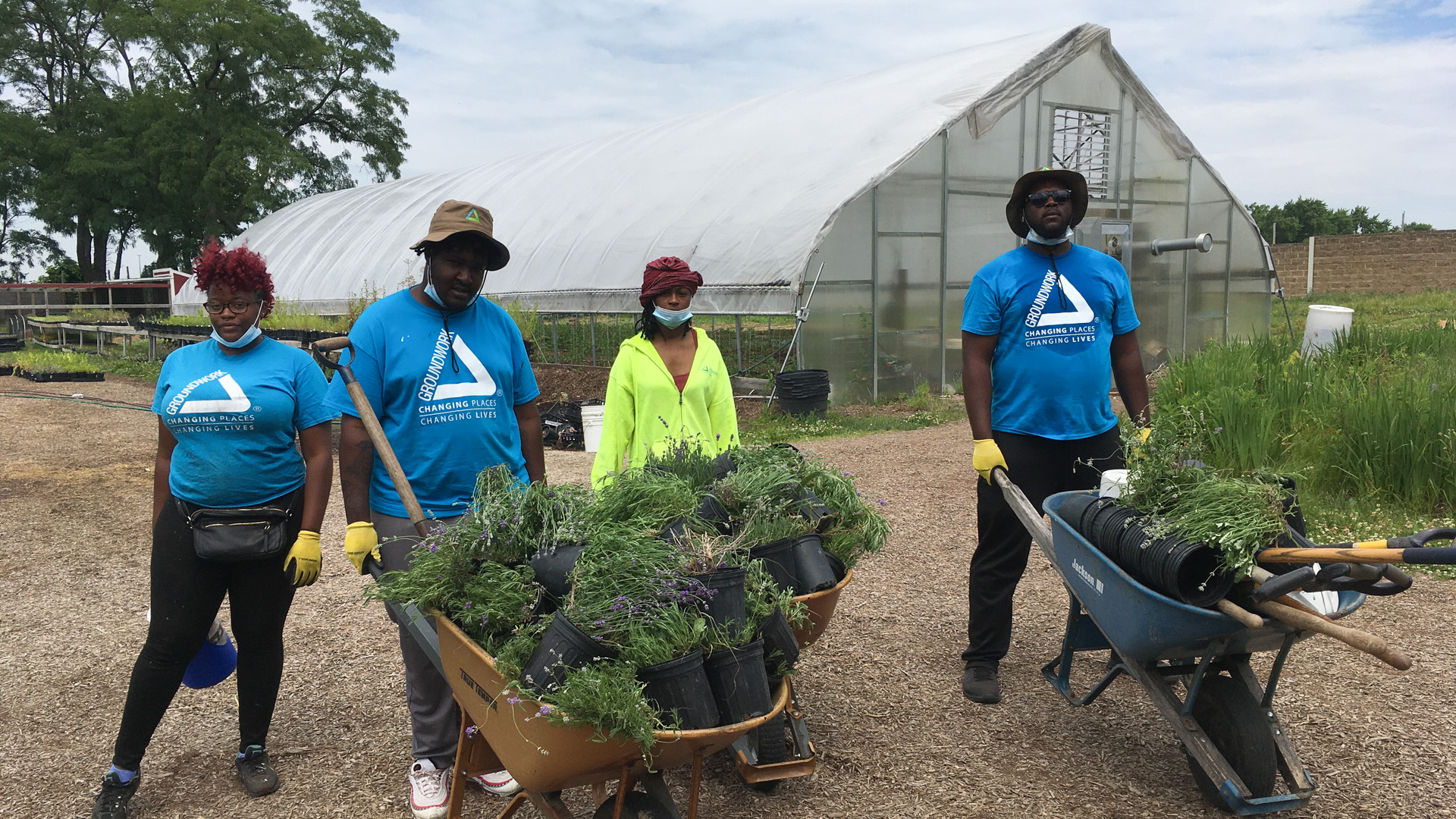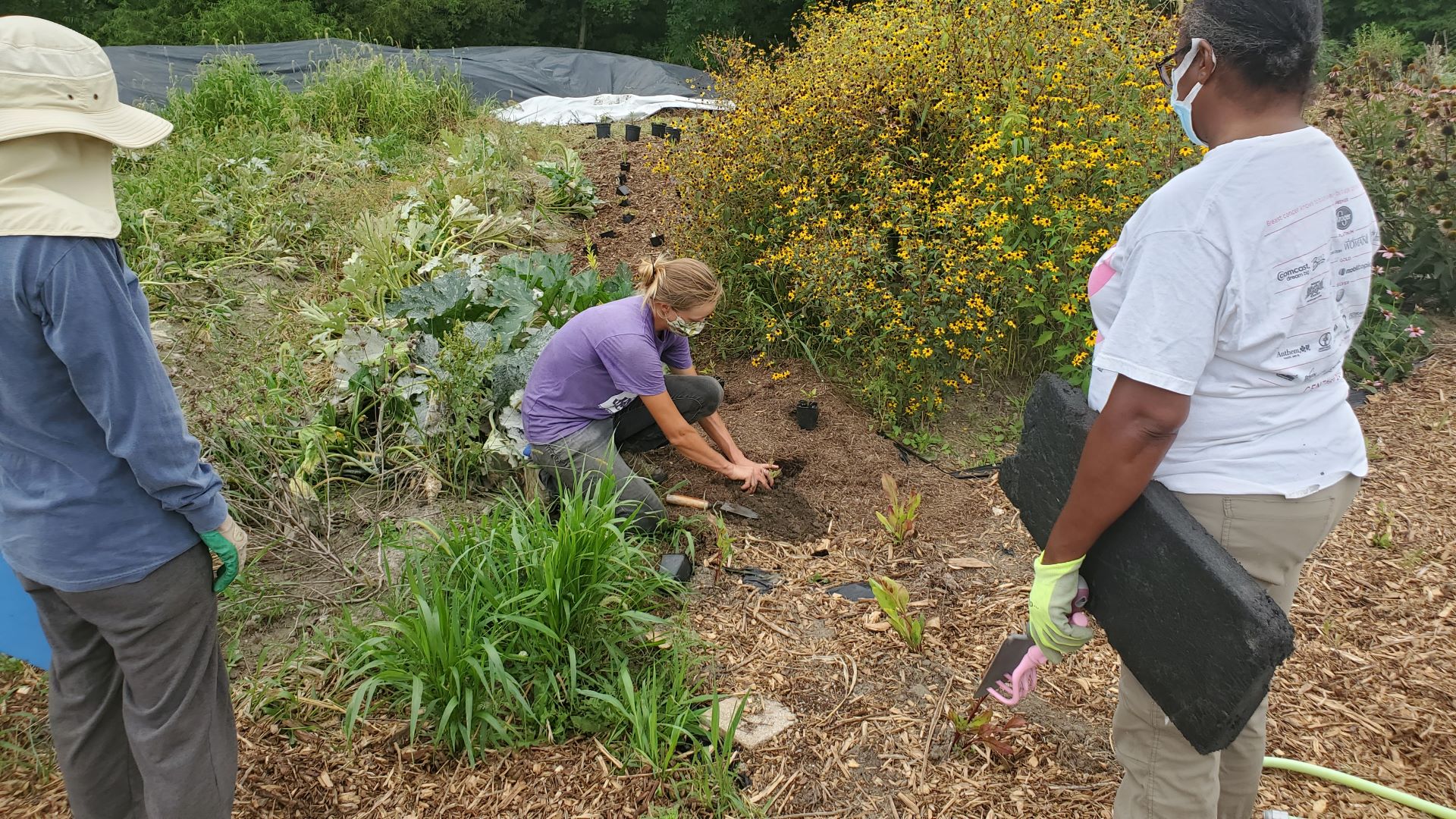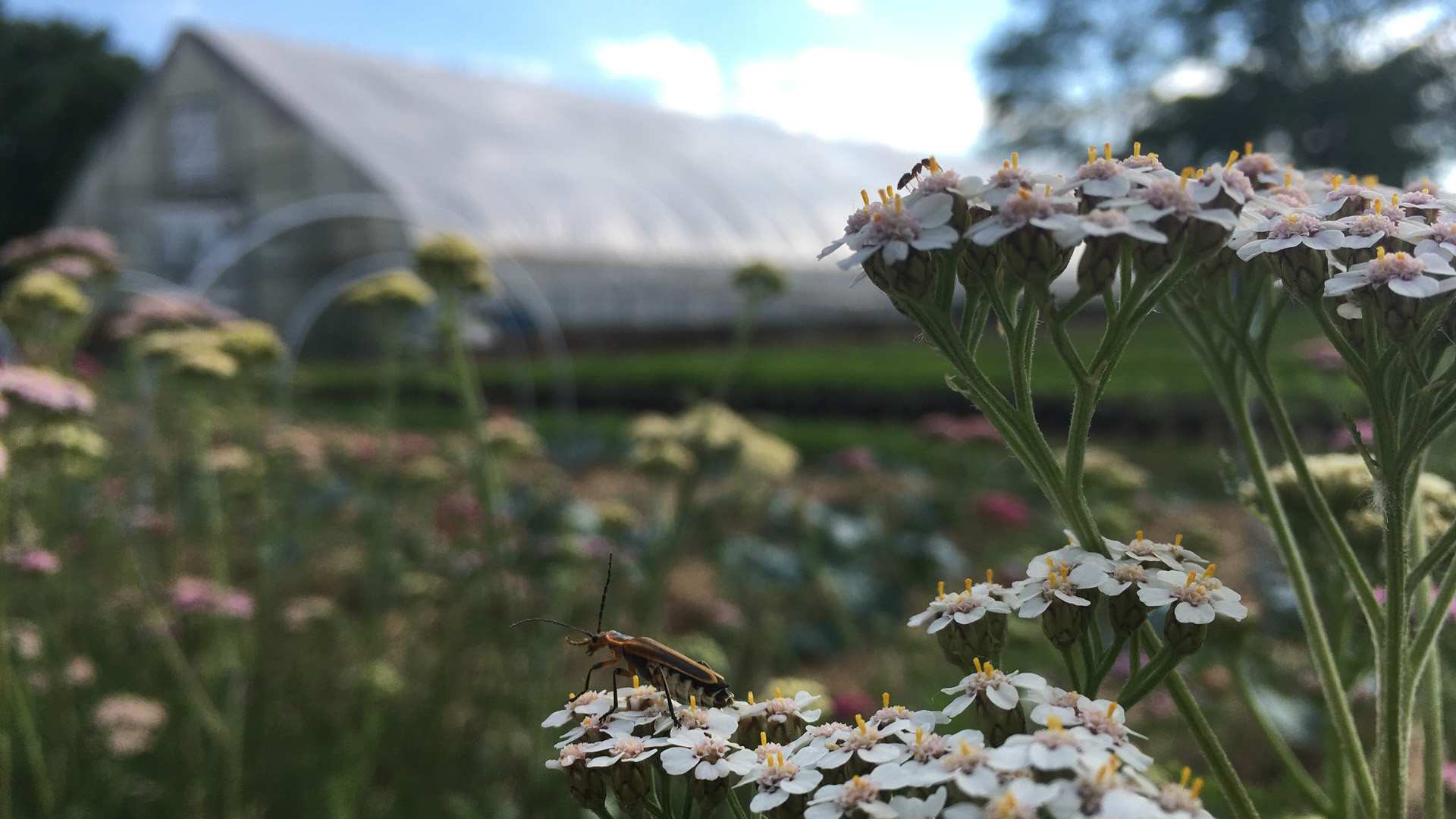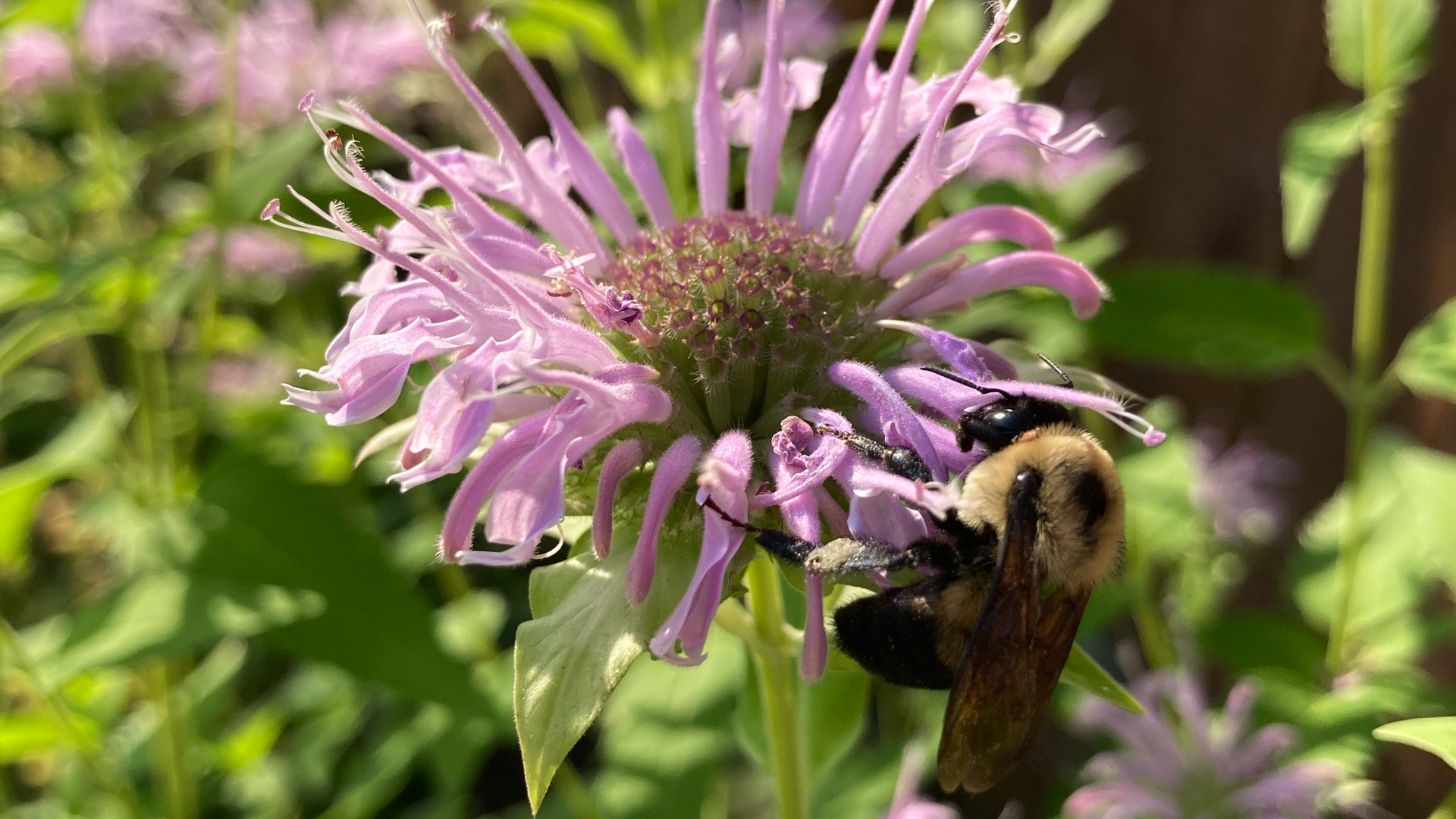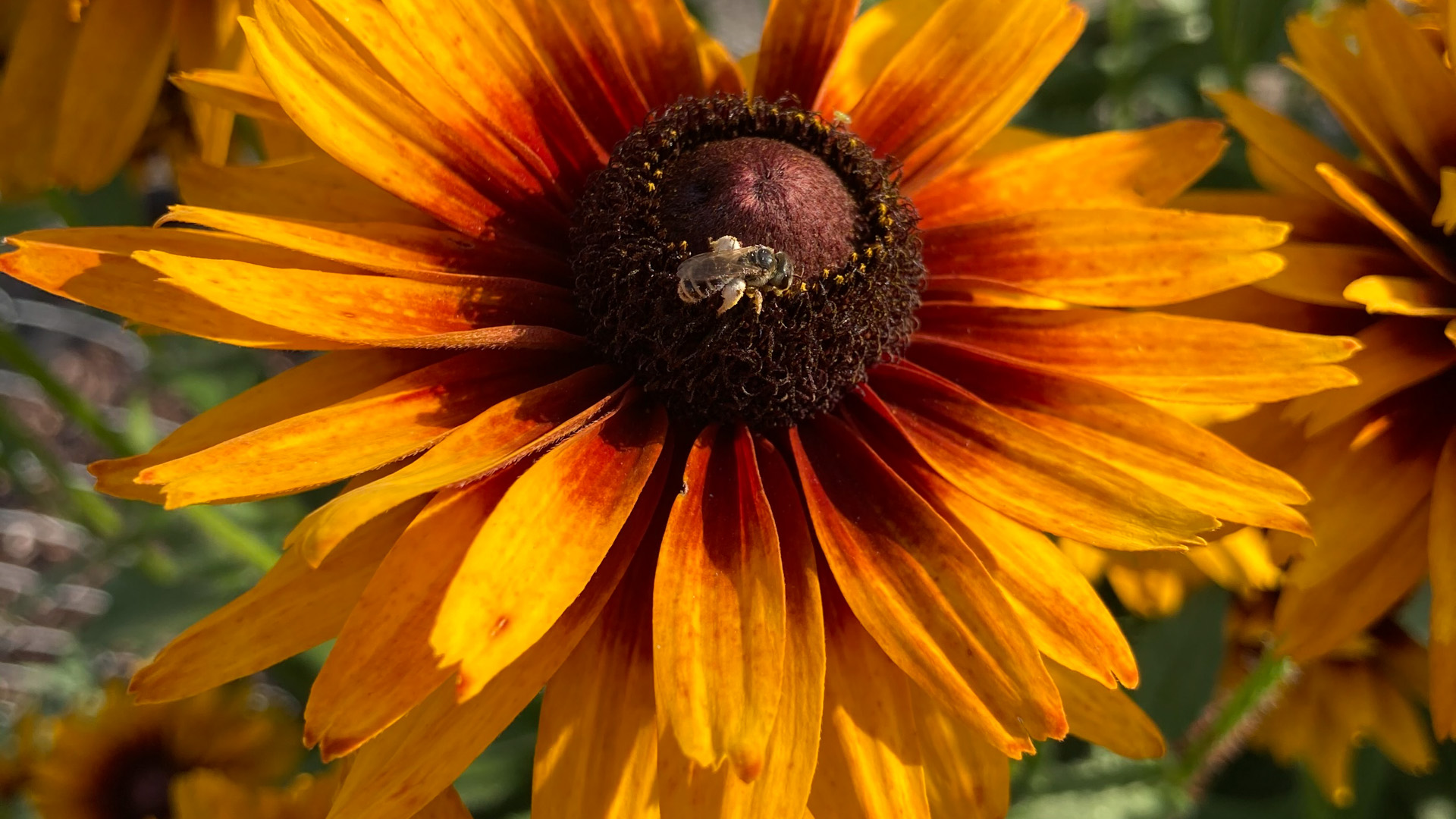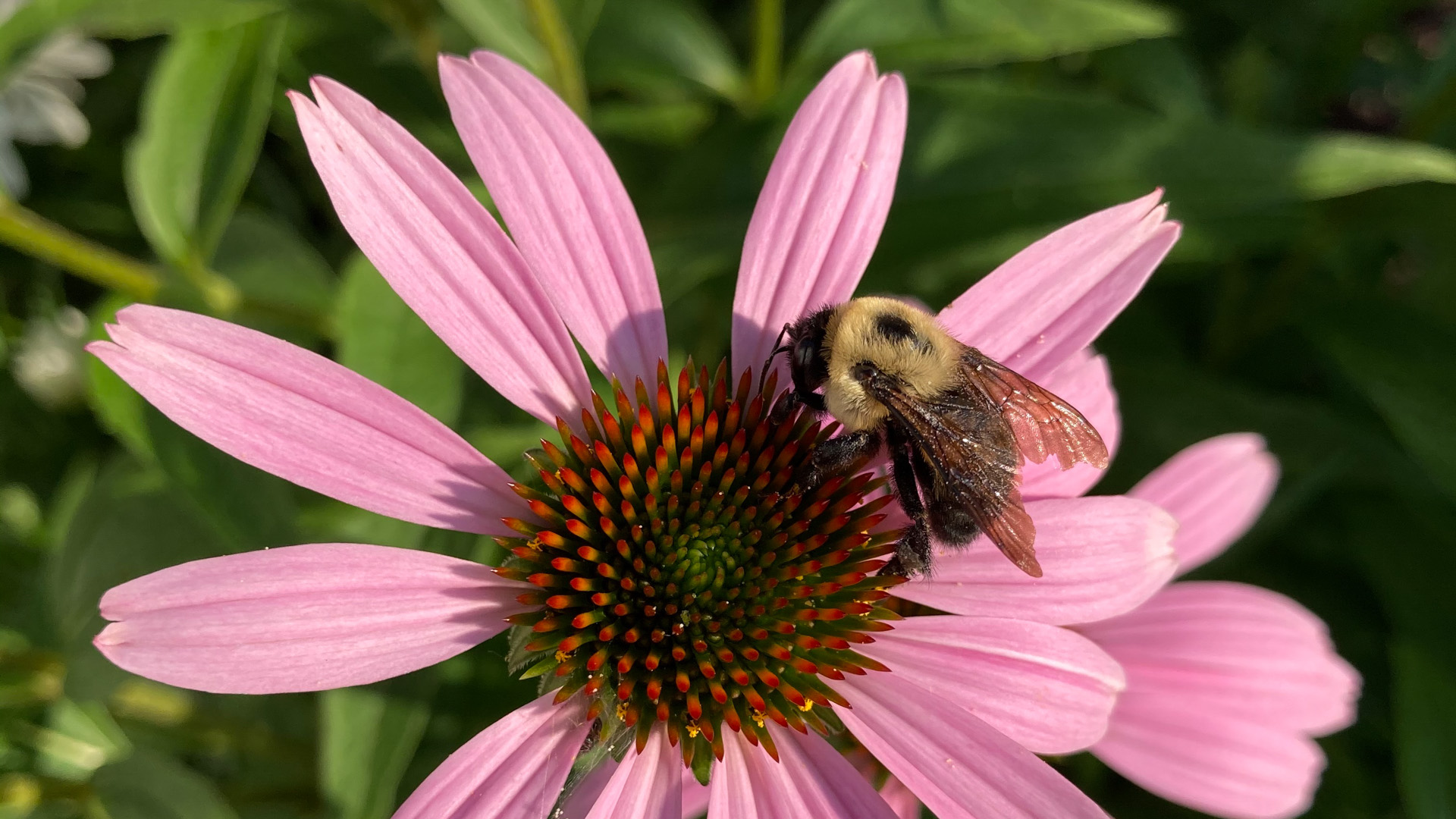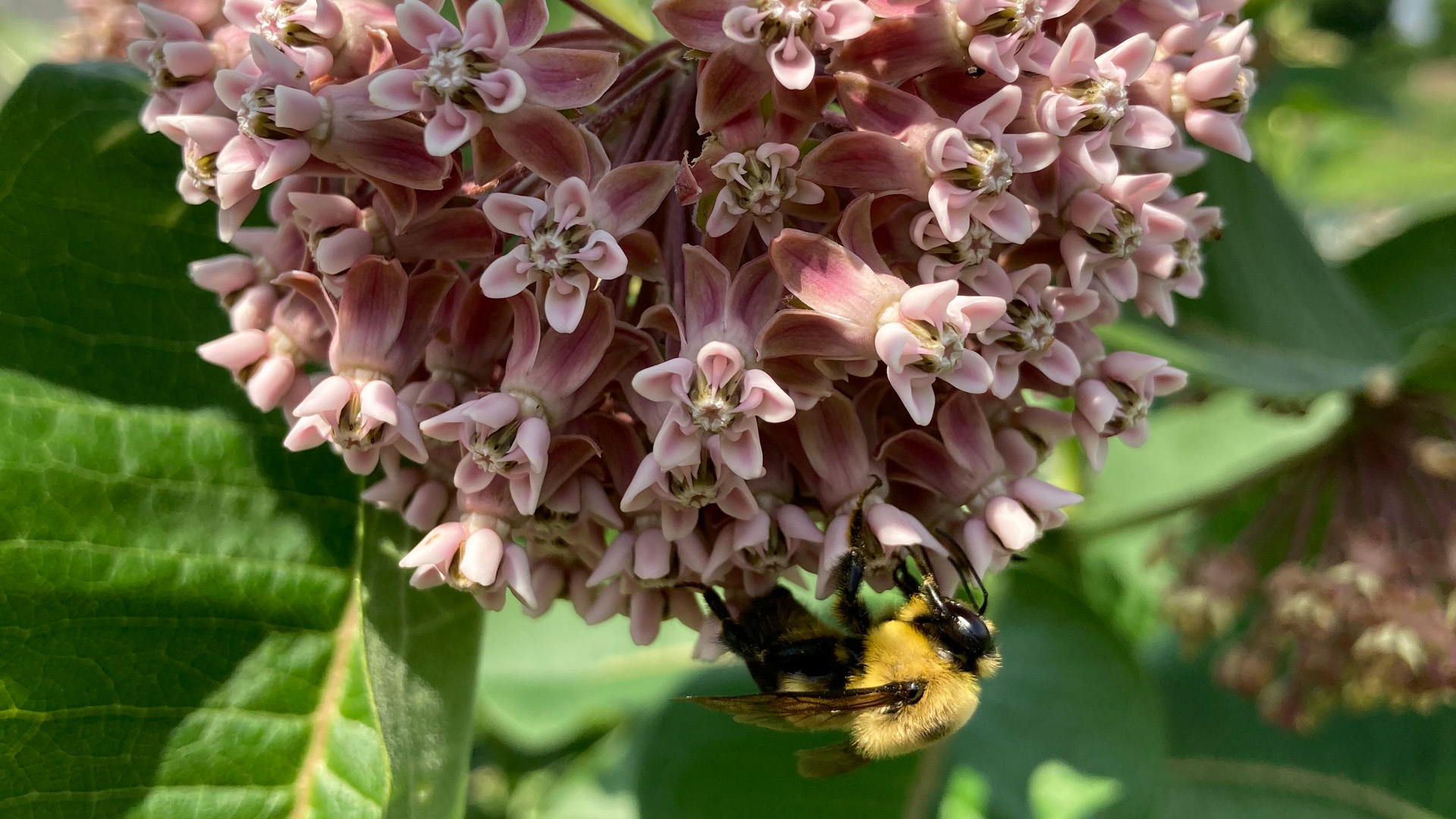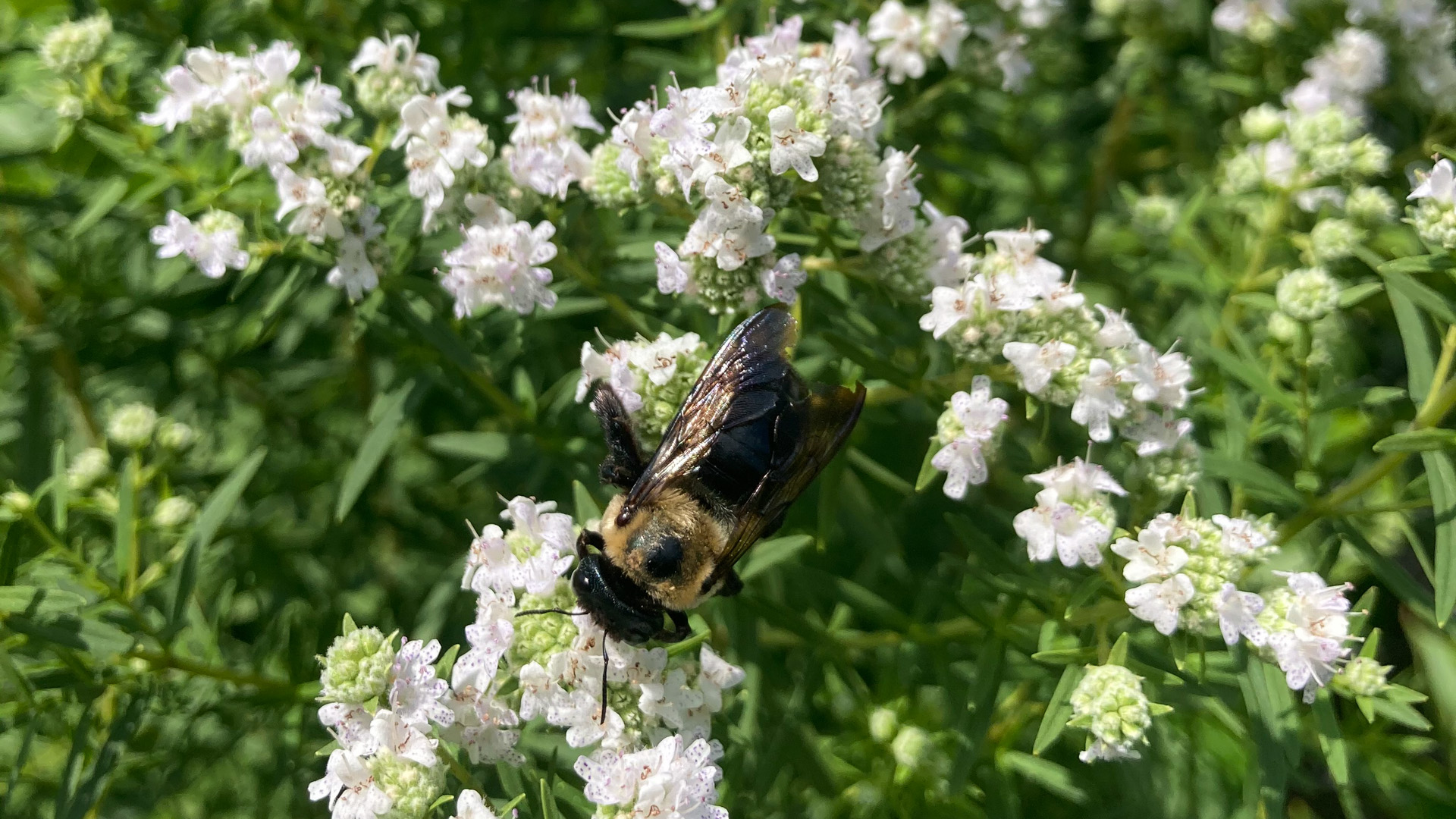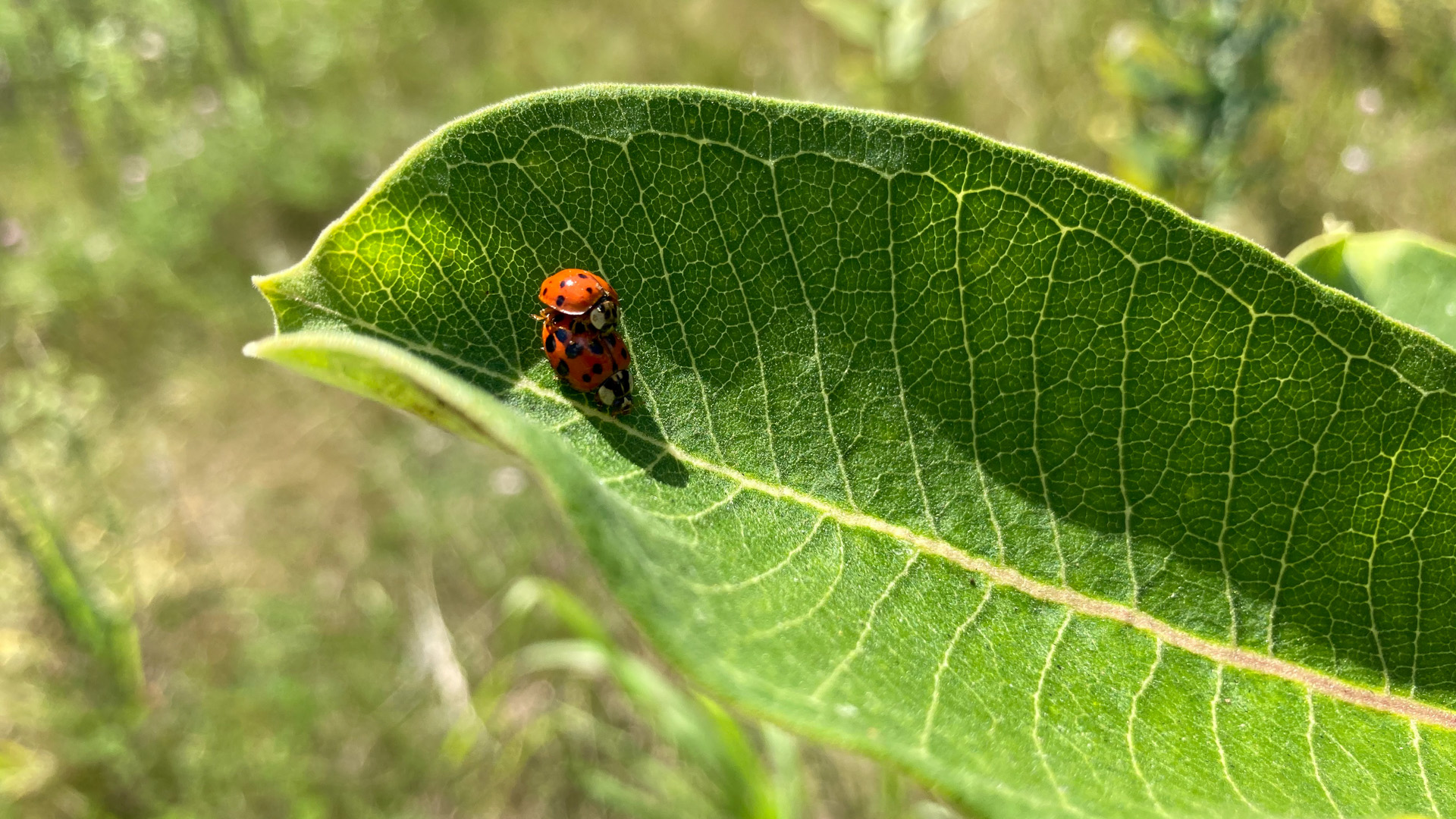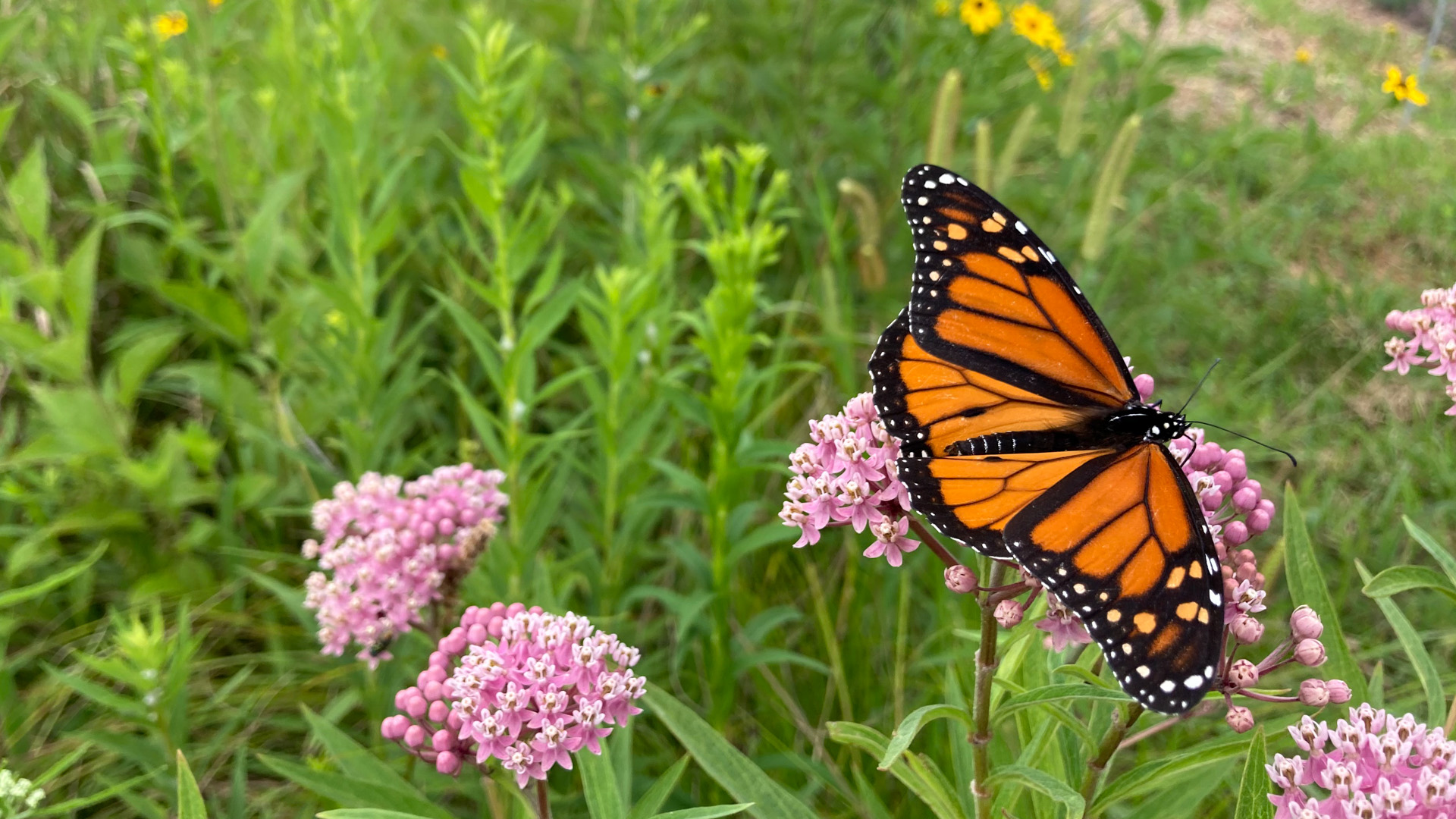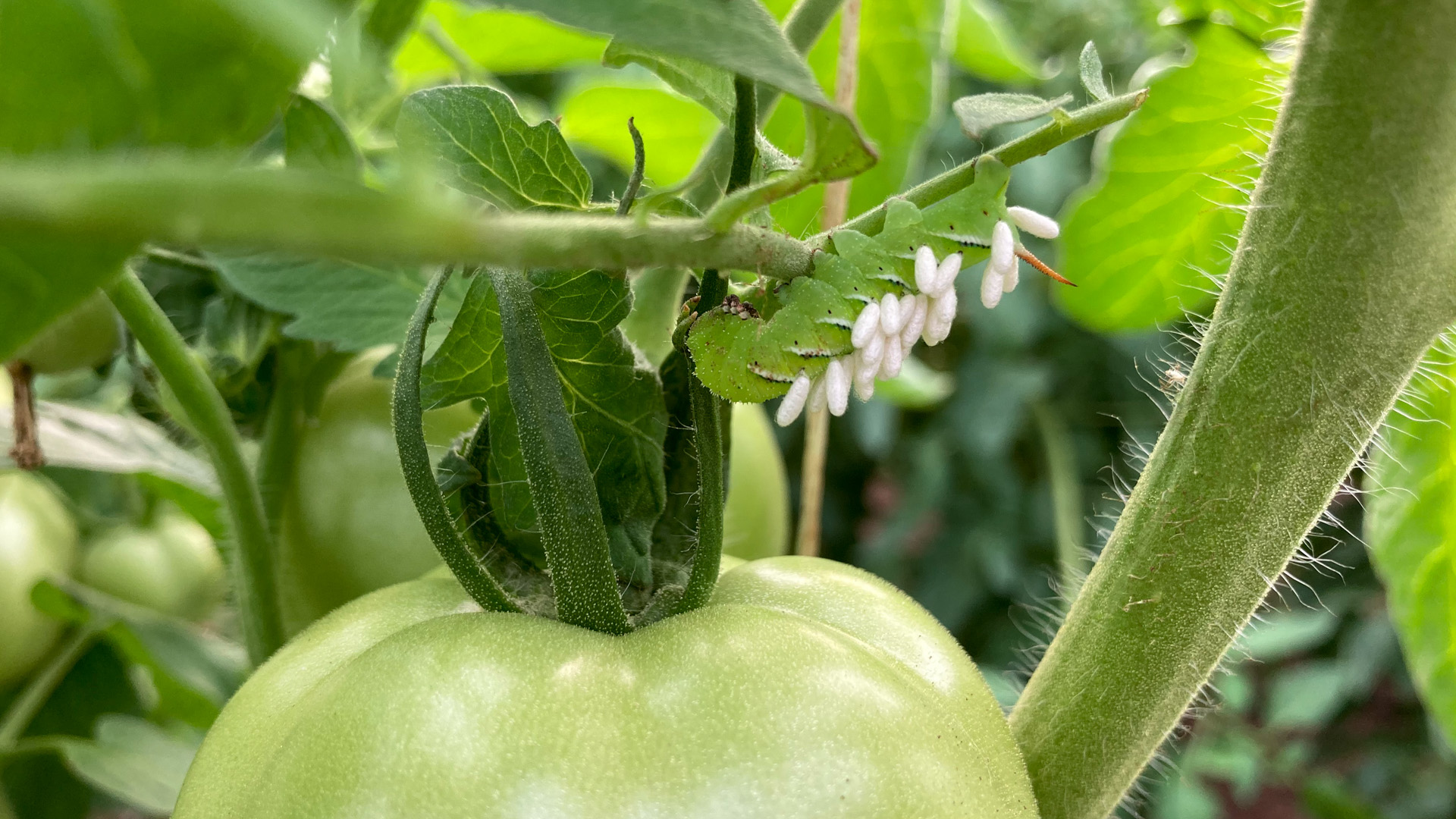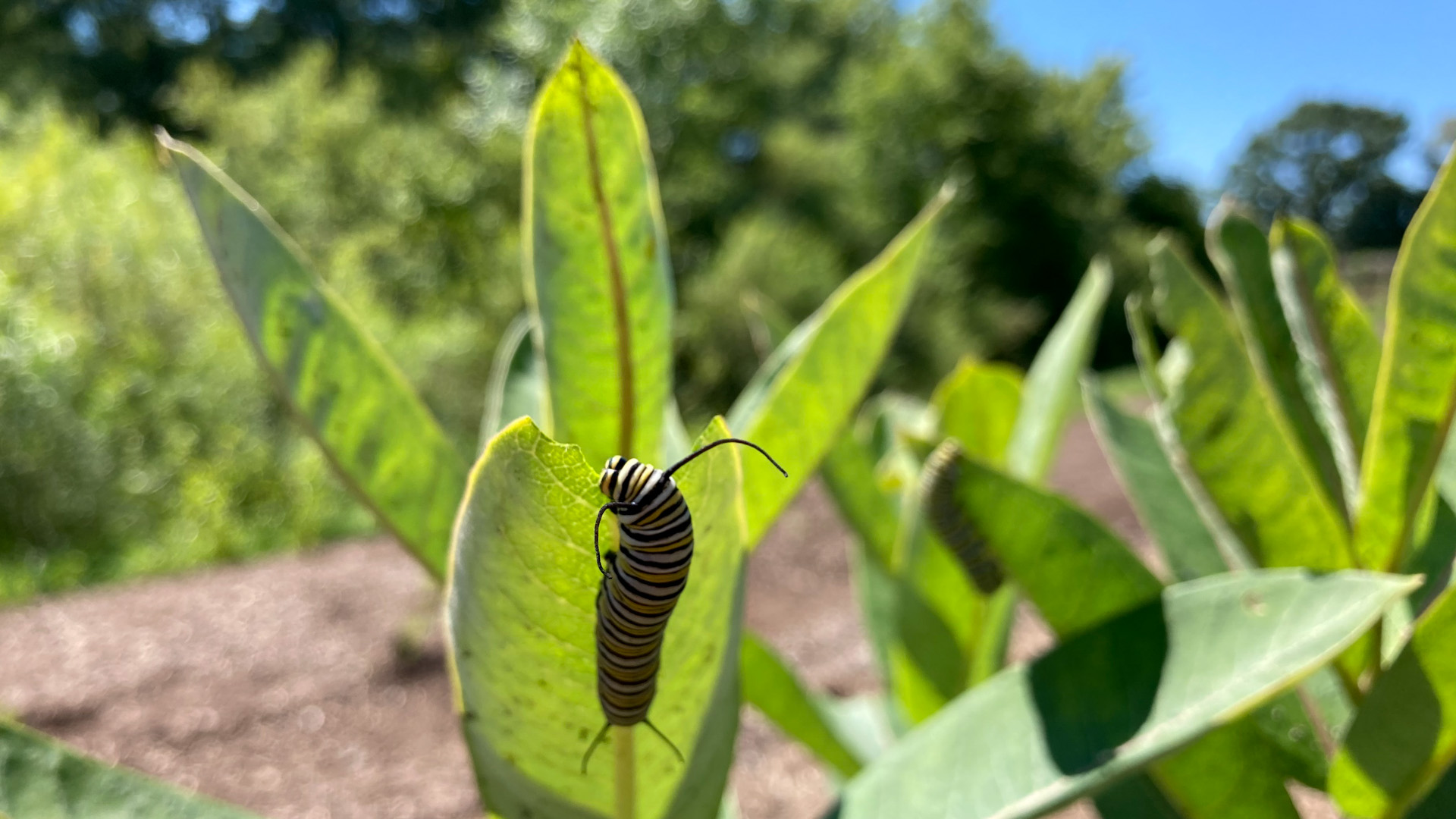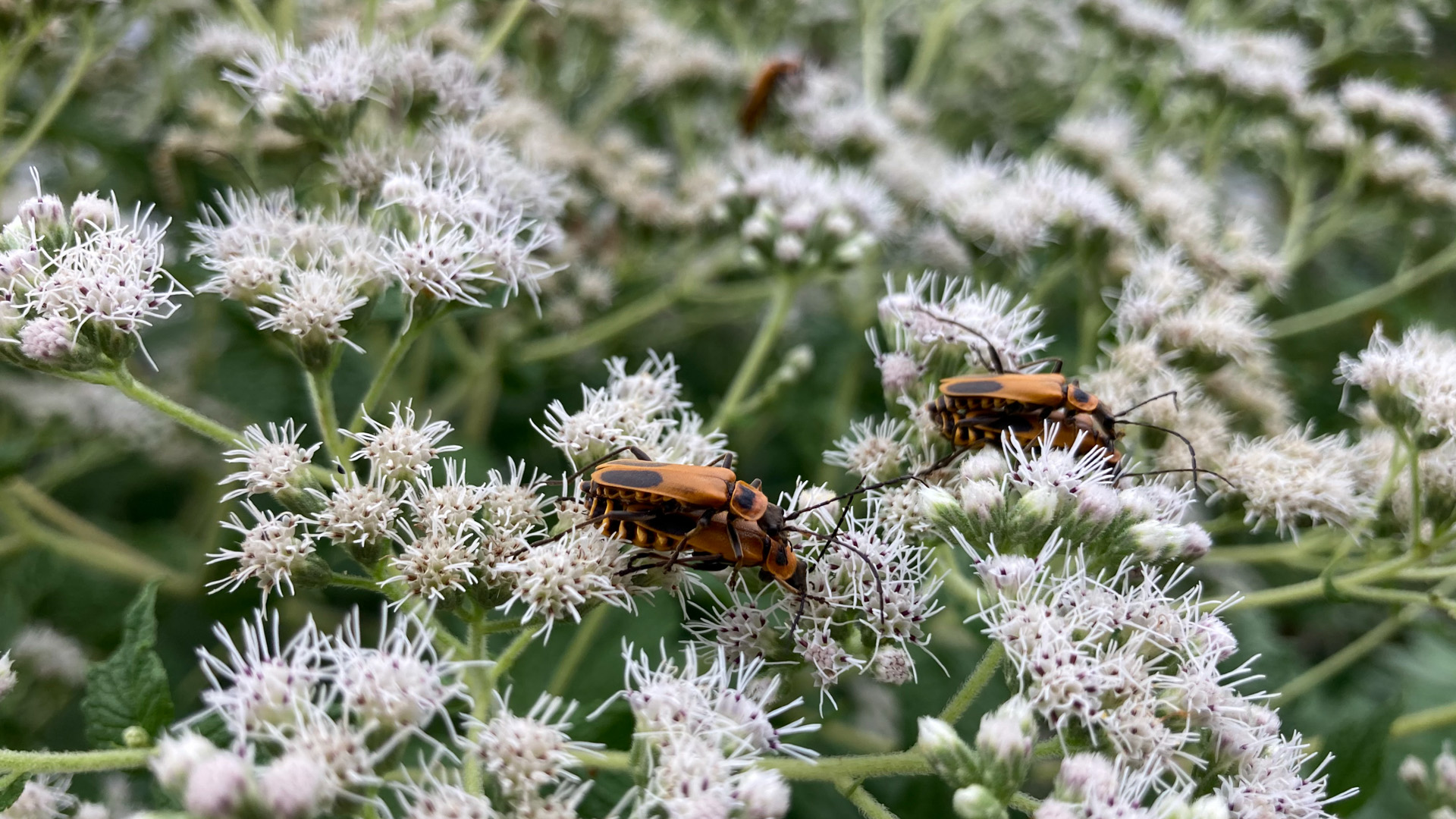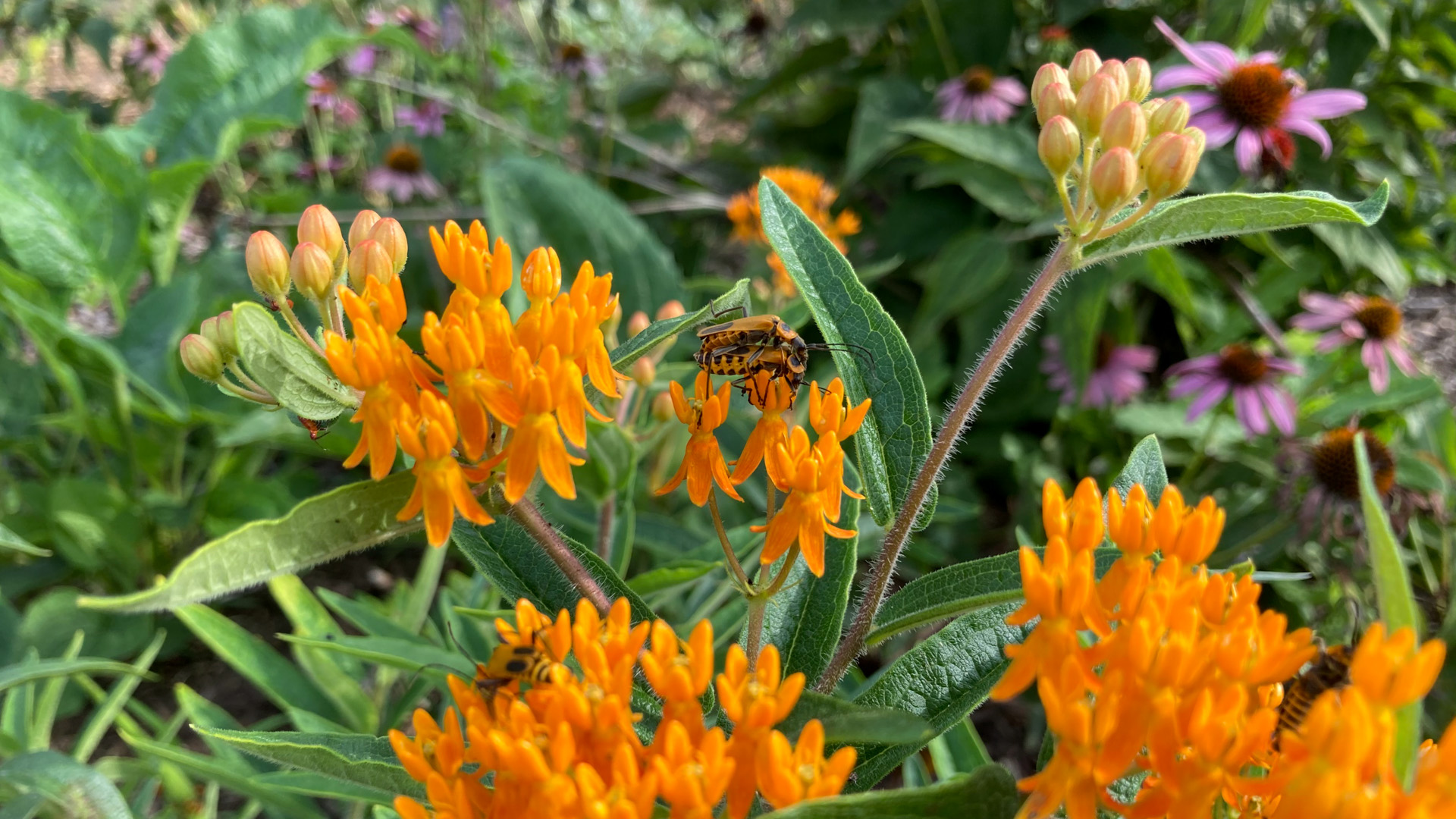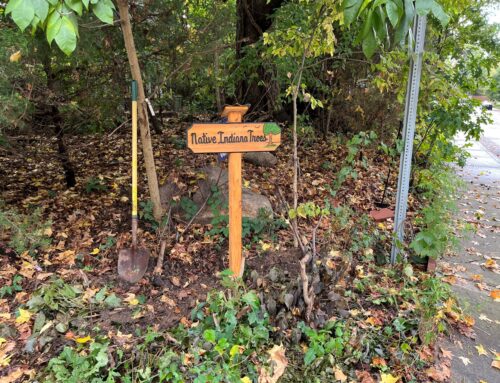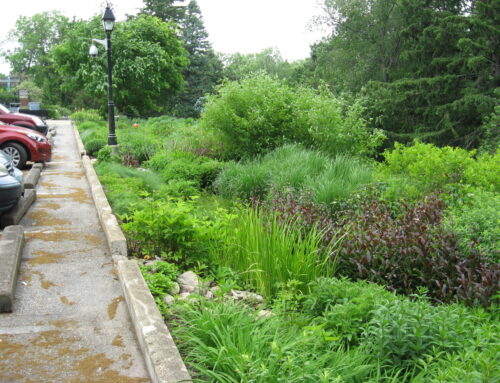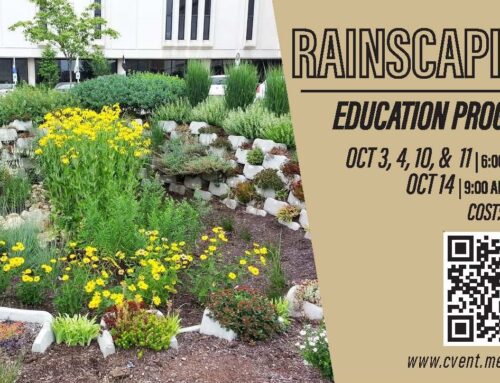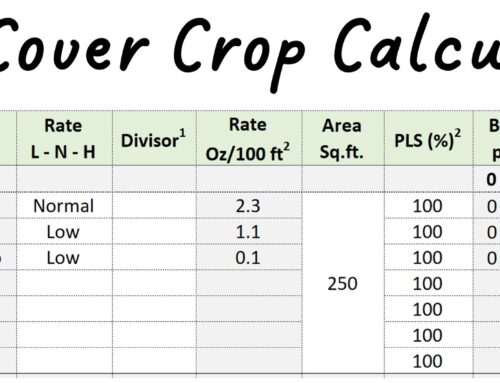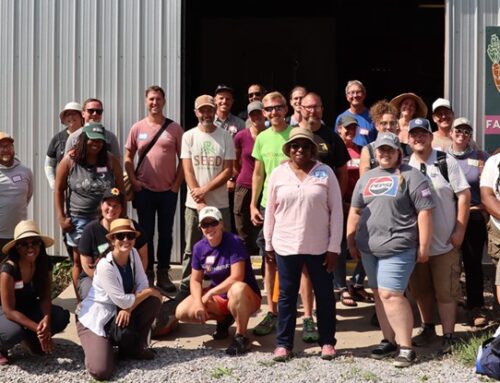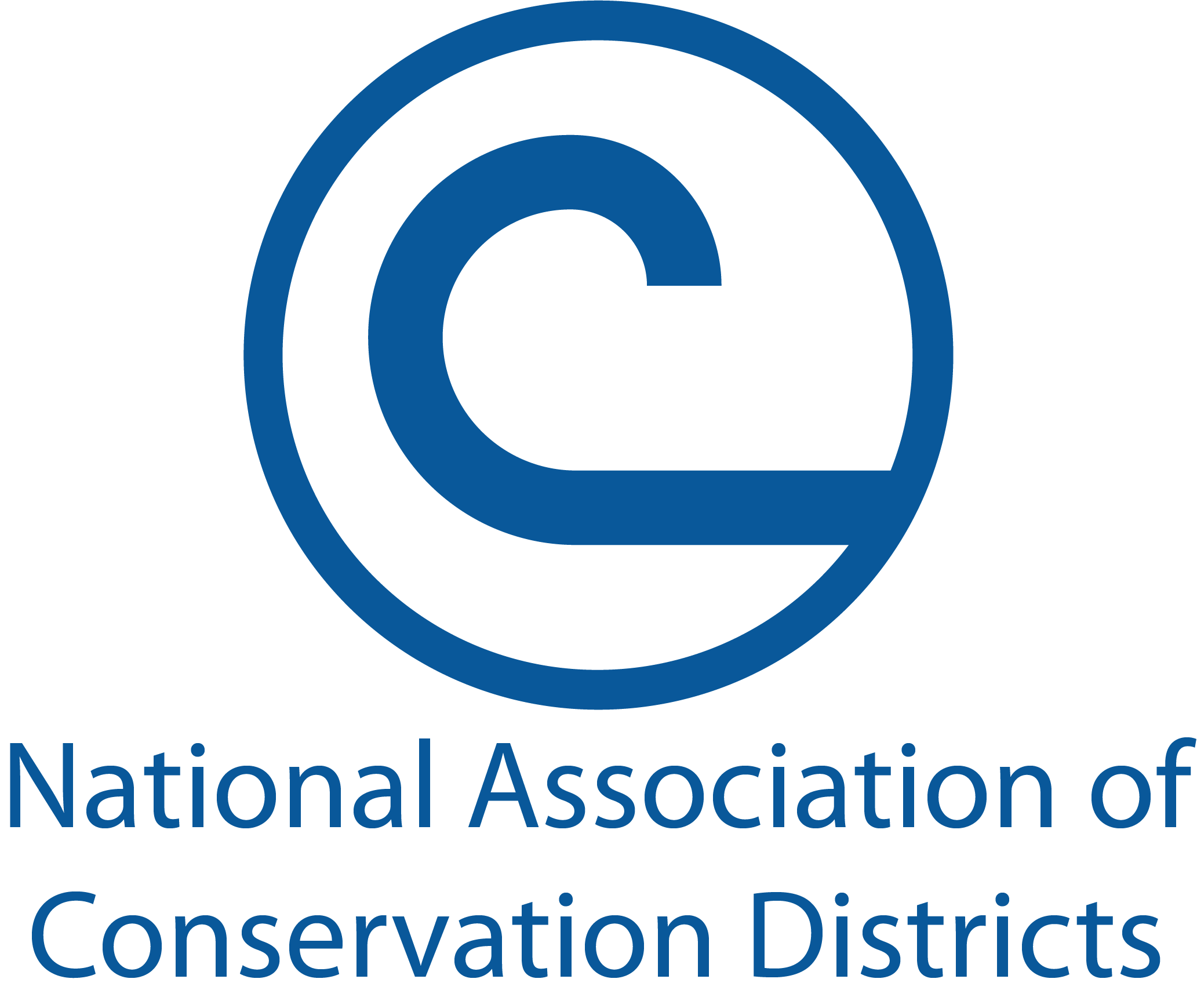 Background & Goals
Background & Goals
In 2020, the Marion SWCD was awarded a grant by the National Association of Conservation Districts (NACD) through their Urban Agriculture Conservation Initiative. This project was made possible through funding provided to NACD by the USDA Natural Resources Conservation Service.
The overall goal of the project is to use native plants to provide a perennial source of food, medicine, and valuable ecosystem services including biodiversity and critical habitat for beneficial and pollinating insects.
Our four main objectives:
- Partner with local non-profit farm Indy Urban Acres (IUA) to serve as a demonstration site for farmscaping with insectary strips, field borders, and hedgerows to enhance habitat for beneficial and pollinating insects on their urban farm.
- Assist IUA in the development of a native plant nursery to ensure a sustainable source of plant stock for current and future projects.
- Conduct training to support and educate local farmers, gardeners, environmental organizations, youth, and conservation agency partners on conservation practices and native plants.
- Increase SWCD district and IUA staff technical capacity in the application of native plants in urban agriculture.
Take a few minutes to watch a short video summary of project highlights.
Plans & Plantings
Our team had ambitious goals for this project. We intended to work with volunteer groups at Indy Urban Acres to remove invasives, prepare areas, and plant natives. The aerial map of the farm below shows the extent of the areas we planned to transform.
The spread of COVID-19 in the spring of 2020 resulted in some changes to our plans. We could no longer schedule volunteers to help with the plantings. We decided to proceed with our planting plans, and adjust as necessary throughout the summer. In the end, we accomplished the majority of our plant installation goals.
The primary tasks in spring 2020 for our team were to develop a planting plan for IUA’s native plant agriculture training site and a species list for their new native plant nursery project and plant sale. We used resources such as our own SWCD pollinator publication, Purdue Extension lists, NRCS documents, and permaculture resources to select plants. Many of these documents can be found at the bottom of our page on Native Plants.
At the IUA demonstration site, we planned insectary strips (plantings of natives close to crop beds), field borders, and tree/shrub polycultures with special attention given to the plants’ ecosystem services and site suitability.
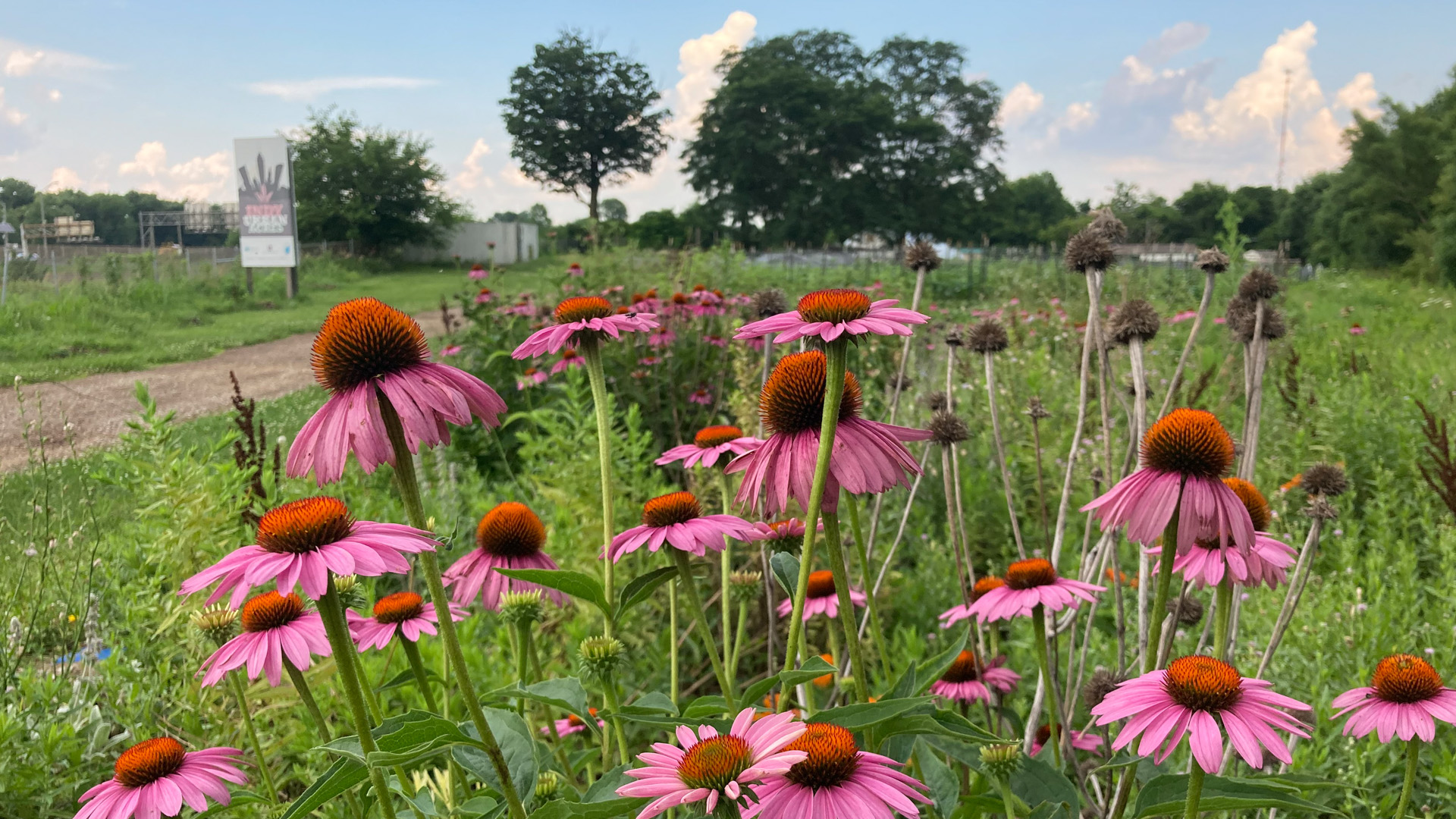
The IUA project site borders a highway and an Indiana State Department of Transportation right-of-way. In order to ensure that herbicide spraying on the right-of-way does not affect the new plantings, we registered the farm on Driftwatch – FieldWatch / BeeCheck. This is highly recommended for any Organic or specialty crop production projects, especially ones that are close to public property or conventional agricultural land.
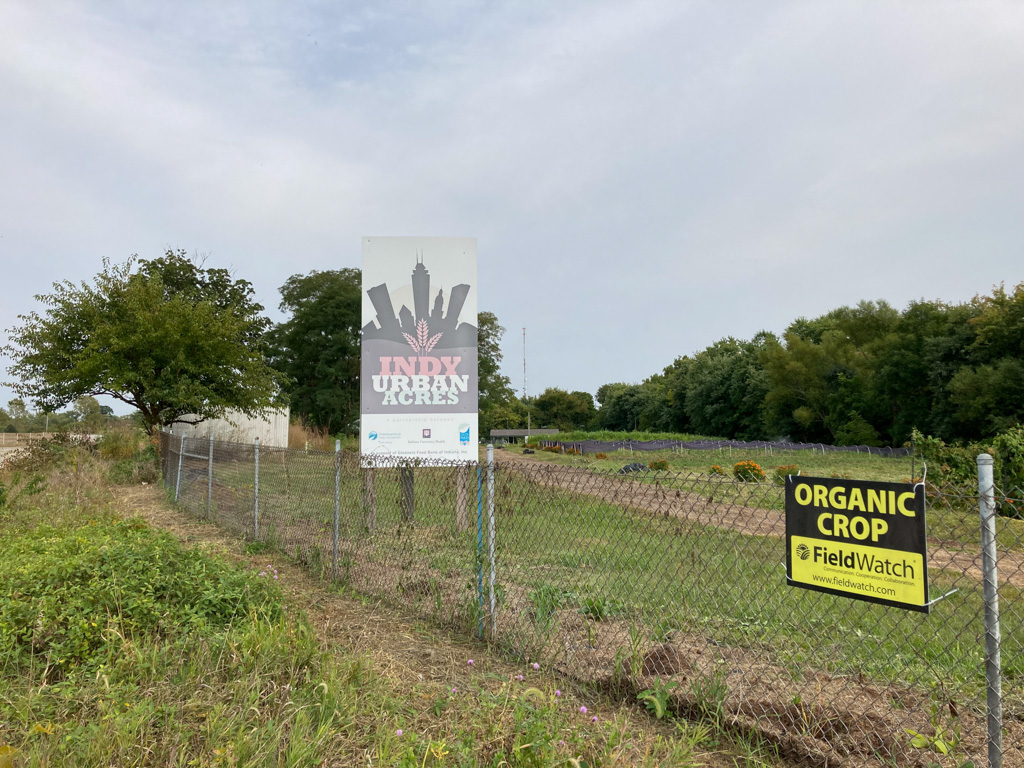
Watch this short video we created to introduce the project to the public.
Invasives removal & prep work
The first steps of the project were to remove invasives and undesirable grasses, woody species, and other weeds. There were many areas where bush honeysuckle, poison ivy, and nightshade vines needed to be removed or abated.
For in-field insectary strips, beds were weed-whacked, harrowed, mulched with a layer of 2mil thick Bio360 (a biodegradable weed barrier), and later mulched with straw after planting. Field border areas were weed-whacked, harrowed, mulched with a layer of Bio360, and mulched with wood fines.
Native plant installations completed at Indy Urban Acres
In total, around 3,500 wildflowers (herbaceous forbs) and grasses (graminoids) and 35 trees and shrubs were planted on the property.
Field borders
Our team completed work on a field border along the Northern fence line of the property (around 900 linear feet), and a field border strip along the Southern edge of the crop fields (around 600 linear feet), near the edge of a stand of existing trees near a small stream that runs the length of the property.
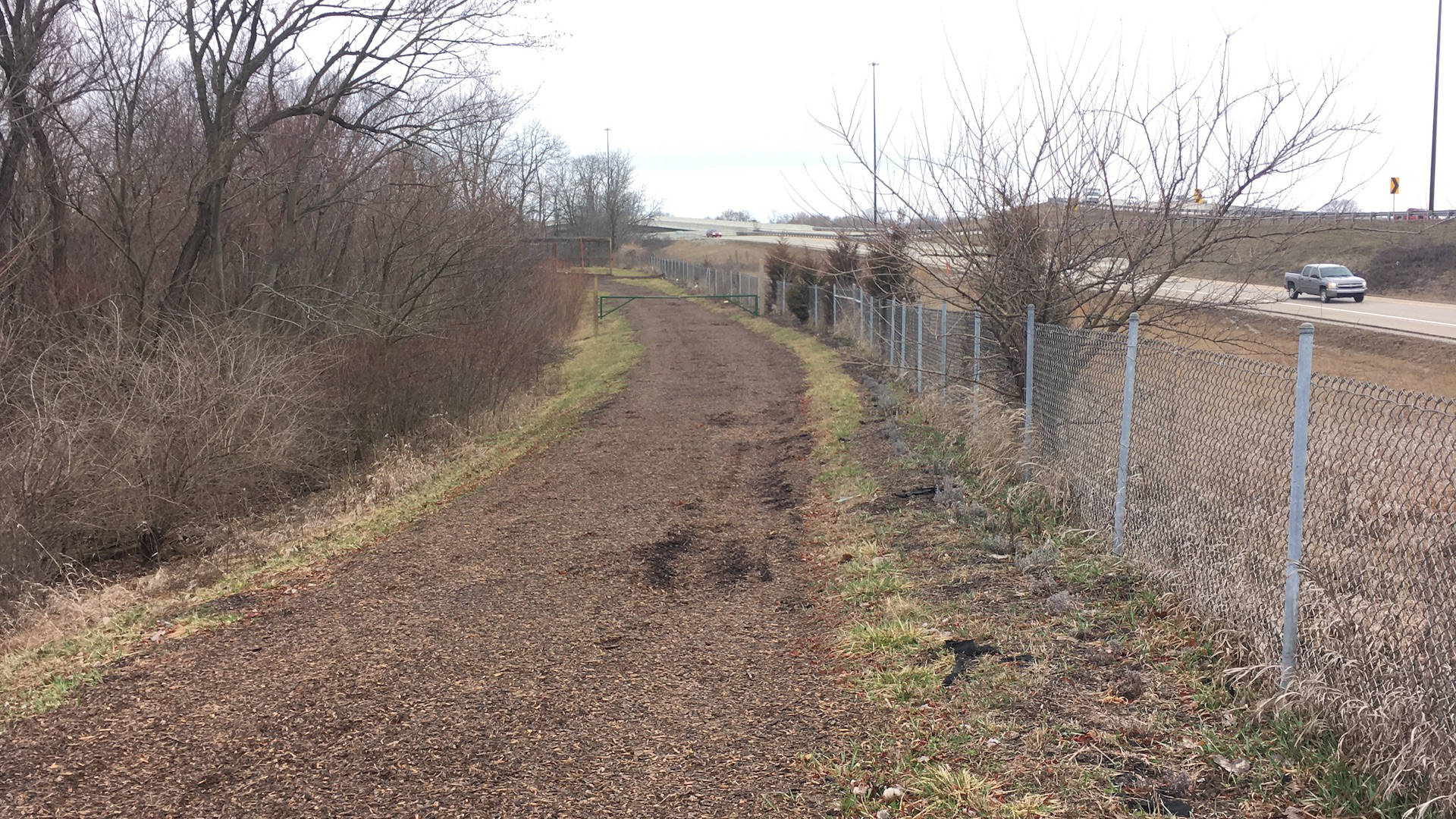
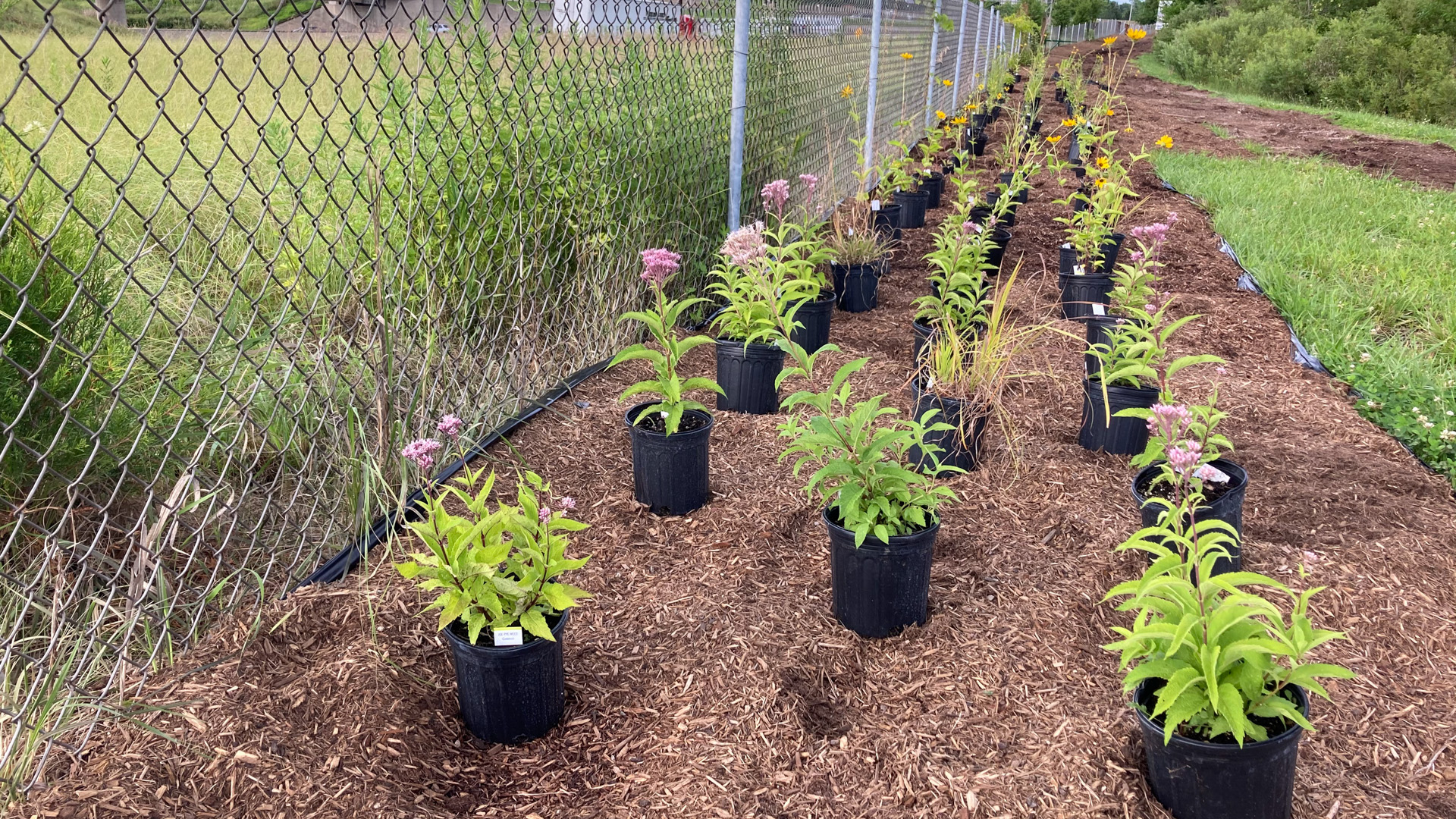
Above “before” and “after” images show the fenceline along the IUA property. Slide arrow to see transformation.
Left: Photo of the area before prep work – old landscaping fabric needed to be removed prior to harrowing, mulching, and planting the area. Right: The fenceline after mulching with Bio360 (biodegradable mulch) and bark fines, and ready to be planted.
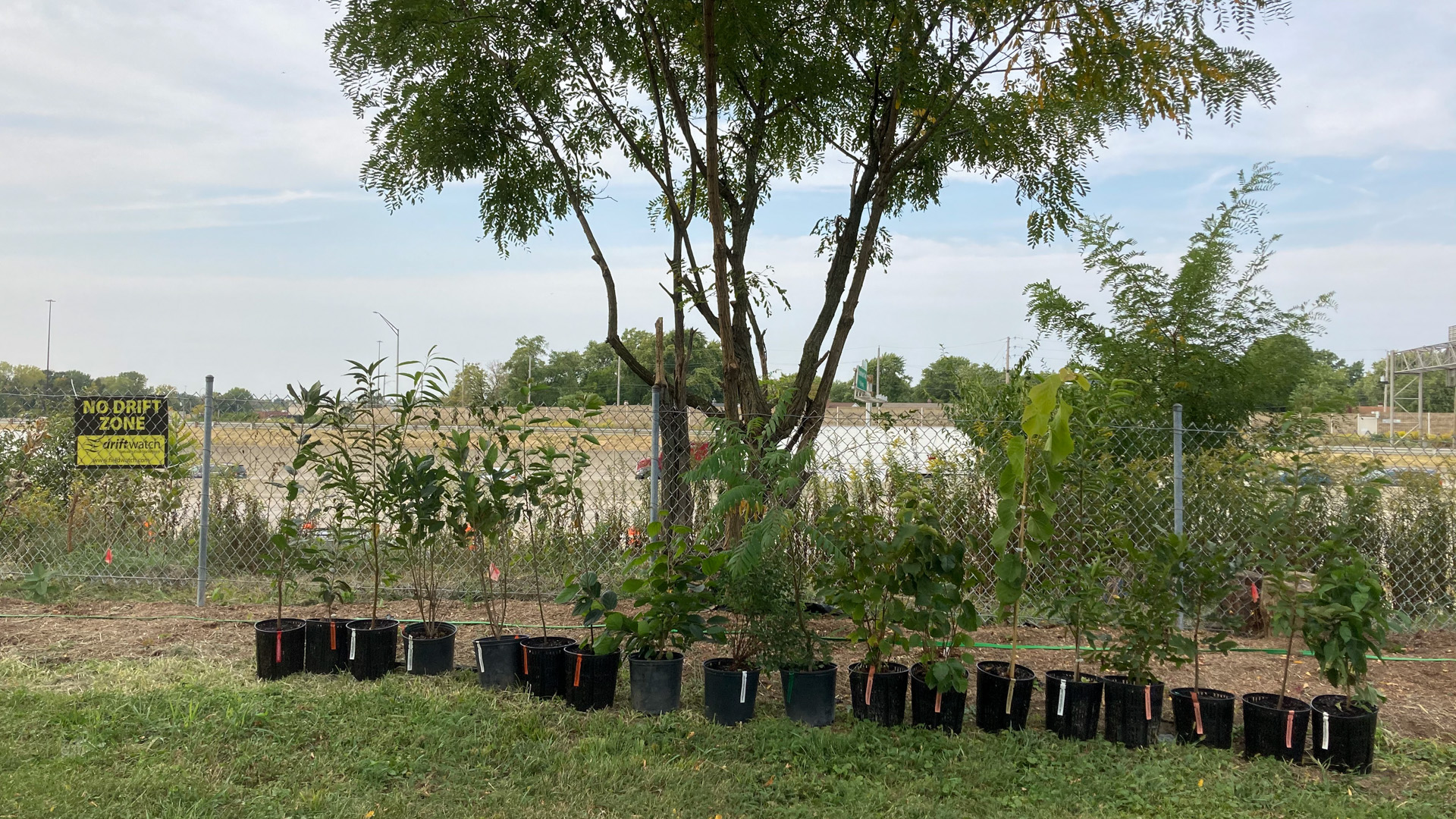
Insectary strips
In-field insectary strips for beneficial insects and pollinators were successfully installed, with approximately 480 native plants in strategic locations within the farm’s vegetable production field.
Stream-side
An additional area along the Southern end of the crop fields, near the stream bank, is being prepared for tree and native grass plantings in spring 2021 using silage tarps and cover cropping as a method of organic weed management. Bare root trees were ordered from the Indiana DNR and Missouri Conservation Department nursery stock.

Volunteers & Trainings
At the end of the summer, we were able to host a small number of volunteer group work days at the IUA farm site. Group sizes were limited to 10 people, volunteers wore face coverings, and practiced social distancing.
We want to extend a special “thank you” to all the volunteers that helped make this project possible. The plantings at the farm could not have happened without you. A total of around 245 volunteer hours were contributed on the farm. Groundwork Indy, Purdue Extension Marion County, Indiana Native Plant Society members, Garden Club members, were instrumental in assisting these plantings.
Our team was able to perform in-person small workshops at IUA and the Marion County SWCD Eagle Creek Demonstration Garden in which we shared technical guidance information about native plantings, performed hands-on demonstrations and plantings, and gave away native plants to participants.
Collaborations
Our team worked with two primary partner sites to establish native plantings of their own.
Groundwork Indy
With plants grown by the IUA nursery and trees purchased by the SWCD with NACD grant funds, Groundwork Indy planted native fruit trees (American plum, paw paw, serviceberry, and elderberry) and an understory of approximately 250 native plants along a public trail at their headquarters. To convert the existing turf grass to natives, Groundwork cut the sod, added a layer of Bio360 biodegradable mulch, added bark fines, and then planted the areas.
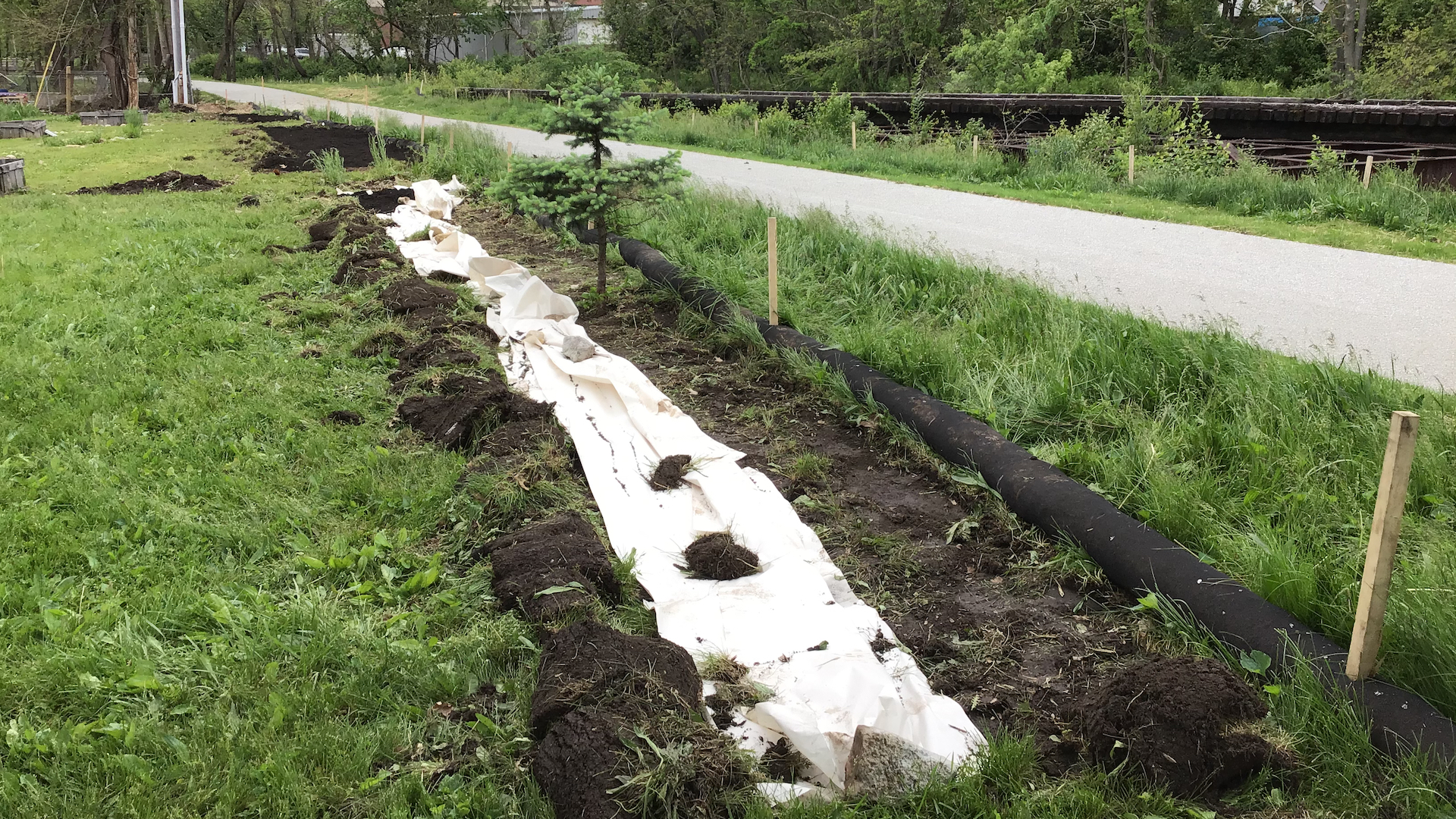
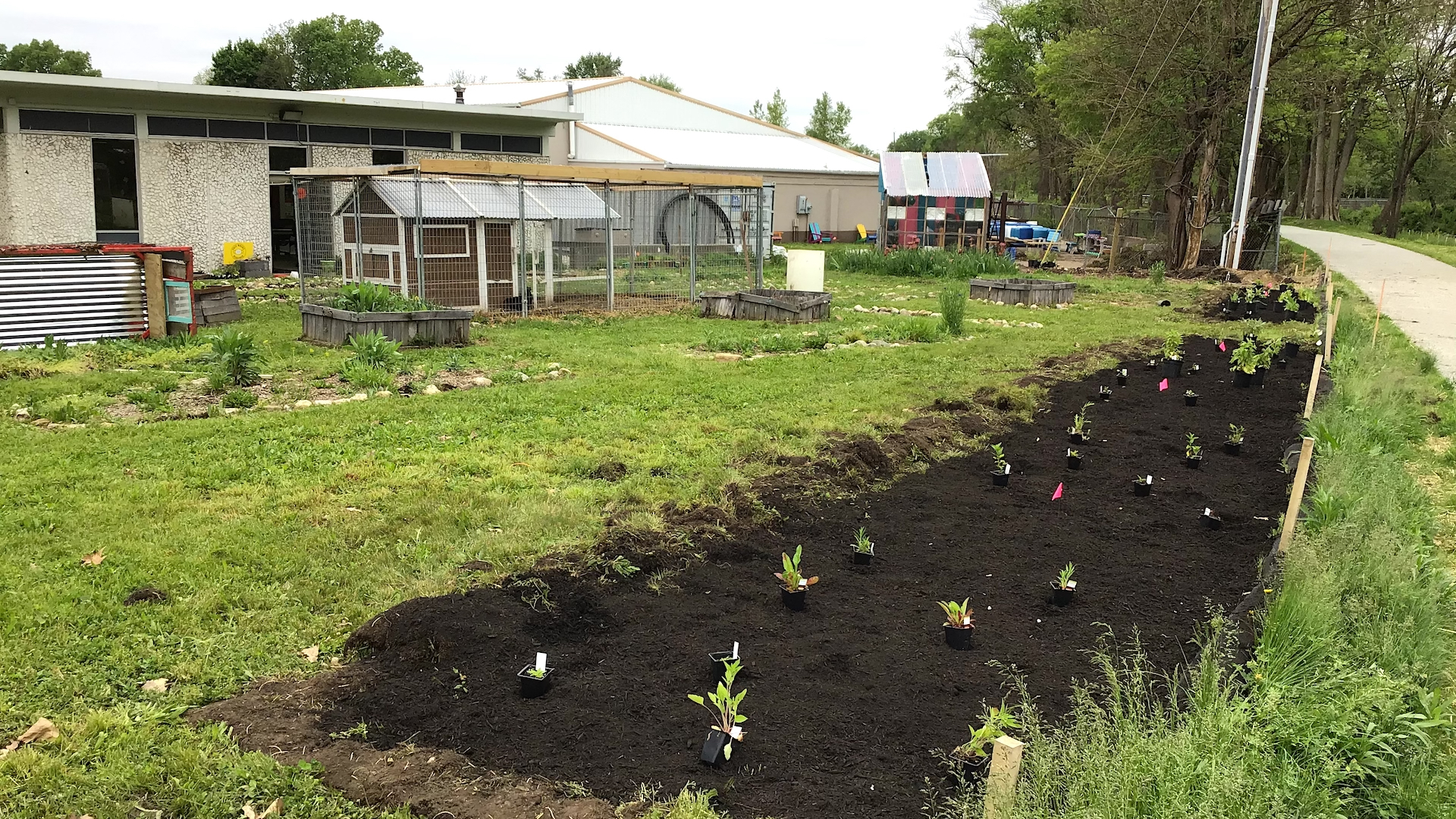
Barton Park
Our team coordinated with the City of Indianapolis Office of Land Stewardship to conduct a planting with IUA’s native wildflower stock at a local park property called Barton Park. Around 250 plants were installed in the floodplain and upland areas at this site in August 2020, and an additional 110 native trees were planted in the fall. Land Stewardship will install a split rail fence to protect the new plantings against persistent illegal dumping.
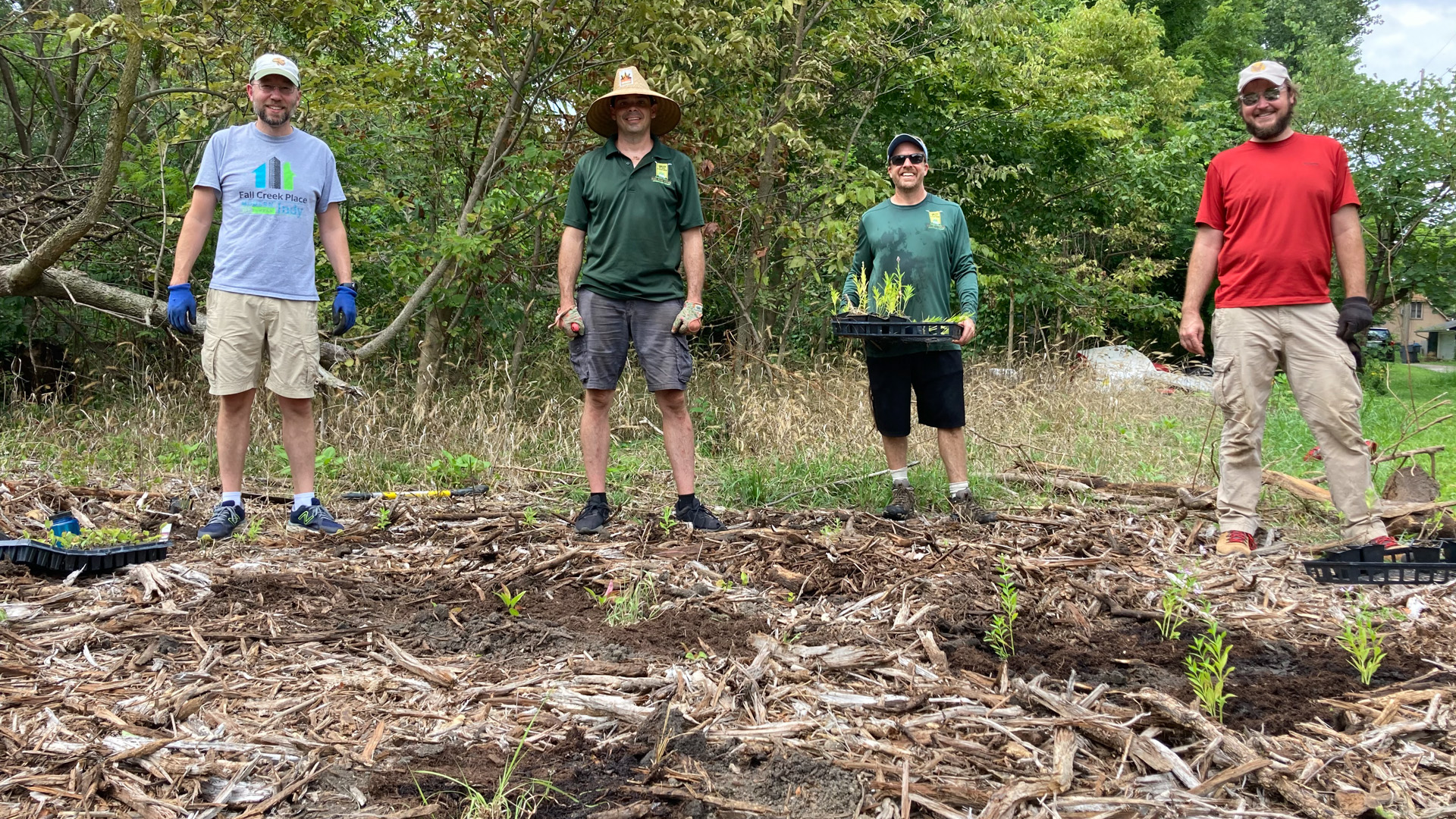
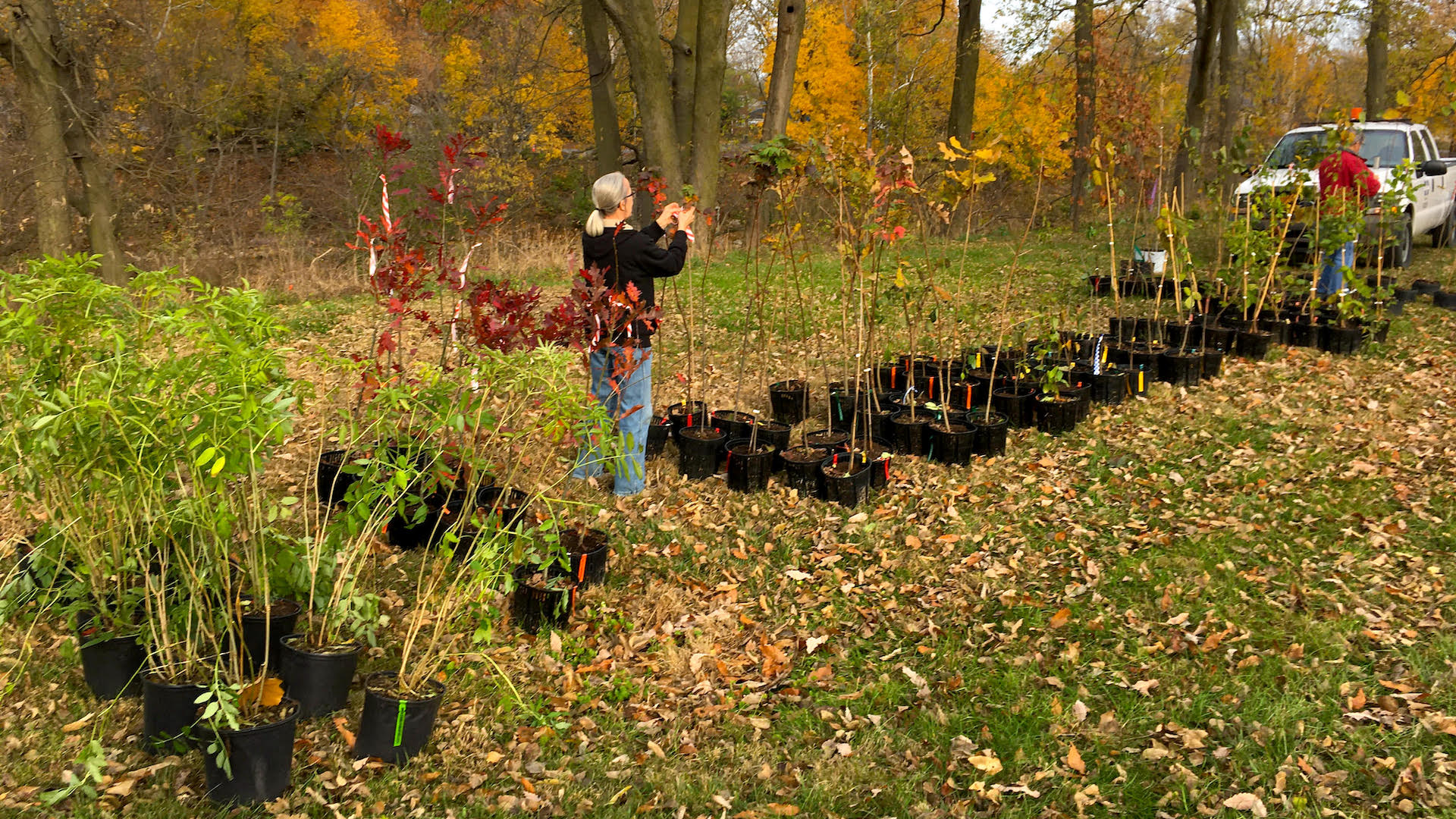
Eagle Creek Demo Garden
The SWCD’s demonstration garden at the Eagle Creek Park Gardens community garden plots has native perennial plant habitat that was planted in 2019, and was incredibly successful in attracting beneficial and pollinating insects to the garden in 2020. Soil Health Specialist Kevin Allison hosted workshops and walk-throughs of the garden to share how to establish these plantings, and the role of other soil health practices in food production systems.
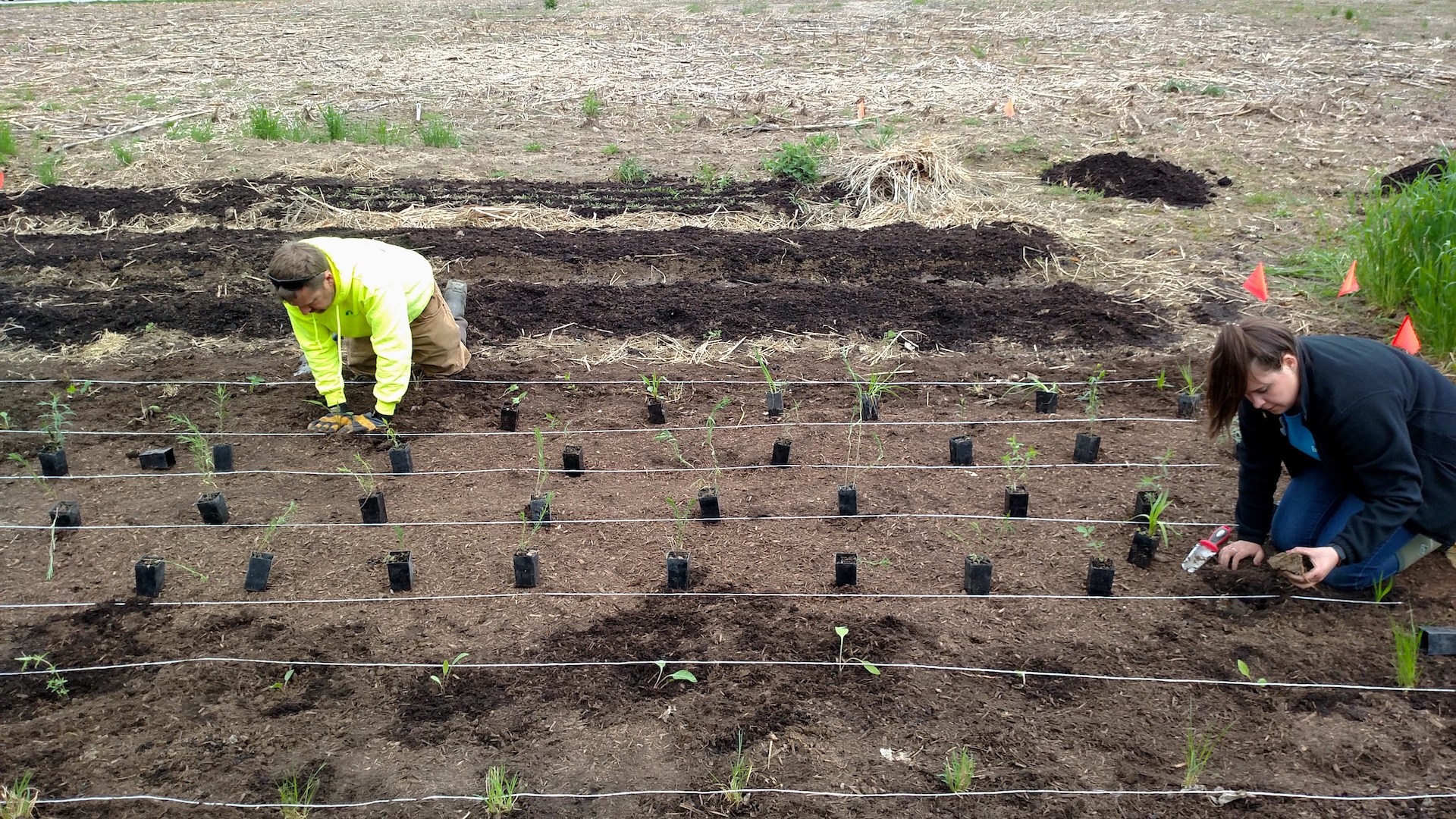
Marion County SWCD staff plant native wildflowers and grasses to create new habitat in 2019.
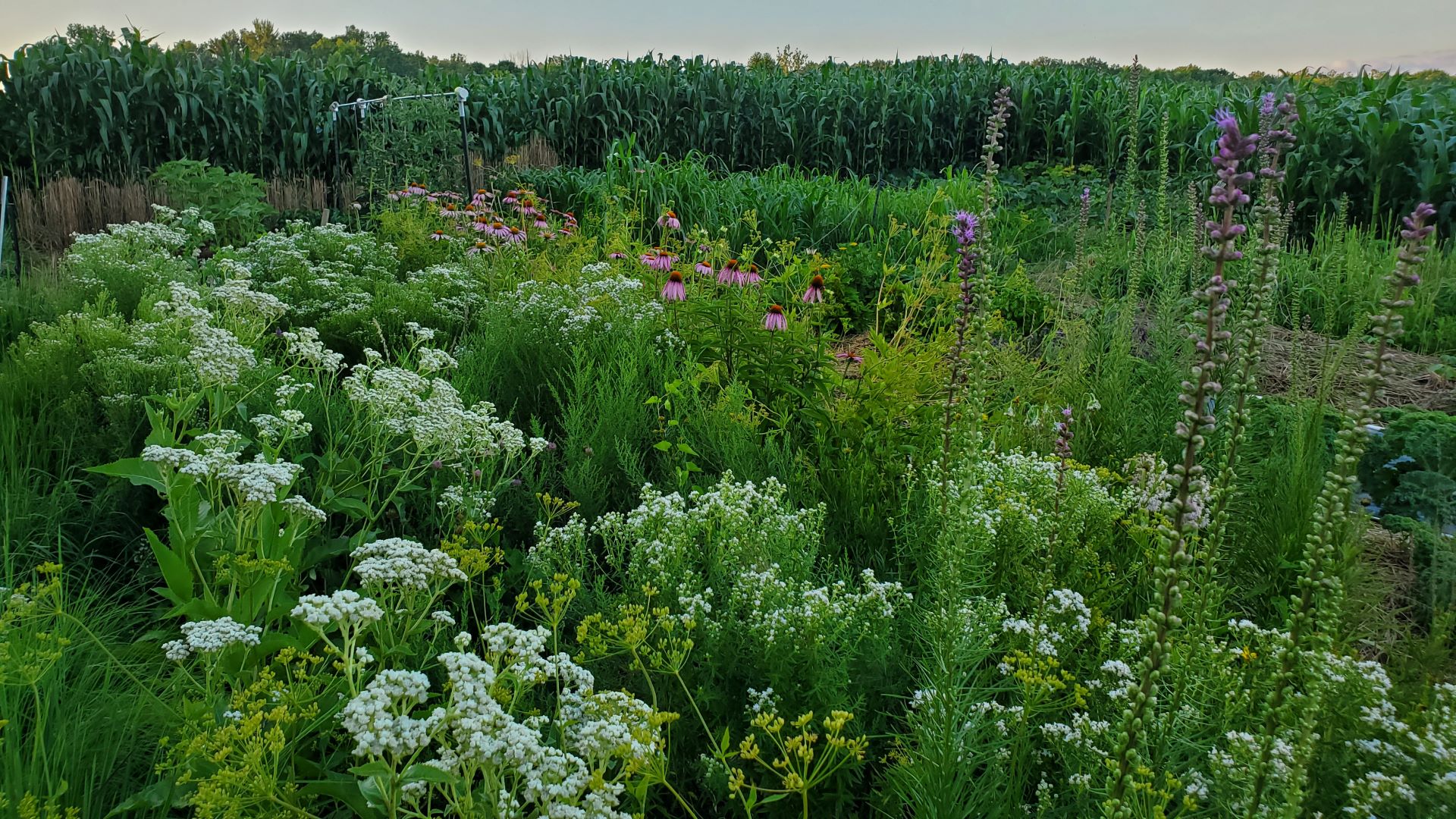
The native area has grown significantly in just one year. Photo above shows the habitat in flower in 2020.
Native plant nursery at Indy Urban Acres
Again, one of the project goals was to assist IUA in the development of a native plant nursery to ensure a sustainable source of plant stock for current and future projects.
We worked with IUA to ramp up plant stock production in their high tunnel for use in the project as well as for sale. IUA did a pickup-only plant sale in the spring and fall, which included many native wildflowers and grasses. In total, IUA sold close to 3,000 native plants, and more than 40 different species.
The top most purchased plants included Wild bergamot (Monarda fistulosa), Black eyed susan (Rudbeckia hirta), Wild columbine (Aquilegia canadensis), Common milkweed (Asclepias syriaca), New England aster (Aster novae-angliae), Obedient plant (Physostegia virginiana), Pale purple coneflower (Echinacea pallida), Purple coneflower (Echinacea purpurea), Foxglove beardtongue (Penstemon digitalis), Hairy beardtongue (Penstemon hirsutus), Tall bellflower (Campanula americana), Blue wild indigo (Baptisia australis), Great blue lobelia (Lobelia siphilitica), Prairie sundrops (Oenothera pilosella), and Switchgrass (Panicum virgatum).
Follow IUA’s facebook page for announcements in the spring about their 2021 sale.
Check their plant sale website directly in early spring for the release of new plant stock.
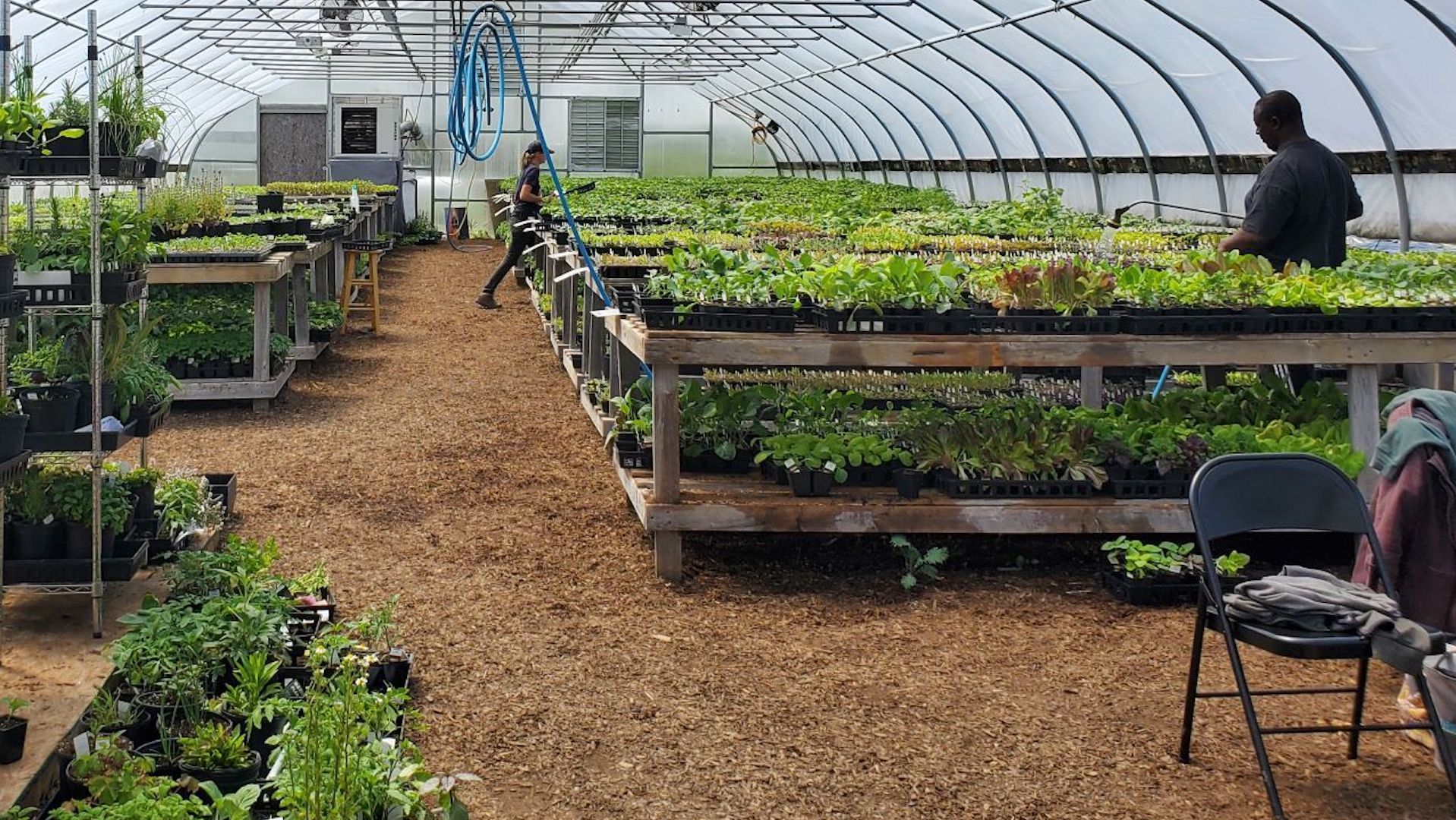
Plant identification & uses
Our team consulted with regional technical expert Kevin Tungesvick from Eco Logic on native plants which included a Q&A on the needs of specific species in a nursery.
We engaged with local native plant and herb specialist Greg Monzell of Wild Persimmon School of Wellness. Our team has learned about the uses and cultural aspects of a diversity of Indiana native plants, and gained insights on related value-added products that could be produced by local farms. We will develop resources from these conversations that can be used by growers.
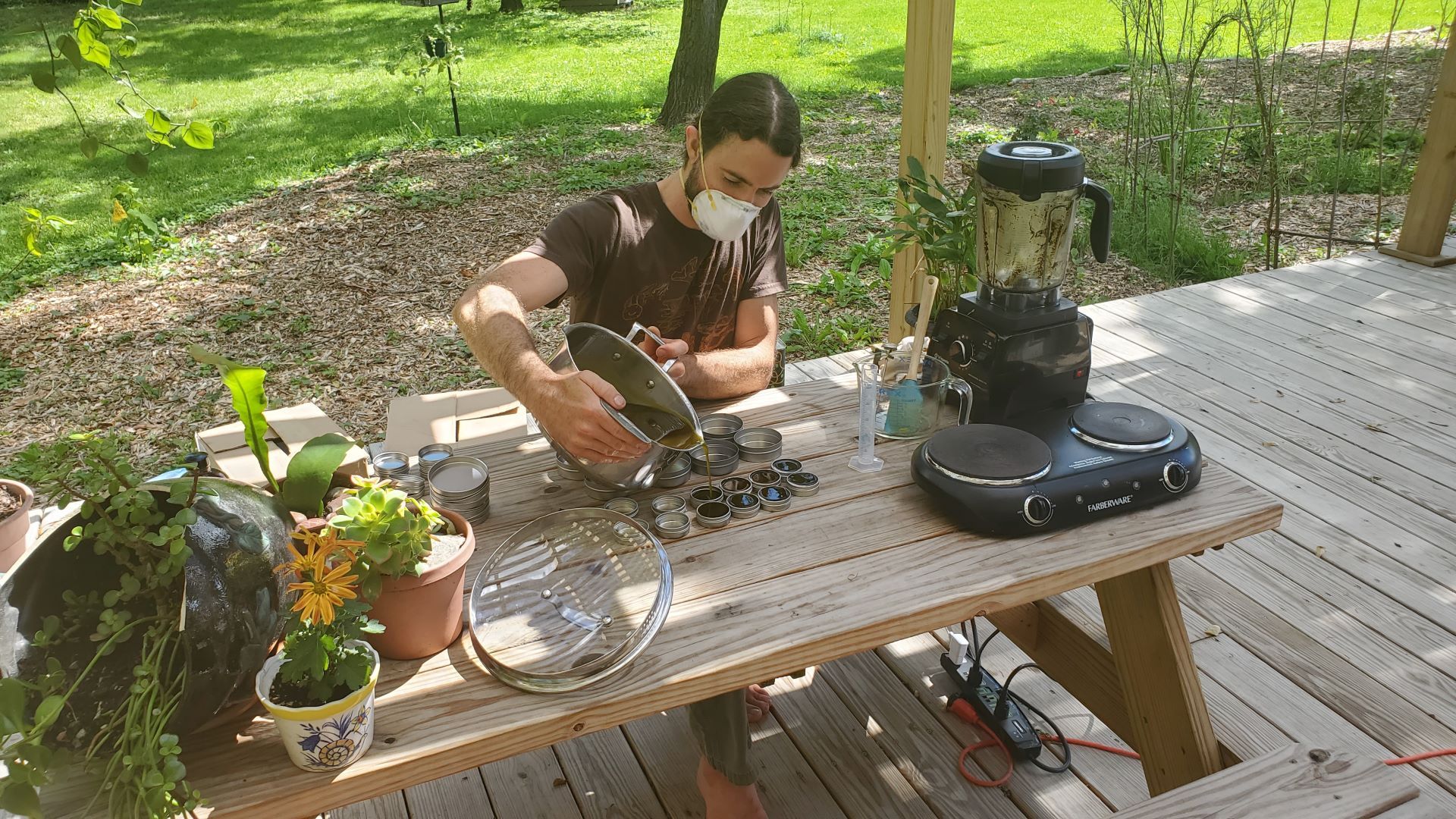
Insects
In the fall of 2020, we engaged with author and horticulturist Heather Holm to provide a free virtual workshop on the native beneficial insects that help control common vegetable crop pests. We learned about insect identification, habitat, predator-prey relationships, and on how to attract the good ones to farms and gardens.
We saw the role of beneficial and pollinating insects in action at IUA and our Eagle Creek demo garden this summer. It’s amazing to see that within only a couple of months of installing native plants, they are able to flower and provide useful forage for insects.
Resources
- For regular updates on workshops and resource materials, follow the Marion SWCD website and Facebook page.
- Insect management info & resources
- Indiana native plants info & resources


